

100+ SMART Travel Goals
This page features a curated list of travel goals. I created it as a source of inspiration for my 100 life goals project and wanted to share it with others in hopes of inspiring them to create their own goal list.
There is an overabundance of bucket list ideas circulating online that lack the necessary specificity, measurability, and time-bound nature to make them actionable goals. Therefore, I curated a list of SMART goals that are more specific, measurable, achievable, relevant, and time-bound.
Whether you're young or old, there's something on this list for everyone. So, read on to discover some of the best travel goals that can help you transform your life and achieve your travel dreams.
An important note before scrolling down:
The list below includes 100+ travel goal ideas, but if you're looking for a bigger list then download my book, The SMART Bucket List .

It includes a list of 1000+ SMART goal ideas from various categories, such as fitness, travel, personal growth, and more. Each goal is crafted to meet the SMART criteria, making it a valuable resource for anyone looking to create a truly actionable goal list.
Click here to download it for FREE . Additionally, you’ll get my Design Your Dream Year workbook, containing a proven step-by-step action plan to check off those big goals on your list.
* One more thing, if you decide to take part in any of the goals listed below, you do so entirely at your own risk. Some of the goal ideas listed here can be risky, so seek out guidance if you decide to try them out, especially the challenging ones.
With this in mind, let's rock and roll!!
SMART Landmark Travel Goals

Here are a few specific examples of SMART goals that you can set for this type of travel:
- Visit Machu Picchu within the next 2 years
- Visit the Great Wall of China within the next year
- Visit the Anne Frank House in Amsterdam within the next year
- Visit the Colosseum in Rome within the next year
- Visit the Petra archaeological site in Jordan within the next 3 years
- Visit the Alhambra palace in Granada, Spain within the next year
- Visit the Acropolis in Athens within the next year
- Visit the Palace of Versailles in France within the next year
- Visit the Great Pyramids of Giza in Egypt within the next year
- Visit the Sagrada Familia in Barcelona within the next year
- Visit the Taj Mahal in Agra, India within the next year
- Visit the Forbidden City in Beijing within the next year
- Visit the Palace of Westminster in London within the next year
- Visit the Palace of the Grand Master of the Knights of Rhodes within the next year
- Visit the Notre Dame Cathedral in Paris within the next year
- Visit the Christ the Redeemer statue in Rio de Janeiro within the next year
- Visit the Acropolis in Athens, Greece within the next year
- Visit the ancient city of Pompeii in Italy within the next year
- Visit the Golden Gate Bridge in San Francisco within the next year
- Visit the Tower of London within the next year
- Visit the Vatican City in Rome within the next year
- Visit Machu Picchu in Peru within the next year
- Visit the Hagia Sophia in Istanbul within the next year
- Visit the temples of Angkor Wat in Cambodia within the next two years
- Travel to Australia to see the Great Barrier Reef within the next three years
- Visit the Galapagos Islands within the next three years
- Visit Iceland to see the Northern Lights within the next two years
- Visit the Van Gogh Museum in Amsterdam within the next year
- Travel to Australia to see the Great Barrier Reef within the next three years, booking the trip by the end of this year
SMART Luxury/Alternative Travel Goals

- Stay in a houseboat in Amsterdam within the next year
- Stay in a yurt in Mongolia within the next 3 years
- Stay in an igloo hotel in Lapland within the next 2 years
- Spend a week on a houseboat on the backwaters of Kerala within the next 2 years
- Stay in a castle hotel in Scotland within the next 2 years
- Stay in an eco-lodge in the Amazon Rainforest within the next 3 years
- Spend a week in a treehouse in Costa Rica within the next 3 years
- Spend a week in a yurt in Mongolia within the next 3 years
- Stay in a traditional ryokan in Japan within the next 3 years
- Spend a week on a houseboat on Lake Powell within the next 3 years
- Stay in an ice hotel in Sweden within the next 4 years
- Stay in an overwater bungalow in Bora Bora within the next 2 years
- Spend a week in a beachfront villa in Bali within the next 2 years
SMART Epic Journeys Goals
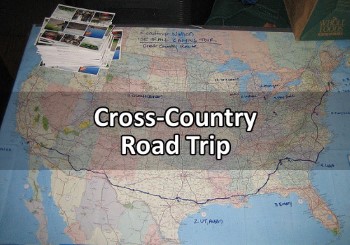
Here are a few examples of SMART goals in this specific area of travel:
- Take a road trip along the Pacific Coast Highway from San Francisco to San Diego within the next year
- Take a road trip through the Scottish Highlands within the next 3 years
- Go on a road trip through the Australian Outback within the next 2 years
- Take a road trip along the California coast with the family during the kids' spring break
- Take a roadtrip trip to explore national parks in Utah next year
- Take a road trip to Yellowstone National Park during the summer of next year
- Take a road trip to explore the Grand Canyon in Arizona within the next 2 years
- Take a train journey on the Trans-Siberian Railway within the next 5 years
- Take a cross-country rail trip across the United States within the next 2 years
- Take a family trip to Hawaii to learn about Hawaiian culture within the next 3 years
- Go on a backpacking trip in the Andes Mountains within the next 4 years
- Spend a week exploring the ancient ruins of Athens within the next 2 years
- Spend a month exploring the Galapagos Islands within the next 4 years
- Explore the European countryside via rail, taking a scenic route from Amsterdam to Vienna and visiting at least 5 other countries along the way, within the next 3 years
- Take a cruise to Alaska within the next three years
- Cruise down the Nile River within the next 5 years
- Take a river cruise down the Danube within the next 2 years
- Spend a week on a cultural immersion program in Morocco within the next 3 years
- Take a luxury rail journey on the Eastern and Oriental Express from Singapore to Bangkok, including a private cabin, fine dining, and sightseeing, within the next 2 years
- Take a solo rail trip to Japan, visiting Tokyo, Kyoto, and other cities on the Shinkansen bullet train network within the next 18 months
- Take a solo road trip to Australia, exploring the vast countryside from Perth to Sydney on the Indian Pacific, within the next 2 years
- Take a road trip to New Orleans during Mardi Gras, joining in the festivities and experiencing the city's rich culture and history, within the next 2 years
- Take a scenic cruise through the Norwegian fjords, stopping at picturesque towns and villages along the way, within the next 2 years
- Complete a multi-day trek to Everest Base Camp in Nepal, reaching an altitude of at least 17,500 feet, within the next 3 years
SMART Travel Experiences Goals

Here are some examples of SMART goals that you can set for this type of travel:
- Go on a wine-tasting tour of Napa Valley within the next year
- Go on a safari in Kenya within the next 3 years
- Go on a whale watching tour in Alaska within the next year
- Spend a week on a meditation retreat in Bali within the next 3 years
- Spend a week on a yoga retreat in India within the next 3 years
- Spend a week volunteering in a rural village in Tanzania within the next 4 years
- Go on a Disney Land vacation with the family within the next 2 years
- Go on a surf trip in Hawaii within the next 2 years
- Visit the Blue Lagoon in Iceland within the next year
- Spend a week skiing in the Swiss Alps within the next 2 years
- Take a photography tour of Iceland within the next 3 years
- Take a language immersion course in a foreign country within the next year
- Go on a food tour of Italy within the next 2 years
- Go on a culinary tour of Japan within the next 2 years
- Go on a glacier hiking tour in Iceland within the next 2 years
- Attend a traditional tea ceremony in Japan, learning about the history and cultural significance of the practice, within the next year
SMART Festivals & Celebration Goals

Here are a few examples of SMART goals that you can set for this type of travel:
- Attend the Carnival in Rio de Janeiro within the next 3 years
- Attend the Dia de los Muertos celebrations in Mexico within the next 2 years
- Attend the Holi Festival in India within the next 2 years
- Attend the Mardi Gras celebration in New Orleans within the next year
- Attend the Oktoberfest in Munich, Germany, experiencing the food, music, and beer culture of this iconic event, within the next 2 years
- Attend the Full Moon Party in Thailand within the next 3 years
- Attend the Running of the Bulls in Pamplona within the next 2 years
- Attend the next Summer Olympics
- Attend the Burning Man Festival in Nevada, USA, within the next 3 years, experiencing the art, music, and community of this unique event
- Visit Rio de Janeiro during Carnival, watching the parade and experiencing the vibrant atmosphere, within the next 18 months
- Explore the colorful and elaborate Day of the Dead celebrations in Mexico City, visiting museums, markets, and cemeteries, within the next year
- Attend the Coachella music festival in California, USA, watching live performances by my favorite artists and discovering new ones, within the next 12 months
- Visit the Harbin International Ice and Snow Festival in China, admiring the incredible ice sculptures and enjoying winter sports, within the next 3 years
- Take a trip to India during Diwali, experiencing the vibrant lights, music, and food of the country's biggest festival, within the next 2 years
- Attend the La Tomatina festival in Bunol, Spain, participating in the tomato fight and experiencing the local culture, within the next 18 months
- Take a trip to Thailand during Songkran, experiencing the traditional water festival and learning about the country's culture and history, within the next year
- Attend the Sundance Film Festival in Utah, USA, watching independent films and meeting filmmakers and actors, within the next 12 months
- Visit Edinburgh, Scotland, during the Fringe Festival, experiencing the world's largest arts festival and enjoying the city's history and architecture, within the next 2 years
- Attend the Holi Festival of Colors in India, experiencing the colorful powders and music of this joyous celebration, within the next 18 months
- Take a trip to Japan during the Cherry Blossom Festival, admiring the stunning blooms and experiencing the country's unique culture and food, within the next 3 years
- Attend the Rioja Wine Harvest Festival in Spain, experiencing the wine-making process and enjoying the food, music, and culture of the region, within the next year
- Attend a major international music festival, such as Coachella or Glastonbury, within the next 2 years, seeing at least 10 different artists perform live
SMART Romance Travel Goals

- Take a honeymoon trip to Bora Bora and stay in an overwater bungalow for at least a week within the next year
- Renew our vows on a secluded beach in the Caribbean, with a private ceremony and a romantic dinner on the sand within the next 2 years
- Plan a surprise weekend getaway to a cozy cabin in the woods, complete with a fireplace and hot tub, within the next 6 months
- Book a romantic river cruise in Europe, visiting at least 4 different countries and enjoying gourmet dining and entertainment along the way within the next 3 years
- Take a couples' cooking class in Tuscany, Italy, learning to make authentic pasta and enjoying local wine and cheese within the next 18 months
- Spend a week in Bali, Indonesia, indulging in spa treatments and enjoying the beautiful beaches and temples within the next 2 year
- Take a road trip along the California coast, stopping at romantic destinations such as Big Sur and Napa Valley within the next year
- Plan a surprise date night in Paris, France, including a private boat ride on the Seine and a romantic dinner at a Michelin-starred restaurant within the next 6 months
- Attend a destination wedding in Mexico and extend the trip to enjoy a romantic beach getaway, with activities such as snorkeling and horseback riding within the next year
- Book a luxury safari in Tanzania, staying in a private tented camp and seeing the Big Five animals in their natural habitat within the next 3 years
- Take a romantic hot air balloon ride over the Napa Valley, followed by a private wine tasting and gourmet lunch within the next 2 years
- Plan a surprise weekend trip to New York City, including tickets to a Broadway show and a carriage ride through Central Park within the next 6 months
- Take a couples' yoga retreat in Costa Rica, practicing mindfulness and relaxation techniques in a beautiful natural setting within the next 18 months
- Visit the ancient ruins of Machu Picchu in Peru, hiking the Inca Trail and enjoying a romantic dinner with a view of the mountains within the next 3 years
- Book a private yacht charter in the Greek Islands, exploring the crystal clear waters and enjoying sunset dinners on deck within the next 2 years
Other Travel Goals

Here are a few more examples of SMART goals that you can set in the area of travel:
- Visit at least 10 countries in the next 5 years
- Visit three new countries within the next two years, spending at least two weeks in each country
- Visit all seven continents before turning 40, completing the goal within the next 10 years
- Achieve status as a top-tier frequent traveler with a major rail company by logging at least 50,000 miles in the next 12 months
- Visit every single station on the New York City Subway system by the end of next year, taking a picture at each stop as evidence
- Plan and book a multi-generational family vacation by rail, including grandparents, parents, and children, to a scenic destination in the next 2 years
- Visit the Seven Wonders of the World, including the Great Wall of China, the Taj Mahal, and the Colosseum, within the next 10 years

More Goal Ideas?

Uncover Your WHY

Read The Art of Fully Living

Set Better Goals

Uplevel Your Game

Explore The Roadmaps

Enter your email below. It’s FREE
× Uncover Your Purpose Get my ‘Start With Why’ workbook to align with your deepest goals and purpose Just enter your email below. It’s FREE
- EN - English
- PT - Portuguese
- ES - Spanish
- How it works
- Become a Host
- Download the app
Top Destinations
- United States
- United Kingdom
What type of experience are you looking for?
- Non-Profit School
- Permaculture project
- Eco Village
- Holistic Center
- Guest House
- How Worldpackers works

Learn from the most experienced travelers of the community
Traveling with worldpackers, planning and budgeting for travel, make a living while traveling as a lifestyle, travel with worldpackers.
- Using Worldpackers
- Work exchange
- Social impact
- Plan your trip
- Women traveling
- Budget travel
- Solo travel
- Language learning
- Travel tips
- Get inspired
- Digital nomads
- Travel jobs
- Personal development
- Responsible travel
- Connect with nature
Top destinations
- South America
- Central America
- North America
- More destinations
- WP Life WP Life
- Exclusive discounts Discounts
Travel goals: inspiring ideas and how to achieve them
Understand the power of setting travel goals, get inspired with bucket list ideas and learn the steps you need to take to achieve your goals and have amazing experiences.
Worldpackers Worldpackers
Jul 31, 2023

Setting travel goals is a powerful way to transform your wanderlust into tangible experiences. By creating a list of desired destinations and activities, you can turn your travel dreams into reality . In this blog post, we will delve into the benefits of setting such goals and how they can help shape unforgettable journeys.
We will provide inspiration for crafting your own unique travel goals list , featuring must-see destinations and off-the-beaten-path adventures. Additionally, we'll share valuable tips on how to set achievable targets.
Finally, discover how Worldpackers can serve as an essential resource in achieving your long-term objectives by connecting you with incredible opportunities across the globe with free accommodation. Whether it's scuba diving in exotic locations or experiencing once-in-a-lifetime cultural celebrations, this platform makes travel easier than ever before.

The power of setting travel goals
Traveling is amazing, but setting specific goals can make your trips even more meaningful. Envisioning your ideal getaways and activities can lead you on a voyage of self-exploration, growth, and remarkable experiences.
Setting travel goals not only adds purpose to your adventures but also gives you direction in planning your trips. It's easy to get overwhelmed by all the amazing places out there waiting to be explored. Having clear objectives helps narrow down the options while keeping you motivated throughout the entire process.
Create your travel bucket list
To get started on setting your travel goals, begin by creating a bucket list filled with experiences that excite and inspire you . This could include anything from visiting all seven continents to attending the world's most renowned festivals.
Remember that there's no one definitive answer; this is about building up a journey that truly reflects your identity. Your bucket list should be connected to your personal interests and passions.

Inspiring travel goals to pursue
For unforgettable experiences, choose travel goals that resonate with your passions and aspirations. Here are some inspiring travel goals to consider:
- Learn another language: Immerse yourself in a foreign culture by learning its language - it's one of the best ways to truly connect with locals and gain deeper insights into their way of life.
- Go on an epic road trip: Hit the open road and discover hidden gems along scenic routes like these iconic drives around the world.

- Travel in a motorhome or campervan: Explore remote destinations at your own pace with flexibility and freedom.
- Volunteer abroad: Make a positive impact by volunteering in your own country or overseas through organizations like Worldpackers , a platform connecting travelers with unique work exchange opportunities.
- Learn to surf : Catch some waves and learn a new skill in destinations like Australia, Hawaii, or Costa Rica.
- Walk the Camino de Santiago: Experience a unique blend of history, culture, and spirituality on the ancient pilgrimage route across Spain and some neighboring countries.

- See Antarctica: Embark on a once-in-a-lifetime adventure on an Antarctic expedition cruise to witness breathtaking landscapes and diverse wildlife.
- Visit all the UNESCO World Heritage Sites: Travel to iconic landmarks such as Machu Picchu, Angkor Wat, or Petra.
- Experience an epic train journey: Embark on unforgettable rail adventures like the Trans-Siberian Railway.
- See wildlife in their natural habitat: Experience awe-inspiring encounters with animals such as gorillas in Uganda or whales off Iceland's coast - witnessing these majestic creatures up close will leave lasting impressions.

- Learn to cook other country's cuisine: Expand your culinary skills and taste authentic local dishes by taking cooking classes while traveling.
- Eat at a Michelin-starred restaurant: Savor world-class dining experiences at renowned establishments around the globe.
- Climb a famous mountain: Tackle challenging peaks like Kilimanjaro or trek to Everest Base Camp for unparalleled views and personal achievement.

- Learn to scuba dive: Exploring the breathtaking underwater world, scuba diving offers a thrilling adventure filled with vibrant marine life and stunning coral reefs.
- See the World Cup: Immerse yourself in the electrifying atmosphere of the world's most celebrated sporting event.
- See the Northern Lights: Embark on a mesmerizing journey to witness nature's most awe-inspiring light show.
- Backpacking around Latin America, Asia, Europe, Oceania or Africa: embarking on a backpacking journey through these diverse continents offers an opportunity to immerse yourself in a tapestry of cultures, languages, and landscapes.
Tips for achieving your travel goals
Setting travel goals is essential to make your dreams a reality. However, achieving them requires dedication, planning, and perseverance . Here are some tips to help you accomplish your travel aspirations:
Research and plan
The first step in achieving any goal is thorough research and planning. Gather information about the destinations you want to visit , understand local customs and culture, identify must-see attractions or experiences, and figure out logistics like transportation options and visa requirements.
The internet offers a wealth of resources for travelers. Blogs from fellow travelers can provide valuable insights. You can also browse the articles published on the Worldpackers blog, written by many of our members from around the world.
Budget accordingly
Achieving your travel goals often comes with financial considerations. Start by creating a realistic budget that includes all expected expenses such as accommodation costs, food expenditures and transportation fees.
Additionally, consider ways to save money while traveling - this could involve staying at hostels instead of hotels or using public transport rather than taxis when possible.
If you want to save a lot of money and live transformative experiences, consider doing a work exchange with Worldpackers , a platform connecting travelers with unique volunteer opportunities in exchange for free accommodation around the world.
Moreover, look for opportunities to earn extra income before embarking on your trip; freelancing gigs or part-time jobs can help supplement savings dedicated specifically for travels.

Ignore nay-sayers
In pursuit of our dreams, we often encounter people who doubt our abilities or question the feasibility of our goals. It's essential to stay focused on your objectives and not let negative opinions deter you from pursuing your passions.
Surround yourself with supportive individuals, join online travel communities, or connect with like-minded travelers on social media for encouragement and inspiration.
Stay flexible and open-minded
Achieving travel goals requires adaptability and an open mind. Be prepared for unexpected changes in plans , whether it's a sudden change in weather conditions or a last-minute opportunity to explore a new destination. Embrace these experiences as part of the adventure; they can lead to some of the most memorable moments during your travels.
Maintaining flexibility also means being willing to adjust your itinerary based on local recommendations - locals are often more knowledgeable about hidden gems than any guidebook could ever be.
Keep an open mind when trying new foods, participating in cultural activities, or engaging with people from different backgrounds; this will enrich your overall experience while traveling.
Track your progress
To keep yourself motivated towards achieving your travel goals, it's good to track progress along the way. Documenting milestones through journal entries , photographs, dedicated apps or social media updates can help remind you how far you've come since setting out on this journey.
In addition, celebrating small victories like mastering basic phrases in another language or successfully navigating public transportation systems abroad helps build confidence and momentum towards accomplishing bigger objectives down the line.

Achieving travel goals with Worldpackers
Ready to embark on an adventure of global exploration, gain new experiences, and make a meaningful contribution to the world? Volunteering with Worldpackers can both be a travel goal on itself and help you reach your other objectives while saving a lot of money. Take a look at some of its benefits:
- Free accommodation all around the world
Accommodation costs can be a hurdle for many travelers. Worldpackers offers an affordable solution by connecting you with hosts who provide free accommodation in exchange for your skills and time.
- Diverse range of experiences available
Worldpackers has something for everyone. From volunteering at wildlife sanctuaries and teaching English abroad to participating in permaculture projects and immersing yourself in local cultures through homestays - browse thousands of work exchange experiences available across more than 170 countries worldwide.
For example, you can help on a vineyard in Wildwood (USA), do some painting and decorating in sunny Puerto Vallarta (Mexico), learn about Swiss lifestyle near a beautiful lake , learn all about agroecology in Bahia (Brazil) , cook traditional Moroccan food and experience the Sahara desert , teach English in Vietnam and much more.
- Connection with local communities
Traveling is all about making links with individuals from diverse societies and customs. Worldpackers facilitates these connections by providing a platform for travelers to engage directly with local communities through work exchange experiences. Live and work alongside your hosts to gain valuable insights into their daily lives while helping them out.

Tips for making the most out of your Worldpackers experience
- Create a compelling profile: Showcase your skills, interests, and previous travel and professional experiences on your profile.
- Research opportunities thoroughly: Read the description for each volunteer position and the reviews from other travelers who have participated in that same work exchange to understand if that opportunity matches your travel goals.
- Maintain open communication: Communicate openly with your host regarding any questions or concerns during the application process or throughout your stay.
Worldpackers offers an alternative approach to travel - one focused on personal growth, cultural exchange, and making lasting memories while giving back along the way.
FAQs in relation to travel goals
What are some examples of travel goals.
Travel goals can include visiting a set number of countries, immersing oneself in diverse cultures, learning new languages, volunteering abroad, or seeing wild animals in their natural habitats. Goals can also involve exploring natural wonders like mountains and beaches or attending popular festivals and events.
What are the benefits of traveling?
Traveling provides opportunities for personal growth, cultural immersion, adventure-seeking, relaxation, and escaping daily routines. It allows individuals to learn about different lifestyles and traditions, create unforgettable memories, and foster global connections.
How can you write effective travel goals?
Be specific about desired experiences, make them measurable by setting timeframes or milestones, ensure they're achievable within budget and schedule constraints, prioritize relevance to interests, and time-bound them with deadlines for completion.
What are some examples of SMART travel goals?
A SMART (Specific, Measurable, Achievable, Relevant & Time-bound) goal example could be: "Visit five European countries within three months while staying on a $50 per day budget."
This goal is clear in its purpose (visiting Europe), quantifiable (five countries), realistic (budget constraint), relevant to one's interest in Europe exploration, and time-sensitive (three-month deadline).

Let's go after those goals!
Wanderlust can be a powerful force that drives you to explore the world and step out of your comfort zone , so why not set some travel goals to make those dreams a reality? From backpacking through Europe to learning a new language in South America, the possibilities are endless. But don't forget: the journey towards achieving travel goals is just as important as the destination itself.
And if you still need some extra motivation, check out these bucket list travel destinations that will inspire you to pack your bags and hit the road:
- Top 10 bucket list destinations
- 13 Bucket list adventure ideas around the world
- Cool places to travel: 12 best destinations for your bucket list
Ready to get on the road? Embrace the transformative power of purposeful travel experiences and create your Worldpackers profile now!
Join the community!
Create a free Worldpackers account to discover volunteer experiences perfect for you and get access to exclusive travel discounts!
Worldpackers Editorial
Worldpackers
The safest community to travel, volunteer and make a positive impact in +140 countries.
Be part of the Worldpackers Community
Already have an account, are you a host, leave your comment here.
Write here your questions and greetings to the author
Jul 03, 2023
Jul 06, 2023
M momm Icy i byr rreef iri. Or re rrrrrn Bt e
Jul 08, 2023
UGANDA CAR RENTAL SERVICES. https://www.fkcarrentaluganda.com/car-news-tips/uganda-car-rental-services.html
Jul 26, 2023
More about this topic

How to get into mountaineering in 7 steps: the complete guide
Living on a boat: is this life for you?
Post-vacation depression: what is it and how to deal with it.
How do Worldpackers trips work?
As a member, you can contact as many hosts and travel safely as many times as you want.
Choose your plan to travel with Worldpackers as many times as you like.
Complete your profile, watch the video lessons in the Academy, and earn certificates to stand out to hosts.
Apply to as many positions as you like, and get in contact with our verified hosts.
If a host thinks you’re a good fit for their position, they’ll pre-approve you.
Get your documents and tickets ready for your volunteer trip.
Confirm your trip to enjoy all of the safety of Worldpackers.
Have a transformative experience and make a positive impact on the world.
If anything doesn’t go as planned with a host, count on the WP Safeguard and our highly responsive support team!
After volunteering, you and your host exchange reviews.
With positive reviews, you’ll stand out to hosts and get even more benefits.

Travel Goals

Almost 70 percent of Americans have a bucket list, with travel goals at the top of the majority of those lists. It’s easy to make grand statements about your travel goals, but will you ever reach them?
Approximately 56 percent of American adults say that money is an obstacle to achieving their bucket list goals. But people are willing to spend up to $12,888 on their bucket list on average.
How can you create and organize your travel goals so that you can fund them and accomplish them?
Why Should You Set Travel Goals?
Traveling helps you expand your worldview. Even if you’re content sitting on your couch, taking in the sights on Netflix, you can gain a lot by getting out of your comfort zone. It’s not always easy to take time away from your daily obligations. But doing so has several benefits for your physical and mental health.
Traveling Improves Your Interpersonal Skills
When you travel, especially to a country where they don’t speak your native language, you need to use more than speaking skills. You must communicate using facial expressions and body language. You learn to “listen” using all of your senses instead of just your ears.
You have to keep an open mind when you travel. The fact that you are exposed to cultural norms that may be different than your own can alter your perspective.
Traveling enhances your social skills . If you travel alone, you’ll have a chance to meet more people than you typically do on a day-to-day basis at home. When you’re sharing the same experience with others, you probably have similar mindsets. By engaging in conversation, you’ll learn what you have in common and what you don’t.
Even if you don’t usually spark up conversations with people, you’ll get some practice while you’re traveling. You may not have to be the initiator. People will often initiate conversations with you.
Traveling Builds Character
Mark Twain said, “Travel is fatal to prejudice, bigotry, and narrow-mindedness, and many of our people need it sorely on these accounts. Broad, wholesome, charitable views of men and things cannot be acquired by vegetating in one little corner of the earth all one’s lifetime.”
Traveling gives you the chance to try something new. Even if you stay within your comfort zone at home, you’re likely to embrace novel experiences while traveling.
For example, you might try a type of food although you order the same thing off of the menu at your favorite restaurant. You may attempt an adventure sport even though going to a Zumba class is the most adventurous that you are at home. You’re likely to expand your horizons while traveling because you know that the opportunity might not present itself again.
Traveling Builds Trust
Studies show that people who travel increase their level of trust in others. The key is having varied experience. Most researchers have found that more time spent in different countries doesn’t necessarily help you build trust. However, the breadth of travel, or the number of countries visited, correlates with increased generalized trust.
Traveling Enhances Your Creativity
Traveling may help you think outside the box. Travel experiences may not always go according to plan. Planes get delayed, people get lost and challenges come up. Sometimes, you have to think creatively to manage stressful situations.
Research shows that people who have worked abroad are more imaginative than those who have always worked close to home. Immersing yourself in a new culture allows you to integrate new beliefs, values and customs into your own identity. As you do that, you become more well-rounded.
You have to think in different ways. You have to decide how you feel about different philosophies and ideas. As you become a more flexible thinker, you also become more creative.
Traveling Helps You Solve Problems
The same study that looked at creativity revealed that students who lived in different countries were 20 percent more apt to decipher a computer task than those who remained near their hometowns. When you think creatively, you come up with new ways to perform the same old task.
When you’re exposed to different cultures, you learn that there is more than one way of doing things. You become more likely to integrate ideas in new ways.
Traveling Improves Your Focus and Productivity
Even though your boss might not want to let you take time off for that much-needed vacation, getting away can boost your productivity when you return. That’s especially true if you get some outdoor time while you’re there.
Just looking at nature improves your attention. Moreover, exposing yourself to new experiences keeps your mind sharp.
Even if you don’t go somewhere green, just taking all of your vacation days can make you more refreshed when you return to work. If you can’t detach from your job , you’ll likely experience burnout, which gets in the way of your productivity.
Make some travel goals so that you don’t neglect your vacation time this year.
Traveling Makes You Happy
In 2012, Expedia reported that 89 percent of people who took vacations experienced significant stress relief within two days of departing. Even just planning a trip can make you happier.
The anticipation of your vacation can reduce stress up to eight weeks before you leave. Plus, waiting for an experience, like a trip, makes you happier than anticipating making a material purchase.
These Are the Most Popular Travel Goals
Of the top bucket list goals , 12 out of 20 have to do with travel. The most popular lifetime travel goals include:
- See the Northern Lights
- Go on an African Safari
- Walk the Great Wall of China
- Swim at the Great Barrier Reef
- See Egypt’s pyramids
- Ride on a Gondola in Venice
- Go on a cross-country road trip
- Climb the Eiffel Tower
- Walk the Pacific Crest Trail
- Take a cruise in Alaska
- Visit Stonehenge
- Climb a major mountain
You may have similar goals. However, your travel dreams don’t have to be this grand. When you’re setting travel goals, start small. Think about all of the nearby places that you want to visit. It helps if you can drive to them within three hours.
Then, you can schedule them on the weekends and begin to cross them off your list. As you accomplish your smaller travel goals, you’ll gain confidence and become a more flexible traveler.
You’ll likely want to take your newfound skills to more exotic destinations once you’re an avid trip-taker. If making a list of travel goals seems daunting, think of it as a wish list. You can refresh it at any time, and it’s not a binding plan for your future.
Other Examples of Travel Goals
Here are some other popular destination goals.
- Explore Thailand
- Trek to Machu Picchu
- Visit the Cave of Swallows in Mexico
- Stay at an eco-resort in Costa Rica
- Go to the tallest building in the world
- Visit China
- Visit Japan
- Go to the top tourist destinations in London
- Dine at local pubs in Ireland
- Go to Disney World
- Hike in Patagonia
You don’t have to base your travel goals on a specific destination. You can set goals that encourage you to go exploring without a particular location in mind. Some examples of these include:
- Visit one new location every month
- Jump on a great flight or hotel deal once a year
- Go to one tourist attraction in your town every month
- Drive somewhere within a two-hour radius by yourself
- Volunteer in another country within the next five years
- Make a pilgrimage within the next ten years
- Take a road trip with the family this year
- Go snorkeling next year
- Take a foodie tour of your town this weekend
Create Action Steps
Writing down a list of goals and transforming your excuses helps you get to where you want to go. However, that’s not always enough to give you a clear plan to reach your travel goals.
You’ll start seeing a difference once you develop action steps that move you toward your objectives. To do this, work backward from your larger aim.
For example, perhaps one of your goals is to visit the southern coast of Spain. Once you’ve written that down, you’ll need to break it down into smaller steps. These might include the following:
- Decide which cities you want to visit.
- When is the best/least expensive time to go?
- Look up flights.
- Do some research on online forums and ask other travelers about their experiences.
- Get yourself a travel book to learn more about the region.
- Decide what types of accommodations you want to stay in.
Establish a Timeline
Once you have clarified those steps, you can move on to the next crucial part of goal-setting—establishing a timeline. If you’re traveling to one place, find out the ideal time to visit. The answer may depend on the weather or the busy season.
You’ll have some decisions to make. For example, you’ll have to choose whether you want to go when the area is packed with other tourists or during the off-season.
Visiting when everyone else does can help you feel like part of the crowd, which may be important to you if you’re traveling solo. If you’re doing a work exchange program, however, you may prefer to immerse yourself in the local culture when everyone else isn’t gawking at the famous landmarks.
Budget for Your Trip
By this time, you’ll likely have a good idea of how much you’ll need to spend on your trip. You haven’t worked out the ins and outs of your daily life on your journey, but you should have a sense of how much the flights and accommodations will be. Allot a certain amount of spending money per day.
Many guidebooks and blogs can help you with this step. Some tell you how much the average traveler spends per day in a particular city.
Decide how you’re going to save money for your trip. You could do one or more of the following:
- Open a travel bank account and put aside a small portion of each paycheck
- Cut down on extra expenses and deposit the extra money into the vacation fund
- Put extra income, such as bonuses, into the fund
- Take on a part-time job or a side hustle to earn vacation money
- Hold a yard sale to raise funds for your trip
Then, you’ll have to come up with a budget to stick to while you’re traveling. Estimating the costs ahead of time can help you with this. Once you’ve done that, you can calculate your total spending for the larger expenses, like flights and accommodations, and give yourself a daily budget for activities and miscellaneous expenses.
Make a Vision Board
Feeling the emotions that will come when you reach your goals is an important part of the planning process. Visualization helps you realize why you set these goals in the first place. Keeping your objectives at the forefront of your mind can help you stay motivated when money becomes tight or you become so busy that you might otherwise neglect your dreams.
Making a vision board is one way to do this. Gather photos of the destination that you’re planning to go to. Imagine how excited you’ll feel when you make your dreams come true.
Post your vision board where you’ll see it every day as a reminder that your travel goals are attainable.
Plan Your Time
You’ll likely have to shift your schedule to make room for your vacation plans. Do you need to request time off from work? Will you have to train someone to do your job in the meantime?
Write down all of the steps that you have to take before you hit the road (or the air). These may include:
- Purchasing flights
- Asking for time off
- Getting someone to care for your pets or water your plants while you’re gone
- Purchasing luggage or special equipment that you might need for your travel
- Giving yourself time to pack
Give yourself a deadline for completing each of these steps. If you spread them out throughout the month or year, you’ll stay motivated because you’ll get a boost of enthusiasm every time you cross something off of your list.
Why Aren’t You Achieving Your Travel Goals?
If you’re not rolling in the dough at the present moment, you might avoid setting travel goals altogether. After all, it might not seem realistic to plan to visit distant cities when your car needs work and your rent payment is looming.
Money may not be the only obstacle that’s preventing you from traveling the way that you want to. We’re often ruled by limiting beliefs that we don’t even know we have.
You may think that you can’t travel because:
- You have children
- You don’t have enough money
- You don’t have the time
- You don’t have a travel partner
- You don’t speak a foreign language
- You’re afraid of flying
- You can’t get time off of work
Shifting your mindset can help you set realistic travel goals. Perhaps you have a desire to take a transatlantic cruise. If you can’t take more than a week off at a time, you won’t be able to book that trip. But it doesn’t mean that you can’t take a cruise at all. Quick getaways can be just as rejuvenating and life-changing as longer journeys.
Write down all of the excuses that you give yourself for avoiding travel. If you aren’t making travel a priority, maybe it’s not that important to you. If you decide that it is, you might need to drop another activity to make room for a vacation.
Here are some suggestions for busting through your excuses so that you can achieve your travel goals.
I Can’t Travel Because I Have Children
Kids don’t automatically ruin your travel opportunities. In fact, there are many reasons why traveling with kids is good for you , including:
- You move more slowly and notice more
- You’re more likely to go to bed early and get enough rest
- You’ll often wake up early and hit the sights before the crowds do
- You might do all of those childish things that you wouldn’t do alone
- You may get privileged access to behind-the-scenes experience or fast lanes
- Children often travel for free
If you have children, you might need to adjust your travel goals so that you can take your kids into account. You might not be able to ride the biggest roller coaster at the theme park with a toddler, but you could get behind-the-scenes access at the zoo.
Consider these factors, and work them into your travel goals. Also, remember that your children won’t be young forever. You can make travel goals that are appropriate for them at any age. Then, you can go on solo vacations once your kids have left the nest.
I Don’t Have Enough Money to Travel
A trip around the world will cost approximately $2,000 a month . However, a backpacker can make it around the world for a total of $6,000.
There are so many variables that affect the cost of travel. If you telecommute, you may even be able to work during your trip, making enough money to fund the journey because being abroad can be cheaper than being at home as long as you don’t have to pay the mortgage while you’re gone.
In some cases, longer trips can be cheaper, relatively, than short trips because you give yourself more downtime. You don’t try to stuff so many activities into a brief timeframe.
But even if you don’t have the money for a round-the-world trip, you can make the most out of whatever situation you’re in.
Some suggestions for affording at least one trip a year even if your budget is tight include:
- Taking weekend trips by car
- Saving and investing your spare change
- Tighten up your spending
- Make money on the side
- Be flexible with your travel dates
- Use a credit card that earns travel points
You can also avoid paying for accommodations by taking part in a work exchange program . These offer so many opportunities for you to use your skills. Hostels, farms, restaurants and small villages may host you in exchange for a few hours of help each day.
If you’re setting travel goals, consider creating financial goals to go along with them. As your bank account grows, you can adapt your travel goals accordingly.
I Don’t Have the Time to Travel
If you’re not working 24/7, you have time to travel. However, your travel lifestyle has to suit your daily lifestyle. If you practice setting goals consistently, you can make sure that your travel objectives align with your work goals.
People who want to travel extensively can set career goals that allow them this kind of freedom. On the other hand, if you prefer to stick with the 9-to-5, adjust your travel goals so that they fit your schedule.
Let’s say that you get two weeks of paid time off per year. Add that to all of your weekends, and you have more than 100 travel days. That’s almost four months. You won’t be able to take those days consecutively, but you can do a lot with all of that freedom.
Nomadic Matt says that most people think that they don’t have the time to travel because they associate vacations with expensive, complicated trips. The travel industry has contributed to this way of thinking. Their marketing makes us think that we have to spend a lot of money and time on our vacations.
But there are so many resources to learn more about traveling on a time and financial budget. Setting goals can help you maximize your time so that you don’t have to make this excuse anymore.
I Don’t Have a Travel Partner
It’s completely understandable if you are afraid to travel alone. If your friends don’t have the same level of passionate about your vacation plans, you might want to find a travel buddy.
Your friends may not have the same dreams and goals as you do, and that’s ok.
But if you want to grow, you might want to consider traveling solo. MeanderWithMeg explains that she chooses to travel by herself because it’s in line with her goals. She finds travel buddies along the way instead of prepping for her trips with friends.
That way, she doesn’t have to wait for anyone else to come up with the funds or agree on an itinerary. She gains confidence from traveling solo.
If you set travel goals that align with your values, you’ll probably find the motivation to get away even if no one can go with you.
Some ways to travel alone and meet people along the way include:
- Start with a solid plan
- Tell others about your itinerary (with no expectations)
- Join a local day tour on your trip
- Travel to backpacker-friendly places
- Stay in hostels
- Travel with a small group
- Go on a themed retreat
- Network using social media
- Use Airbnb and choose a shared rental
I Don’t Speak the Language
Most people aren’t equipped to learn the language of every country to which they wish to travel. The thought that you might not be able to communicate with people easily brings up a lot of fear and discomfort.
But many tourist locations are used to dealing with foreign travelers. English is the universal travel language, and you’ll often find people who understand you if you speak simply and clearly.
If you’re journeying off the beaten path, finding someone who speaks your language can be more difficult. But it’s not impossible to communicate in a foreign country.
You can learn a few key words in a different language when you’re traveling. Write them down if you think that you won’t be able to remember them. Some of the most important words that will help you get what you need on your next vacation include:
You might also want to write down the names of cities that you will be traveling to. Put the name of your accommodations in writing so that you can ask for directions easily. Carry a translator or travel phrase book with you, and pack a pad of paper and pen in your bag just in case you need to communicate using the rules of Pictionary.
I’m Afraid of Flying
According to statistics, you’re more likely to be in a fatal car accident than an airplane crash. Still, those numbers don’t always quell your sense of dread when you step on an airplane.
Facts don’t make a difference if you have a flying phobia. Some tips that could help you combat your fear of flying are:
- Get to the airport with plenty of time – If you move slowly as you pack, arrive at the airport and board the plane, you’ll help avoid triggering your body’s alarm response.
- Remember the endpoint – Remind yourself of the purpose of your trip so that you can rely on excitement, which is extremely similar to fear.
- Distract yourself – Keep yourself occupied during the flight so that you don’t have mental space to worry. Chatting with a seatmate can distract you from invasive thoughts.
You can achieve your travel goals even if they seem overwhelming. If you put your mind to it and create a strategy, you’ll be able to go wherever you want with a little dedication and discipline.
Leave a Comment Cancel reply
Travel Goals: How to Envision and Achieve Your Travel Dreams

Have you ever noticed how two people can visit the same place with similar hopes and dreams have dramatically different experiences?
One person will return home with life-changing memories of adventure and reflection, whereas another will return home disappointed, feeling as though they'd failed to accomplish what they set out to achieve.
Why is this?
While nothing is guaranteed on the road, travelers who consistently have exceptional experiences share a common trait: they set travel goals.

Setting travel goals to improve your next trip might seem counterintuitive to some. After all , isn't the objective of travel to get away from the to-do lists and schedules of daily life?
Yes, and no. Although travel is a great opportunity to escape from our day-to-day routines, it's not an alternative universe within which the general rules of life don't apply.
Just as they do at home, when traveling goals provide you with short-term motivation and long-term vision. They help you to better organize your time and energy so that you get the most out of your trips.

Goals ensure that you’re life on the road follows your own personal values. And by setting and completing goals, you take the steps necessary to fulfill your purpose, or Why, for traveling.
Without goals, it’s easy to get lost. With no clear direction on what to do next or which way to go, we can become overwhelmed with the number of novel possibilities travel presents us with on a daily basis.
Having good travel goals is like having someone guide you along your journey, ensuring you take the proper next step every time.

Fortunately, as you will see, creating—and accomplishing—major, life-changing travel goals isn’t just for the hyper-motivated or über-persistent. There are a number of straight-forward steps that anyone eager to learn and grow can follow to design and fulfill their travel dreams.
How To Create Amazingly-Effective Travel Goals
OK, so you’re convinced that setting goals is useful. But how do you go about doing this? How do you create good travel goals?
The best, most-effective travel goals are SMART goals. No, I don’t mean that they are members off MENSA (what’s with the acronyms today?).
Rather, great travel goals are Specific, Measurable, Attainable, Relevant, and Time-Based. Let’s explain that a bit more.
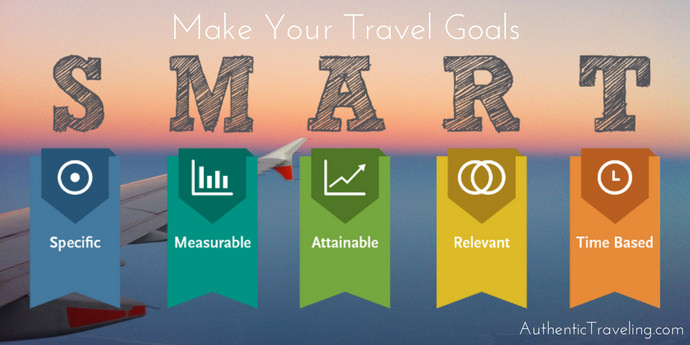
CC BY-SA 4.0 , Dungdm93 .
Great travel goals are clear and specific, which helps to remain focused and motivated.
To make your goals more specific, try and answer the six ‘W’ questions:
-What do I want to accomplish?
-When do I want to accomplish this goal?
-Where do I need to go?
-Who should be involved?
-Which resources or limits are there?
-Why do I want to accomplish this goal?
Great travel goals are also measurable, allowing you to easily track your progress and know when you’ve succeeded.
Being able to clearly see both how far you’ve come and what you need to do to finish helps you to stay motivated and creates excitement around the thought of accomplishing your goal.
When setting measurable goals, ask questions like:
-How will I know when I've succeeded?

A good measurable travel goal for someone shy would be to have a 5+ minute conversation with a local 3x over the course of one, week-long trip. A less-effective goal would be to "meet new people" or "open up".
Great travel goals should also be attainable. You should be able to see a realistic path you can take to success. You should feel challenged and your abilities should be stretched, but everything should remain possible. If your goals is so difficult that it starts to feel unattainable, then you’re more likely to just give up.
Achievable goals answer questions like:
-Given my current situation (financial, mental/physical health, time constraints) how realistic is this goal?
-How can I accomplish this goal?
Great travel goals need to be relevant. They need to matter to you, aligning with your greater purpose in travel or life.
Having a deep sense of purpose behind your goals ensures that you’ll never run out of motivation, even when the going gets tough and helps to keep things in perspective. If you goal isn’t relevant to you, you will lack the fortitude necessary to handle adversity when it undoubtedly appears.
Relevant travel goals answer ‘yes’ to these questions:
-Is this something that matters to me?
-Do I really want to accomplish this?
-Will completing this goal improve the world in some way?
-Am I improving my life by succeeding?
-Is this the right time or place for me to try and achieve this goal?
Great travel goals have a target date. They have a deadline for completion that you can stick to. This helps ensure that one temporary, short-term goal—which is supposed to be a single step on the way towards aiding greater goals or your purpose—doesn’t become a massive time-suck or permanent hinderance.
Time-based travel goals can usually answer these questions:
-What can be done today to help accomplish this?
-What can I do six weeks from now?
-What can I do six months from now?

A good time-bound travel goal for someone afraid of flying would be to take one flight without the aid of anti-anxiety drugs, sleeping pills, or alcohol in the next 3 months.
In addition, the best travel goals are performance, not outcome, based. This means that the goal is to complete the process rather than to achieve a specific end result.
As all great performers know, the only thing you ever have full control over is your effort. There’s no guarantee that a well-struck golf ball won’t end up in the water in a tournament or that a perfectly-sung ballad won’t be eclipsed by another song during a talent show.
You can’t force the weather to be nice, a museum to be open, or a local to be friendly, but you can wake up in the morning ready to take that hike, prepare yourself to see some art, or have the courage to start a conversation at the nearby cafe.

You can't control whether or not the ticket office is open while traveling through Italy—it rarely seems to be—but you can make sure you're at the train station on time.
While there are no guarantees, consistently putting in the effort—following a process that you know can work—leads to the best long-term results.
How To Figure Out What Goals to Set

If you’ve read what we wrote on travel with purpose , you know how important it is to find your Why for travel. Purpose gives focus to your planning, inspires action on the road, and provides strength in difficult moments—both before and during trips.
Once you’ve identified your purpose for travel— here’s a refresher on how to do that —you’ve already done much of the work necessary to set great travel goals. You have a clear idea of which direction you want to take. Now you just have to map out the specific steps you will take to get there.

Once you know what your final destination is, it becomes much easier to determine what path you want to take to get there.
Sometimes the route you need to take will be obvious, and goal-setting will be simple. Other times the path might not be as clear. If that’s the case, ask yourself the following questions, with your Why in mind:
-Image that you’ve had a successful trip filled with purpose. What would that trip entail? Can you work backwards from the end to the start?
-What’s the smallest possible first step you could take towards achieving your Why?
-Has anyone else traveled with a similar purpose? What did their journey look like?
-What’s the most important problem you could tackle on day one of your trip?
-What’s one thing that would get you to jump out of bed?
-What do you want your obituary to say?
-What would you never regret trying even if you failed?
-What could you do to ensure that you’re living a satisfying life?

Choosing between paths is often part of the fun of travel planning and goal setting.
Not every goal for your trip has to—or even should—be purpose-driven. Adding a few for-fun, less-serious goals helps to lighten the mood and provides additional motivation along the way.
Examples of some fun goals could be visiting all the Trappist breweries in Belgium, learning 5 words in Portuguese each day during a month-long trip to Brazil, and trying 20 different flavors of Kit Kat while in Japan.

Just a few of the hundreds of flavored Kit Kats available in Japan.
Deciding How Many Travel Goals to Have
When trying to determine how many goals you should set for a trip, there are a number of factors to consider.
How long will you be gone? How much time will you be able to devote to accomplishing your goals? Will you have other obligations or responsibilities on your trip? Does reading over your list of potential goals make you feel overwhelmed?

It can be helpful to think of travel goals as items in your mental backpack. Pack too few and you'll be ill-prepared. Pack too many and you'll be overly burdened.
In general, it is better to pick a smaller number of meaningful goals rather than a large number of goals that you’re less enthusiastic about. Your time and energy on the road is limited, and there is only so much you can concentrate on.
Changing Your Travel Goals
Having fewer goals allows you to create new goals when you’re traveling based on what you see and do. As you travel, you will undoubtedly realize new things about yourself and your prioritizes might change. Perhaps you came to South America to learn Brazilian Capoeira only to learn that you’d rather practice Argentine Tango.

Argentinian Tango dancers. CC BY 2.5 , Carlos Luque .
Your goals don’t have to be inflexible. Sometimes unexpected things happen when you’re traveling. Allow yourself the latitude to jump into the adventure that is unexpected possibilities. Don’t let your original goal of visiting the top 5 Sachertorte coffee houses in Vienna keep you from accepting an invite from new friends to spend the weekend at a music festival in Bratislava. The best part of travel is the unexpected and the unplanned, and objectives should never get in the way of a good story.
Expectations Versus Hopes
To help make this easier, make sure your goals are not expectations. Expectations are absolute and unmovable. When we expect something, we move an accomplishment from being something to be celebrated to being something mundane. After all, we expected it to happen so why be happy? And if they don’t happen, then we get upset.
In contrast, if you view your goals as hopes—things you want to have happen but also recognize that they might not—then you are free to change or abandon goals when necessary. The quality of your travel experiences are not contingent upon how many of the goals you set out at the beginning are accomplished blindly.

Don't underestimate the benefits of having the freedom to explore with hope.
How to Achieve Your Travel Goals
There are a number of things you can do to help you to accomplish your travel goals.
1.) Make sure your travel goals are SMART
As mentioned above, if your goals are not specific, measurable, actionable, relevant, or time-bound, your chances of success will be greatly diminished.
2.) Review your travel goals regularly

Review your goals every day when you wake up. One way to do this is to create a travel journal within which you actually one big goal for the day and three ways in which you are going to make it happen.
Also remind yourself everyday of your overall purpose for traveling. Write this down on a piece of paper and bring it with you during the day.
3.) Prioritize your travel goals
At the beginning of your trip, sequence your goals based on priority. Know what is most important to get done first and what you most want to accomplish. Not only does this set you off on the right foot, but it makes it more likely that you will have done the things you most want to do in case something happens that cuts your trip short or otherwise changes your plans.
4.) Keep track of your progress
Before you go to bed each night take a moment to write down your successes. Note what steps you took to achieve your goals and how much progress you’ve made since yesterday.

Somedays you’ll take great leaps, whereas others days it may feel like you’ve only advanced a little. Don’t worry about this. Remain consistent in the process and the results will eventually show.
5.) Celebrate your success
Be sure to enjoy the moment when you accomplish your goals. Fully embrace the feelings you get and let them soak into you. Hold onto that feeling as long as you can. Think about the hard work and dedication it took to get to where you are.
Take a photo to memorialize your accomplishment and let other people know on social media what you’ve done. Don’t worry about coming across as boastful—in general, people want other people to succeed, and if your joy is genuine your friends and family will be supportive. And who knows, you may even inspire someone else to take on their own challenges.
The joy one gains from a hard-earned achievement is addictive, and you’ll naturally want more of it. Ensuring that you take the time to properly celebrate your successes is critical when building the work-reward loop that drives future performance.
6.) Reflect
Throughout the goal-achievement process, remain reflective. Ask yourself how things are going? Are your goals too easy and you’re not feeling challenged? What are you learning about yourself? Use this information to adjust your future plans and goals.

Things to Avoid: What Prevents You From Achieving Your Travel Goals

Don't let your next trip be filled with regret and disappointment due to unmet travel goals.
There are a number of reasons people don’t achieve their travel goals. Some of the biggest road blocks include:
1.) Impatience
You want results right away and get frustrated and quit when you don’t see the results immediately.
2.) Perfectionism
You want everything to be done perfectly the first time and if that’s not the case you get upset and quit.
3.) Failure
You are unable to deal with failure on a first, second, or tenth try. Those who stick with it are those that achieve.

Even the best fail sometimes.
4.) Focusing on the end results
When you shift your attention from the process to final outcome, you’re more likely to make mistakes, not give it your full effort, and overlook crucial steps. Also, the process is often quite fun—especially in traveling. Imagine not enjoying the hike up a mountain side because you’re focused exclusively on what it will feel like when you get to the top.
5.) Excuses
Sometimes excuses are what prevent us from achieving our goals.Your mind likes to stay in a comfort zone and so it will say and do whatever it can to prevent you from moving out of that. Do you hear yourself saying some of the following? If you do, stop for a moment and think.
-I’m not good enough.
-It’s not the right time.
-I’m too old/young.
-I don’t have the money.
-People will laugh at me.
-What if I fail?
6.) Overly-large steps
If you bite off more than you can chew in one chunk it can be demoralizing and daunting. This is common. Instead of committing to visiting all the countries in the world when you first start out traveling, perhaps start by visiting one.

Every great journey starts with a single step.
7.) Procrastination
Now is the best time to act. It’s easy to say that you’ll travel one day or achieve XYZ in the future when you feel right. Don’t wait until you feel ready, or when the time is right. If you do that, you risk that time never coming. If you can’t complete the whole goal right now, create a mini-goal that you can finish that when done will help you to achieve your larger goal. Any progress is good progress!
8.) Distractions
People, at home, social pressure. These can all distract you from your goals. Remember why you’re trying to achieve your goals, and this can help you keep on track.
9.) Lack of consistency
Are you not doing the same things every day to help achieve your goals? Do you work hard one day and then slack off another?
Show up everyday with effort and you’ll be rewarded. The more consistent you are, the easier it is to achieve goals as they become habits. Get in the habit of talking to locals when you wake up each morning and you’ll find it second nature after a while.

Keep showing up and you'll eventually catch a ride.
10.) Expectations
More on this next week!
As you've learned, if you're interested in consistently having exceptional travel experiences, you should to set goals. The best travel goals are SMART goals—Specific, Measurable, Attainable, Relevant, and Time-Based—and are often steps towards fulfilling a greater purpose or Why. Such goals provide travelers with the motivation, vision, and resiliency. By following a few straight-forward steps, anyone can design, develop, and—ultimately—live their travel dreams.
Eager to take the next step towards achieving your travel goals? D ownload my FREE guide The Traveler’s Mindset: How to Mentally Prepare for Journeys of Adventure and Growth !
You may also enjoy:
11 things you should never bring on vacation, 27 surprising benefits of traveling abroad: how traveling changed my life, j.r.r. tolkien – travel quote of the week, searches, seizures, and technology – how to protect your privacy at the u.s. border, leave a reply cancel reply.
Your email address will not be published. Required fields are marked *
This site uses Akismet to reduce spam. Learn how your comment data is processed .
- Skip to right header navigation
- Skip to main content
- Skip to primary sidebar
- Skip to footer

Live the Life of Your Dreams

Travel Goals: 20 Ultimate List to Inspire You on Your Next Adventure

October 29, 2020 // by Clarisse // Leave a Comment
Sharing is caring ♥
Updated October 29, 2020 by Clarisse
Travel goals are a big part of my life. Setting achievable goals has allowed me to take on long-term world exploration one step at a time.
I know that many of you dream of traveling the world and adventuring to new places you have yet to see.
Well, I am here for you.
First things first, I want to let you know that you’re incredible for taking the first step in dreaming big! This is what it will take to manifest the things you want to accomplish in your life.
So yes, start by creating the list of things you want to do!
These are your set list of intentions that you should write down and work towards every day of your life.
I know that there are many things that could be holding you back from living the travel lifestyle. But hear me out, if traveling the world is your passion, then don’t let life get in the way.
You’ll find that as you read below, some of these goals are a bit up there. But, that’s what dreams are for.
Remember always to aim high!
If you shoot for the moon and miss, you’ll land among the stars, which is still a super awesome place to be.
Plus, if you learn to break big goals down into tiny chunks, they are likely to become much more achievable.
So here we go.
Set your travel goals for yourself and manifest the things that you truly want in life.
Below are the goals on my list that I’ve continued to live by to get you started. I hope this will help inspire you on your next adventure.
1. Travel to a Different Country Every Year
Traveling to a different country every year was one of the initial goals I set for myself in my journey. It started when I flew to Germany and left the United States for the first time after high school.
I have since kept this promise to myself and traveling as much as I could.
I admit I want to level up this travel goal to visit 100 different countries before I’m 50. If you are as determined to explore the world, I suggest taking on this dream as well.
PS. Check out my story if you’d like to learn more about what got me started on this incredible adventure.
2. Travel During Off-Season
Off-season travel gives you the chance to see the world from a local’s perspective. There are fewer tourists, and you’ll gain experiences you normally otherwise wouldn’t be able to have.
As a big plus, flight and accommodation prices will be at its lowest, so take advantage of this.
3. Take an Epic Road Trip
Take a minimum of 2-weeks, pack your bags, grab your best buds, and take an epic road trip.
See the world at a slower pace and camp along the way. These experiences will become some of the best moments of your life.
4. Live Like a Local
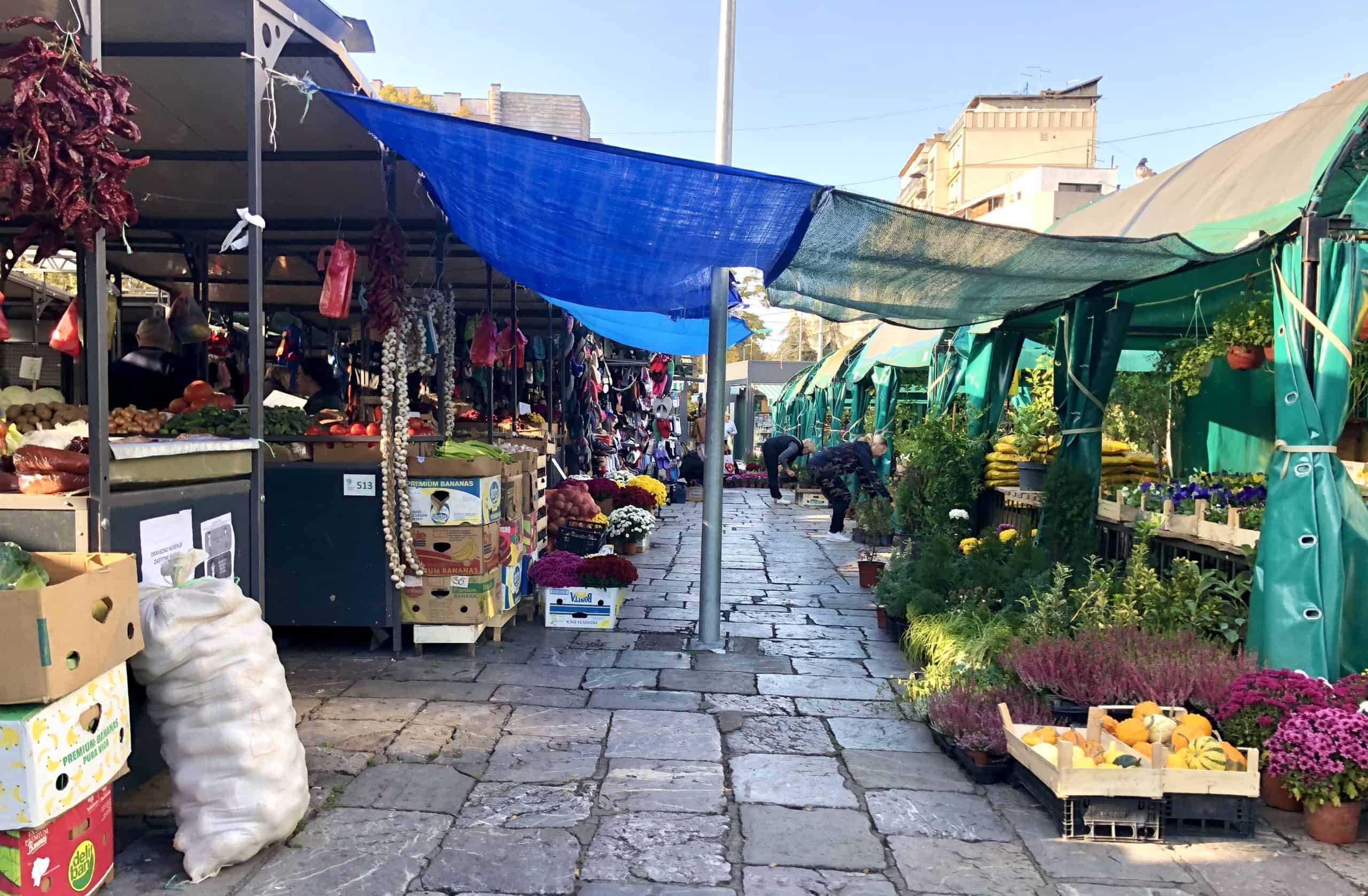
There’s nothing better than immersing yourself in the culture of the country you’re traveling to.
Stay for at least one month, eat the local foods, go to the local bars, joints, and hang out spots. Venture to the farmers market weekly to get your daily dose of fresh vegetables.
Oh, and skip the hotels and stay at an Airbnb to capture the way the locals truly live. Airbnb’s are houses offered by the locals in the area. This way you can have the household experience, even if it’s just for a short month.
5. Befriend a Couple of Locals
Talk to the locals, whether it’s a random stranger on the street or the local store’s shop owner.
Get to know them on a deeper level. Be brave and ask if they would have time to meet you for coffee.
6. Take a Bike Tour
I love taking bike tours of the countries I go to. You can explore more areas and feel the wind and breathe in the fresh air all at the same time.
This is incredibly fun in Europe where they have designated bike paths and rentals are easy to come by.
7. Start a Travel Journal

Journal your thoughts, experiences, and the awesome things you did during your trip.
I have many travel journals that friends have given me over the years. I love that I can carry a piece of the people closest to me everywhere I go.
More than that, I cherish the moments I’ve put down on paper in the pages of those books.
8. Collect Unique Souvenirs
Collect the most unique souvenirs you can find and take home one-of-a-kind memorabilia. As a backpacker, I will usually go for something smaller.
Either way, find the hand-drawn maps or local glassmaker of the city you’re in. You could even leave with something unconventional.
I’ve been known to have taken home a Harry Potter wand from the Warner Bros studio in London.
(Yes, I’m a Harry Potter nerd)
Make it a personal mission to find keepsakes that you won’t find anywhere else in the world.
9. Attend a Local Festival
Immerse yourself in the local culture and attend a festival. These are so much fun and they allow you to become a part of the festivities in the country you’re traveling to.
10. Volunteer in a Different Country
Volunteering is one of the ultimate travel goals I have set for myself.
I want to make a difference in the world.
One of the ways I want to implement this is by volunteering in a country that needs help.
My biggest goal in life is to be a part of something bigger while keeping the travel goals I promised to myself. I hope that you will consider this when you start your world exploration.
11. Experience Solo Travel

Ahh, solo travel, the scariest thing for some people. Don’t be afraid to venture into a different place that you’ve never been to before and explore it all on your own.
To be honest, it’s one of the best things I have ever done for my physical, mental, and emotional health.
I learned a lot from traveling the world solo.
Nothing can rival or substitute the experiences you will encounter when traveling the world on your own.
Try it at least once and see where it leads you!
12. Travel with your Best Buds

Yes, I just finished talking about solo travel. But traveling with your best friend is in a whole new world (yes, Aladdin).
You’ll have the best of times with the person closest to you and you will have the memories of a lifetime.
So, yes, travel the world solo, but if given the right chance, timing, and opportunity, travel with your best bud too!
13. Learn 5 Useful Phrases in a Different Language
“Thank you” is the top phrase I learn when I’m in a country that speaks a different language. Learn four more and you’ll see that it makes a world of difference.
This will help you in understanding the essential everyday words that locals are saying. Plus, they’ll be happy that you took an initiative to know more about their country.
Yes, this means even if it’s as simple as learning a few key phrases in their language.
14. Travel the Best Spots in Your Own Backyard
Take a small step and start traveling to the best spots in your hometown.
Many places in the world have yet to be discovered.
Take the initiative and explore new areas you haven’t been to yet, even if it’s in your own backyard. You never know, you might find a new favorite spot before the day is over.
15. Find the Best Places to Hike

Spending time in nature is a fantastic travel goal.
There are plenty of countries in the world that have spectacular hiking trails.
Find out where they are, either through a quick search or asking a local. I definitely prefer the second option, but either way, this is a great point to have on your travel goals list.
16. Eat at a McDonald’s Restaurant in Every Country
This one is a bit of an unconventional travel goal but one that I have set for myself successfully.
Hear me out, every single McDonalds in the world is unique from each other. The menu items in the restaurants I’ve visited are there to represent each country’s food culture.
Personally, I always try to order the one thing that you won’t be able to find anywhere else in the world.
PS. My top favorites include:
Philippines – Spaghetti
Thailand – Congee
17. Learn their History
There is nothing better than learning the history of a country through its people.
Talk to the locals and strike up a conversation with them about their country’s culture and history.
You never know what you might discover.
At the very least you could come across a very interesting story that you could later tell the world.
PS. You could also take advantage of the museums. Most of them are either super cheap or free.
18. Start a Travel Budget so You Can Travel the World
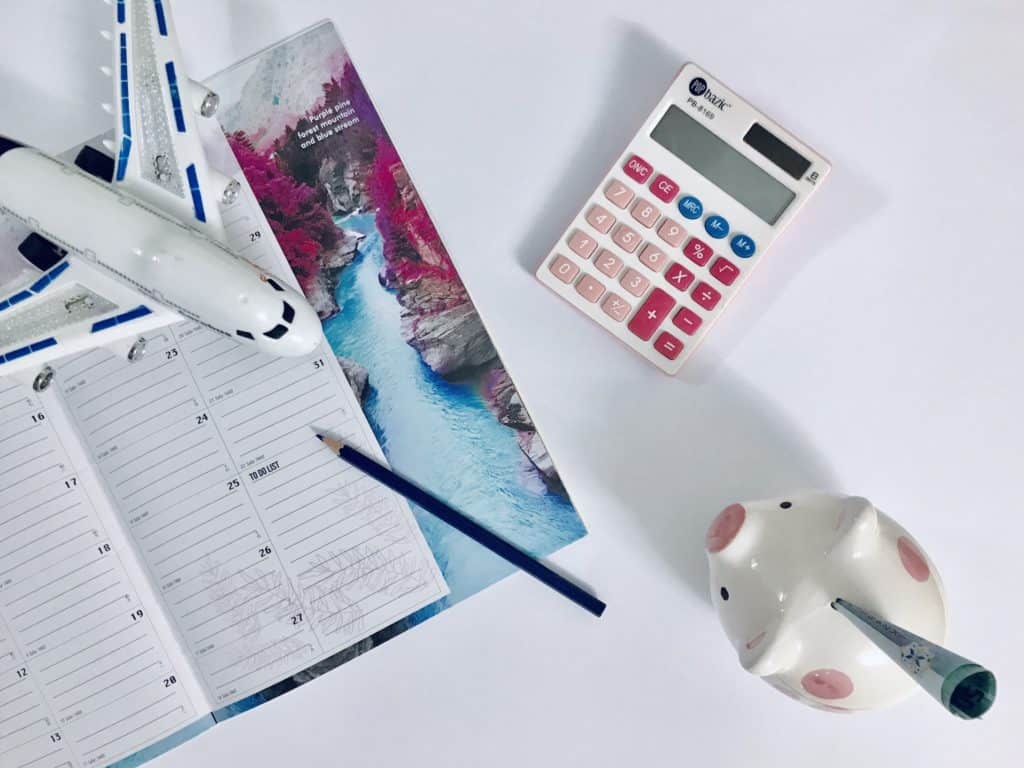
Yes, the dreaded travel budget. But incredibly essential to those who want the freedom to go on the super epic adventure of a lifetime.
Budgeting before and during your trip is a must if you want your funds to last the entire duration of your journey.
Make it a goal to decide what you’re willing to give up in the short term to gain what you truly want to have in life long-term.
19. Buy a One-Way Ticket

A one-way ticket halfway across the world is one of the scariest but most rewarding things you can do.
It is the ultimate travel goal in a person’s lifetime.
The thrill of not having any plans but only the sense of adventure you carry with you is a crazy but unique experience to have at least once.
But, to be honest, once you’ve done this, the travel bug could end up being in your system for quite some time.
20. Travel to Off the Beaten Path Places
Travel to remote areas in the world and you’ll discover places that only a few have been to.
This is another incredible travel goal because it means that you are willing to take risks. Enjoy the thrill of searching for off the beaten path adventures.
Live Life and Explore the World
What are you waiting for?
I know that this is a big leap, but remember you have taken the first step by simply reading this article.
You know that deep down, there’s something more. You want to live a life of freedom and explore the world.
Keep working on your travel goals, one day and one step at a time. Before you know it, you’ll be slowly ticking everything off on your goals list.
You’ll then realize that you are living life and there’s not a better feeling in the world.
Good luck on your adventure and if you need any advice or a listening ear, I’m here for you.
As always, thank you for being a super amazing reader of LiveLifeOTBP.
Related Posts
You may be interested in these posts from the same category.

5 of the Best Gap Year Ideas You Need to Do in Your 20’s

Cheapest Ways to Travel the World (How to Travel on a Budget)

14 Powerful Questions to Ask Yourself so You can Travel the World
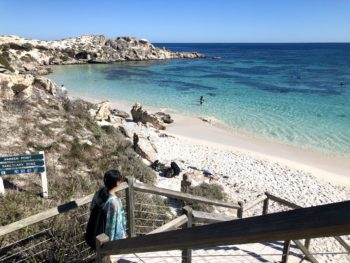
Gap Year After College: 7 Reasons It Will Help You Out in Life

How to Enjoy Life: 20 Tips on Living Every Day to the Fullest

Travel During Pandemic: Important Tips for Your 2021 Trip

50 List of Things to Be Grateful For: How to Be Thankful Everyday

How to Travel Safely During the Pandemic in 2021

40 Travel Essentials You Need + Printable Packing List Template

40 Best Travel Gifts for Women (Unique Items They’ll Actually Want)

What is a Hostel? The Ultimate Guide + 16 Must-Haves for First-Timers

Unique Bucket List Ideas: 100 Things to Do Before You Die

Reader Interactions
Leave a reply cancel reply.
Your email address will not be published. Required fields are marked *
Save my name, email, and website in this browser for the next time I comment.
Inspiration
“Dare to live the life you have dreamed for yourself. Go forward and make your dreams come true.”
Live a Life that’s Off the Beaten Path♡
Follow Your Dreams
- CREATE MY MAP
The 10-Step Guide to Setting & Achieving Your Travel Goals
Do you have a growing bucket list of dream destinations and experiences but never find the motivation or time to make them happen?
Well, I'm sure you don’t need our reassurance that a trip to Paris is always a great idea. But a dream without a plan is just a wish - and we're here to fix that!
We believe that everyone deserves to experience all that this beautiful world has to offer, and that the act of traveling makes each of us better, more well-rounded and open minded people.
It’s important to immerse yourself in your travel goals to actually make them a reality. By tracking your trips and keeping them visualized in your home, you are significantly more likely to stay motivated to save for, plan, and feed your desire to travel once and for all! (65% more likely, in fact - more on that below!)
With our 10 powerful ideas below, you'll soon be on the path to achieving your travel goals! Whether you implement all of these tips or just one, you're guaranteed to be that much closer to achieving your travel goals. But the more you actually implement, the faster you're going to crush that bucket list and see as much of the world as you desire!
1. Set goals that motivate you
Take a second and ask yourself: What is my motivation for prioritizing travel as an important part of my life? Is it to experience new places and cultures? To discover my passion? To escape from the daily grind? To jump outside of my comfort zone? Something else? WHY do I want to travel?
The answer is different for every traveler. But whatever fuels your desire for seeing the world, be sure it is kept top of mind each day. Whether you use one of our push pin maps, or simply a photo on the fridge, constant reminders are very important to achieving your travel goals.
2. Dream big!
Take an afternoon to sit down and create a “Bucket List of 100 Dreams” - a completely unedited list of 100 things you would like to do in this life. The sky’s the limit here so aim for goals a little out of reach.
This’ll be tough - and that’s the point! The beginning of the list may be loftier, long-term dreams. But by the last third it might be simpler things like visiting a state park an hour away - drivable getaways that you could accomplish on a lazy weekend!
You can utilize these to create some great momentum by checking off those smaller, easily attainable bucket list items, and then keep at it! Before you know it, you’ll be doing things that you never thought possible.
3. Narrow it down
You don’t have to start with the easy ones. It’s all up to how you like to operate.
Take a look at all of the goals on your bucket list. Now choose one of the places or experiences on your list and commit to it. When deciding which goal to tackle first, you can use the questions below to narrow it down and prioritize your goals, either by ease or by importance:
- Which of the destinations are closest to me?
- Which trip is the least expensive?
- Which trip would be the easiest for me to take right now?
- If I could only visit one of these places before I die, which one would I choose? With this question you’re pinpointing which trip you’re most passionate about.
Pro tip: You can take some of the mental juggling out of the decision by creating a spreadsheet and rating all of your list items based on the questions above. Add up their scores and the one with the highest score is your next destination!
4. Turn excuses into actionable steps
We’ve all heard (or even used) the excuses:
I don’t have enough money to travel.
I can’t get enough time off work to travel.
I don’t have anyone to travel with.
Every excuse can also be looked at as an opportunity. Squash those excuses and replace them with simple tasks:
- I will create a budget plan to save the money I need to take this trip.
- I will plan my time off work in advance to make it a priority to recharge.
- I will find a tour company that caters to solo travelers if I can’t find a travel companion and don’t want to go solo.
There’s always a way to overcome your hurdles. You have to decide to stop letting them hold you back, and embrace the fact that you can overcome them.
5. Set SMART travel goals
It’s important to identify not just the difference between where you are and where you want to be, but to create a step by step plan to bridge that gap. Set SMART goals, which give you direction and help you organize and reach your goals. To make sure your goals have a high likelihood of success, each one should be:
Specific: Your goal should be clear and well-defined so that you can focus your energy on achieving it.
Ask yourself: Who, what, where, when and why?
Instead of saying “I want to travel more” or “I want to go back to Europe,” which are vague goals, clarify where, when and with who you want to go. An example is: “I want to visit Paris with my boyfriend for a week in May to celebrate our anniversary.”
Measurable: It’s important to have measurable amounts and dates attached to your goals so that you can track your progress and stay motivated, while feeling the excitement as you inch closer to your goal.
Ask yourself: How will I know when I have reached this goal?
Instead of “I want to stay for about a week and not spend too much money,” make your goal more quantifiable like “I want to stay for 8 days, 7 nights and spend xxx on flights, xxx on accommodations and xxx on experiences.”
Achievable: The goal should challenge you but not be entirely out of reach. It should be realistic and attainable to be successful.
Ask yourself: Do I have the resources and capabilities to achieve the goal? If not, what am I missing?
Choose a realistic trip to focus on first based on your current income and circumstances (vacation time, visas, distance, cost of flights, etc.)
Relevant: This step is about ensuring that your goal is important to you and that it also aligns with your other life goals.
Ask yourself: How much does this matter to me and is it worth the time and effort? Is it significant to my life?
Consider your travel style and how long you would want to spend in each destination. Does it make more sense for you to take a one-week 5-star vacation in Bali or a 6-month budget backpacking trip around South America?
Time-bound: Your goal should have a clearly defined timeline, including not only your travel dates, but also the stages of saving, planning and booking your trip and milestones for each. This step helps to prevent everyday tasks from taking priority over your longer-term goals.
Ask yourself: Is my timeline realistic while also creating urgency?
A good example is: “We can save $3,000 in 6 months but need $1,000 for the flight by January, $1,000 for accommodations by February and to book our activities by April.”
6. Write it down
Did you know that you are 42% more likely to achieve your goals if you write them down?
This makes the goal real and tangible, taking the trip from abstract to concrete.
As you write, use the power-word “will” instead of “would like to” or “might.” This way you can visualize yourself achieving the goal. Hang your goals up on your fridge or mirror so that they are top of mind every day.
7. Immerse yourself in your goals
To keep yourself motivated for saving and planning for your travel goals, immerse yourself in them!
Make the inspiration visual! Pin your next destination on your map with a heart pin and add inspirational photos to your matching pin board. Create a vision board or Pinterest board with photos and blog posts about your dream destination. Surround yourself with people who have similar goals in your friend circle or in a Facebook community such as For The Love of Travel .
8. Tell everyone
Accountability is key! Sharing your travel goals with others increases your chances of sticking to them ( 65% more likely to achieve them !). And better yet, find someone to join you in your travel goals and stick together!
9. Take the first step
A journey of a thousand miles begins with a single step! Then on to the next step... and the next... If you try to conquer everything all at once, you may get overwhelmed and give up. Taking things one step at a time keeps things manageable - and achievable!
Remember, goal setting is an ongoing process, not just a means to an end. On a journey of a thousand miles, it’s easy to lose sight of just how far you’ve come. Build in reminders to keep yourself on track, and set aside time to review your progress.
10. Celebrate and repeat!
So you saved the money, booked the flight, planned the experiences and are off on your adventure! Congrats! Take some time to celebrate and reflect. Whether that’s writing in a journal, printing off photos, updating your push pin map , or collecting the post cards you sent yourself, take the time to let it all sink in. Then get to work on that next travel goal on your list!
At the end of the day, it is difficult for all of us to set and achieve our travel goals. Life is busy! But these tips should help.
The best tool to help you set your goals, dream about them, share them with others (for that accountability!), commit to yourself, and stay inspired, is a push pin travel map .
At Conquest Maps, we have helped tens of thousands of people achieve their travel dreams with our pinnable travel maps .
We offer a highly customizable selection of top quality maps so that you can get out there and see the world with more enthusiasm and determination than ever before!
It’s your journey. Time to conquer those obstacles and explore the world!
Added to your cart:
Follow me on social media

SMART Goals for Travelers: Setting 2021 Travel Goals
As I have learned more about goals, I’ve noticed that making my goals SMART pushes me to actually accomplish them. Thus, that’s why it’s essential for there to be SMART goals for travelers. I remember growing up and spending every New Years’ Eve at my dad’s house. We would do some traditional activities, but my dad would always sit us down to go over our goals for the next year and review our ones from last year. My goals were somewhat simplistic as a kid; they have adapted as I have grown and have included what travel I’d like to do in the coming year. I’d like to take you through my travel goal writing process.
SMART Goals for Travelers don’t include “Travel More”
I feel like we’ve all been there (or at least I have), we talk about what we want to do in the next year and we all say something along the lines of “travel more.” Don’t get me wrong, I think this is a great way to get started, but it shouldn’t be your endpoint when it comes to travel for the next year. I remember being at student council camp one summer when I first heard of SMART Goals. If you haven’t heard of SMART Goals or need a refresher, here is a breakdown, SMART stands for: Specific, Measurable, Attainable, Realistic, and Time-Bound.
Let’s Brainstorm
I like to start things off with brainstorming, writing everything that comes to my mind. In this phase, there isn’t any wrong answer. No trip is too long or location too far. With that, I also start thinking of some smaller things and travel I would like to do. I think writing everything down allows you to often see how many goals can intertwine and fit into one another.
Subgoals are great
Goals can be large, especially travel-related goals. To make larger goals more feasible, I break them down into smaller subgoals, so I can see that I am making progress toward the big goal.

Let’s Make them SMART Goals
S – specific.
What are you looking to accomplish? Is there a place you’d like to travel to? Do you have a dollar amount that you need to save for an upcoming trip? Take a look at what you have brainstormed and start from there. Make your goal make it concise and clear, include details and numbers as necessary.
M – Measurable
This one might be easy for travel as you can check it off by saying that you measure it once you complete the trip. However, I suggest using the subgoals that I previously mentioned to show that you are making progress along the way to your big goal.
A – Attainable
The next step is to look and make sure that it is going to be something that you can do. Do you have enough vacation days? Are there other financial obligations that would be in the way? Setting subgoals will help make bigger goals more on the track to be more attainable.
R – Realistic
You’ll need to be sure that your travel goals are even possible and reachable. That is to say, just because a goal is not possible now, that it won’t be possible in a few months or a couple years. Having subgoals while planning will allow you to see the steps to reach your big goal and see if it is realistic.
T – Time-Based
Have your travel goal meet a deadline. What good is a goal if you never set a time to have it done by, right? If you are a person that struggles with procrastination or dealing with big picture concepts, creating subgoals that are also time-based might help. They will allow you to make sure you are meeting deadlines along the way to that big travel goal.
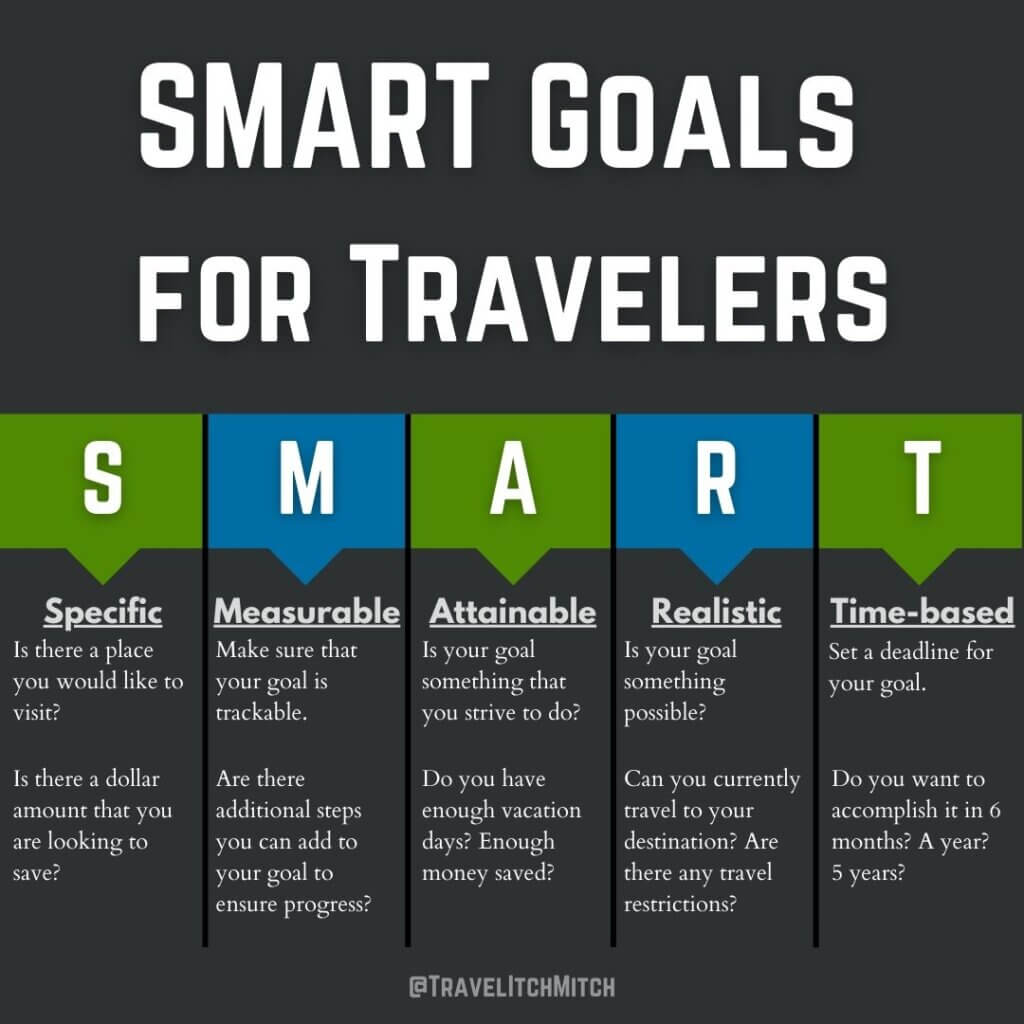
SMART Goals for Travelers Example
Let’s take a look at one of my goals: to visit every National Park in the United States. Realistically, I know that I am unlikely to visit every National Park within the next year and probably not within the next five years either.
So let’s break it down. I believe that regardless of the state of travel, it’s realistic and attainable that I’ll be able to visit one new National Park in the coming year. To make this happen, I need to do some research on the park I want to visit. From there, I’ll need to decide to fly or drive, determine if I’m going to camp or not, set aside money for the trip, and request time off work.
Brainstorm: Visit every National Park SMART Goal: Visit one new National Park in 2021 1. Determine National Park by the end of March 2. Determine rough dates for travel by the end of April 3. Plan transportation method and accommodation by the end of May 4. Set aside $600 for the trip by the end of May 5. Request time off at least 2 months in advance of the trip
Didn’t think you’d get another goal out of me did you?
Well, as mentioned in a previous post , I wanted to work more on this website. To keep myself on track for year it’s my intention post 12 times total by the end of 2021.
Setting your Travel Goals
What travel goals are you setting? Let me know with a comment below! When doing research for other goals I found MindTool’s SMART Goal’s article super helpful.
The Occasional Nomads
Dreams. Goals. Plans. Retirement. Travel. Life.
Creating SMART Travel Goals
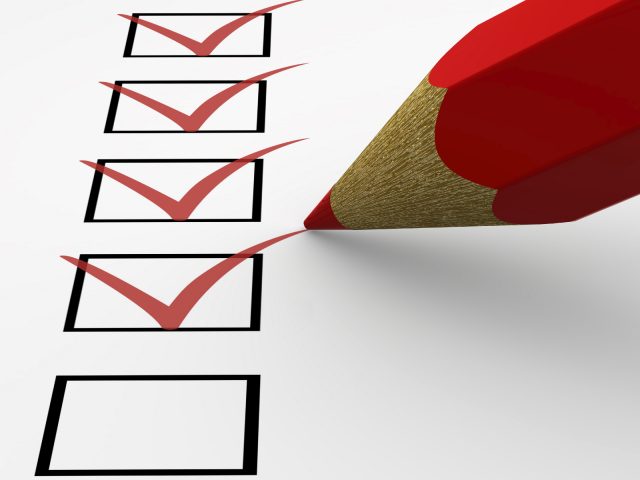
Both Brett and I have always been big fans of setting goals and then working to achieve them, whether that’s downsizing or moving to Hawai’i or saving for travel.
We create our goals using the SMART criteria, and it’s worked especially well for travel planning. The SMART acronym stands for S pecific, M easurable, A chievable, R ealistic and T ime-bound. Long before we ever travel, Brett and I sit down, talk about what we want to do, what we can afford, and then make our travel goal the SMART way. We’ve been using this method for many years, and it’s led us to success over and over again, no matter what we want to achieve.
Here’s how we use the SMART criteria when creating a travel goal:
- Specific: Being specific means knowing exactly what we want to do. Instead of saying We want to travel or We’d like to visit xxx , both of which are vague, we spell out exactly where we want to go, when we want to go, and who will be going. We want to visit Japan with our daughter for a week in March during her spring break is very specific while We’d like to go to Japan is not . The first example has a where, when and who will be traveling, while the second example is just an idea.
- Measurable: This means creating a precise way to quantify our goal. A travel goal contains both time- and money-related aspects, and both require some research. Instead of We want to stay 10 days and spend less than $10,000, a measurable goal is We want to spend 10 days and nine nights. We want to pay less than $700 each for airline tickets, no more than $xxx for lodging and our total budget can be no more than $8,000 (or whatever we decide our top limit is) . The top limit of our budget is the number we will be working toward, and the time aspect is making sure we can take vacation at that time or that there’s nothing else that might make it difficult to travel.
- Achievable: The travel goal needs to be what we know we can attain and complete in a specific amount of time . Giving ourselves a goal of saving $8,000 in a year for our trip is not achievable if we know that will be impossible, or that we’ll need to raid our savings or use credit cards or borrow money (and we don’t want to do those things). A specific SMART goal would be: We need to save $8,000 in the next 12 months (~$670/month) in order to make this trip during spring break. We’ll set up a monthly savings allotment, save all our refunds and gifts, save all change and $1 bills, and find other ways to save as much as possible. If we are sure we can achieve our goal, then we go for it; otherwise, we start over or reset our parameters with what we know we can achieve.
- Realistic: This part of the goal is tied very closely to achievable, and allows us to visualize the results of our efforts. Besides just getting to our destination and knowing where we’ll stay, we also need to think about what we can afford or will have time to do when we’re at our destination. Realistic means that while we may dream of flying first class or staying at the Four Seasons, there’s no point in doing so if it will consume all or most of our budget, and not allow us to do anything else at our destination. However, if flying first class and staying at the Four Seasons is our dream, then we’ll have to reset our original time parameters or figure out a way to earn or save more within our original time constraints.
- Time-bound: We make sure we have a timeline for achievement. Setting a SMART goal for travel not only requires that we set the actual date for travel that we work toward, but that we also research and set specific time-goals along the way. So, while we’ve figured out that we can save $8000 in a year to cover all our expenses, we also need to know time-sensitive issues that will arise while we’re saving. For example, We will need to have $2500 of our $8000 by such-and-such date to purchase airfare and reserve our lodging (because we don’t want to leave these until the last minute). Besides air fare and lodging, our trip may also involve several other time-related issues that arise before actually traveling, things like booking tours, or getting restaurant reservations, so those may need specific time deadlines as well. Once again, research is our friend.
Because Brett and I can’t just whip our checkbook and cover any trip whenever we feel like it, using the SMART criteria has meant we’ve been able to make most of our travel dreams a reality without using credit cards or dipping into our regular savings, or putting ourselves into debt. Setting up a SMART goal can take a little more time, but almost always ups the chances for success.
Published by Laura & Brett
Slow traveling the world with a sense of adventure! View all posts by Laura & Brett
2 thoughts on “ Creating SMART Travel Goals ”
And what you do is SMART! I am like that too. I like to plan ahead and be very specific about what I want to do. Now this post inspired me to write a post about my upcoming trip to the US. Thank You!
I remember what a revelation it was to learn about SMART goal setting – it came up in a college course I took. I had always bee goal-oriented, but this framework helped me learn how to do it better, and be more successful in reaching my goals.
I will be looking for your post!
Comments are closed.

- Already have a WordPress.com account? Log in now.
- Subscribe Subscribed
- Copy shortlink
- Report this content
- View post in Reader
- Manage subscriptions
- Collapse this bar

The goal setting mentor

Travel goals: the simple 4 step method for achieving them. Plus 32 examples.
Travel goals are different than all other types of goals. They require a different system for setting and achieving them.
I love to travel, but if I don’t set travel goals I always end up on my couch at home.
So here is a simple system for setting travel goals which can help you visit the places you always dreamed of visiting.
The nice thing is that at this stage, you don’t have to worry if you have enough money or time. You just enjoy the enthusiasm of knowing that one day you will go there.
Here are the steps (warning: they are kinda fun)
Step1: Create a travel goals wishlist
First, you would like to create a wishlist . It’s like a list of your dream places to visit.
This is very similar to a “someday-maybe” places to visit list. You don’t have to set deadlines or make SMART travel goals (yet).
You just set an intention to visit this place someday.
You can constantly “refill” your travel goals wishlist when you encounter a place you may want to visit.
If you don’t have a wishlist, brainstorm based on continents. Think about travel goals for Europe, Asia, Africa, North America, South America, etc.
Then record the list in your favorite note taking app (like Evernote or OneNote) or in your Moleskine notebook.
2. Create a vision board for all places. This is how you do it with your computer
What the mind can conceive, it can achieve. So, you need to “feed your mind” with the images of the places you want to visit.
If you like the old fashion way, you just print out the places you want to visit, cut them and put them on a large sheet of paper.
To find images, you just search for the place in Google Images:
If you want to get only high-quality images, click on “Search tools” and choose Large size images.
Here is how you can create a digital travel goals vision board.
Second, set up a slideshow for this folder. Here is how you do it with Windows 10. Every OS has similar settings, no matter if it’s a Mac or Linux.
Third, when you happen to find a great picture, just put it in the folder. It will start to show automatically on your desktop.
Step 3: Create a separate bank account and put 3% of your income in your new travel goals account
There is a famous money managing system by Harv Eker, which is called “money jars system”.
The idea is to set a “jar” or nowadays a bank account 🙂 and put a certain amount there after you get paid.
It follows the rule “pay myself first” and you don’t wait until some money is left. You have to put money aside when you are paid (e.g. get salary) and live with the rest.
So, decide how much money you are going to set aside – it may be 1%, 3%, up to 10%. But you have to put this money in your bank account each month regularly no matter what.
It will seem like magic , but after just a few months or perhaps a year you will have a bank account with money for dream holidays you never dreamed you could afford to visit.
In this regard, don’t let your limiting beliefs stop you from traveling
The biggest obstacle from achieving the dream life you desire is … You!
We all have some limiting beliefs. I hope you are at least not in denial and say “I don’t have limiting beliefs”.
I’ve heard it all: I don’t have the time. I don’t have the money. I can’t travel with kids. I have someone I have to take care of and can’t leave them…
These are all excuses and I just showed you how to eliminate the biggest one – money. Deal with all of them in the same manner.
Step 4: Review your travel goals wishlist during the yearly goal setting process
No matter if you use the “Goal buddy” goal setting system or not, if you regularly set goals, you would have something like a “yearly goals review”.
Take out your wishlist and consider choosing one of the travel goals as a goal you would like to achieve during the next year.
You would need to make this goal a SMART goal. It’s not anymore a wish, it’s more concrete now.
Create projects that can help you achieve these goals
Break down the goal in detailed projects with exact action steps.
Here are just a few examples:
- Research time to visit / local places to visit
- Research and book hotels
- Research and buy tickets for travel
- Trip preparation
That’s it. Repeat year after year and check off your travel goals wishlist
By just doing this each year, step by step you can visit all the places you want to visit.
Need an example? Here is my list of 32 travel goals
I know people love examples, that’s why I will share my travel goals wishlist. Remember, this is my list. It will be completely different than yours.
Visit the “Lost City of the Incas” aka Machu Picchu
I don’t know why, but I am so attracted to this place. I have no idea why I want to visit Machu Picchu, but this one is on top of my list.
I am not a huge Gloria Estefan fan, but I often watch this video, because it has great pictures from Machu Pichu.
Explore Singapore and Thailand – accomplished
This one is accomplished. Me, my wife and two friends spent two weeks in Singapore, Phuket and Bangkok. It was amazing – very different culture.
Climb the highest building in the world – Burj al Arab in Dubai -accomplished
My education is in civil engineering and I am always interested in high buildings. What about the highest building in the world?
Here is a picture I took from the top of Burj al Arab in Dubai.
Visit the most beautiful beach in Greece – Porto Katsiki in Lefkada
Ok, I still can’t agree that someone will just label a single beach in Greece to be the “most beautiful”. There are so many great beaches in Greece.
But this beach in Lefkada is for sure one of the best beaches in Greece. I was there because my goal buddy Nikolay “forced” me to visit the beautiful island of Lefkada and I am happy he did.
Visit China
Great culture, great places to visit. Someday I will go there.
Thasos, Greece – accomplished
Maybe not on top of everybody’s list, but because of the location, which is near to where I live, I could visit this place.
Early in the mornings, while the kids were sleeping, my wife and I traveled around the island. Here’s a picture I took one morning.
Visit Madame Tussauds in London with my son – accomplished
I had a business trip to London and took my son with me to have what we call “dad & son time”.
He was just so impressed. This time together was priceless.
Explore Cappadocia by … balloon
Another very interesting place to visit.
Visit the beaches of Chalkidiki, Greece – accomplished
I love Chalkidiki. It has amazing beaches and very nice weather. I go there almost every year and can’t get enough of it.
It’s more or less a “recurring goal” for me…
Saint Petersburg
This is perhaps the most beautiful city in Russia. I will be there one day.
Snorkeling in Egypt – accomplished
I am not attracted to the pyramids, but the underwater beauty of Red sea is incomparable. I have visited Egypt 3 times and would like to go back again.
A lot of friends told me that Berlin is great. I will have to check it out.
Holiday in Antalya – accomplished
Just like Egypt, Antalya in Turkey is great for holidays. I was there and I had the feeling I was in paradise.
San Francisco
Looks like a place I want to visit someday.
Visit Paris – accomplished
Explore rome – accomplished.
Great city, amazing food. Here is a picture I took outside of St Peter’s Basilica.
I want to visit this place.
Prague at Christmas time – accomplished
I felt as if I was in a fairy tale. Prague, especially at Christmas time was great. The atmosphere is unbelievable.
Check out the city that never sleeps, New York
I’ve heard, listened to and read so much about this place, It would be a shame if it’s not on my list.
Istanbul – accomplished
The city is spread over two continents. It’s partially in Europe, partially in Asia.
It was a strange mix of cultures there.
Maybe not so far in the future…
I am somehow attracted to this place and I would like to explore it more.
Vienna at Christmas time
After promoting Prague at Christmas time to so many people, some of them recommended Vienna. It should be also great during this time of the year.
Italy is warm and their food and wine are great. Time to check out Venice.
Visit the Cologne cathedral – accomplished
Disney land.
Looks perfect for a family holiday. I still haven’t been there.
Gaudi’s work in Barcelona
Immediately after I visited Cologne, I knew one day I will visit Barcelona. I wanted to check the work of Gaudi.
It’s a city that one could easily fall in love with.
I love the beaches and the sea. Someday I have to check one of the most famous places on earth in this regard.
Beer fest at Munich – accomplished
Wow – what and experience. I am sorry I can’t find my pictures from it…
Walk trough Budapest
After visiting Prague, I wanted to visit similar cities and Budapest seems like a good choice.
Sicily, Italy
Looks like an interesting destination.
A friend recommended me this place and it looks enough exotic to be on my list.
Do you like this method?
Share it on Facebook, so more people can learn about it.
Subscribe to our Newsletter!
Get free updates and goal setting tips.
- ← Are you wasting your time not launching your ideas?
- 10 tips how to free your mind and be successful →
One thought on “ Travel goals: the simple 4 step method for achieving them. Plus 32 examples. ”
The Burj Khalfia, not the small ‘older’ hotel on the beach as Burj Al Arab. He says looking at the tall one whilst reading your stuff. Nice by the way, keep going. : )))))
Leave a Reply Cancel reply
Your email address will not be published. Required fields are marked *
This site uses Akismet to reduce spam. Learn how your comment data is processed .

Hey! Sign up for our newsletter and get The FREE Goal Setting Guide
We will send the PDF directly to your email inbox.
- programs in U.S.
- programs abroad
How Setting a S.M.A.R.T Goal Can Help You Get Intentional About Your Travels Abroad

Are you getting ready for a life-changing travel experience, but not sure how to prepare? Don’t worry, the excitement and confusion at this stage of your planning is absolutely, 100% normal. Every person who goes abroad feels this way to a certain degree, because preparing for such a big adventure is a big deal!
Your time abroad is sure to be a pivotal experience, one that will leave you and your perspective on the world forever changed. A meaningful travel experience will help you:
- Develop meaningful cross-cultural connections with others
- Recognize that people and cultures are shaped by their environment
- Grow your personal and professional leadership skills
To make the most of your travel experience requires going beyond just researching cultural etiquette, brushing up on a second language or looking up must-see historical sites. Along with packing and researching, it is critical to take some time to reflect on your expectations and intentions for your travels .
Students learning Japanese in Japan.
First Step: Outline Your Personal and Professional Goals
In order to help you begin this path of personal reflection and professional development, you should start setting a few measurable, personal goals for yourself before you leave home. It is important to think hard about your motivations for going abroad, and turn those motivations into specific, trackable goals. After all, you are investing your time and money in this experience; wouldn’t you want to get the most out of it?
Ask yourself a few big questions:
- “Why am I going abroad?”
- “Is this a career break or something more?”
- “Am I seeking adventure or full cultural immersion experience?”
- “Am I hoping to build my resume for an eventual job search, or am I looking to explore the world and find my place in it?”
Although your specific reason may vary, it is reasonable to assume that one of the motivators for traveling is because you want to grow, change and challenge yourself in some way.
While it is inevitable you will experience change during your time abroad, YOU are the only person who can determine what you get out of this experience.
The goal in this stage of your goal setting is to establish your own personal goals in order to create benchmarks and a space of reflection before, during, and after your experience abroad.
A group from Gary Comer College Prep volunteering at an animal rescue center in Costa Rica.
Why Setting Goals is Important
It’s easy to say “Teaching/studying/volunteering abroad was amazing and I have changed a lot.” But, will you be able to articulate how you have changed? Will you be able to demonstrate the skills you have learned, and how you have grown as a person during your time abroad?
If you bring it up in a job interview or graduate school application, how are you going to meaningfully talk about your experience? It is important to be able to recognize and articulate the impact your experience is having on you if you hope to use it in your future.
It can be a challenge to come up with meaningful ways to talk about a powerful travel experience, and often we resort to the “It was great!” answer. It’s simple, but it does you and your experience a disservice, because it simplifies a complex experience into something mundane. Basic even.
By setting goals and intentions before your trip and monitoring the progress along the way, you can more effectively measure the impact that your program is having on you. That way, when people ask you, “How was your time abroad?” you can be prepared to answer with more than just, “Awesome.” You’ll be able to look back at your responses, reflections, and experiences and share how your life goals may have changed, how your assumptions and stereotypes shifted, how you dealt with challenges, and how you developed your skills as a global leader.
While setting goals makes sense, outlining them might be a bit more daunting. Luckily, there is a simple guideline to help you get started.
A teacher in Thailand runs with his students at school.
Getting Started: Creating S.M.A.R.T. Goals for Yourself
We understand that it can be challenging to set a goal for your experience abroad, so it can be a helpful exercise to put a bit of structure behind it. To say “I want my time in XXX country to be personally transformative” is an admiral goal, but it is not specific enough. It is a little too vague to say whether or not you have reached it at the end of your program.
SMART is a method of setting and defining specific goals. Following the SMART methodology , a goal-setting process created by Peter Drucker, can help you put together meaningful, measurable, and tangible targets for yourself. There are a few different versions of what SMART stands for, but here’s a useful approach:
S = Specific
- Making your goals specific will set out the what, why, and how of your objectives.
- Is your goal specific enough? Consider if it is addressing those famous “W” questions: Who? What? When? Where? Why? Then, check if it is written simply enough to clearly define what you want to do, and how you will do it.
Here is an example of an unspecific goal: “I want develop professionally abroad so I can get a job when I go back home.” There is a little bit of what in that statement, but a little lacking on the how and why .
Try this instead: “I want to learn how I can apply my experience managing a classroom in XXX country to managing projects in my future career. This will help me differentiate myself against other candidates for my dream job at the UN. I will learn through self-reflection and talking with my peers.”
The first statement is the wh at , the second statement is the why , and the last is the how .
M = Meaningful
- Whatever your reasons for traveling abroad, take the time to sit down and think about what would be the most personally important and meaningful outcomes for you when you return home.
- We want to make sure that the goals you set for yourself matter, and they are important to you personally.
Because this is such a personal journey, it is tough to write a good verses bad example of a meaningful goal. Suffice to say, if you aren’t excited upon reflection and working toward your goal, or it does not represent a profound change, it may be time to dig a little deeper.
A = Action-Oriented
“I want my experience abroad to change my life” is a passive goal. Someone with this thought process may not take the initiative to make the most of their time abroad. They may be waiting for everything to happen to them, instead of taking action to meet their goals. Having an action-oriented goal gives YOU control of the achievement of your goal.
- Focus your goals on an action. What action can you personally take to accomplish your goal? What’s your verb?
- Try rephrasing the above goal to “I am going to journal my thoughts down every night so that I will be able to reflect on how my life has changed from this experience.”
A Greenheart Travel teacher practices English with young nuns at an orphanage in Myanmar.
R = Realistic
It’s important to design challenging goals, but to also tailor your expectations to make the goal attainable. If you set yourself up for failure, you’re only going to be discouraged. And if you give yourself a softball, you won’t grow.
Are you going to teach the whole country English? Are you going to solve global warming? Is the professional development you gain from your six months abroad going to land you the job as a US Ambassador? Probably not. It is great to have lofty goals for your personal and professional development! But, getting things done takes time.
A few questions to help outline a realistic goal:
- Ask yourself if your goal is actually something you can achieve in your defined period of time.
- Maybe you’ll realize that you can’t meet your goal all at once, and you decide to break it into smaller, more easily attainable SMART goals. Or, maybe you need to give yourself a longer period of time to attain that goal.
- Before you go, it may be hard to know what goals are realistic and what aren’t, but you will have the opportunity to reevaluate yourself throughout your program and adjust as necessary.

T = Trackable
Now that you’ve got your goal defined, how will you know if you’re getting closer to achieving it?
- You will need to define how your progress will be tracked along the way. For example, if you want to visit 25 cities in a year, you can break it up into smaller goals of venturing to two or three cities per month. Measuring your progress helps keep you on…Wait for it… Track!
- Trackability helps you celebrate your successes at benchmarks along the way, and motivates you to keep working towards your goal.
This is not to say that your goal needs to be completely quantifiable. Learning a new language can be a goal of yours, but it is tough to say exactly what percentage of the language you know. It is totally fine to use your gut ballpark figure and say “I want to be 75% fluent in Thai after a year here.” Or, maybe your goal is to reach the point where you can have a 10 minute conversation with a stranger, all in Thai!
If you’re learning a language as a beginner, you may be overwhelmed at the get-go. But, as you start to build your vocabulary week to week, you’ll start to recognize some words. You’ll begin talking to cashiers at corner stores, ordering your favorite dishes in the local language, and getting around town a lot easier by asking locals for directions.
Your confidence will begin to grow! Then you may hang out with local friends and start to have conversations about more complex topics like culture or politics, and realize you’re completely lost in conversation again. You’ll think, “Shoot! I thought I was getting good, but I really don’t know ANYTHING.”
This is where the tracking our goal becomes key. It’s important to recognize the small progresses you’re making week to week, and month to month. You’re good with shops and navigation; check that of your language to-do list. Maybe you feel you know 10% of the language. Celebrate that milestone! Now it’s time to focus on the next subject and add another 10% to your fluency.
Download the SMART Goal-Making Worksheet
So, that’s it! Now it’s time to put it into practice. What’s really important for your personal and professional development is ensuring that you have at least one goal that thoroughly meets the SMART criteria above.
Here is an example of a full SMART goal statement:
“I want to learn how I can apply my experience managing a classroom in Thailand to managing projects in my future career. This will help me differentiate myself against other candidates for my dream job at the UN. I will learn through self-reflection and talking with my peers. I am going to journal my thoughts down every night so that I will be able to reflect on how my life has changed from my experience in Thailand. I will write 50 journal entries during my time there. ”
Are you ready to give it a try? Download our SMART Goal-Making Worksheet to write your own SMART goal.
Accomplishing goals takes a bit of revisiting and reflection so don’t worry if you don’t get it exactly right at first, and then share it with your family and friends to make your goal feel more real!
Excited about your goal? Share it in the comments below!
3 thoughts on " how setting a s.m.a.r.t goal can help you get intentional about your travels abroad ".
- Pingback: 11 Tips for Getting the Most Out of Your Cultural Immersion Experience While Traveling | Greenheart Travel
Wow! This is such a great article and totally connects with my idea of creating my Wonderlust Travel Journal. A journal with inspiring questions to bring with you while traveling, so your stay will be even more life changing! Thank you for sharing!
Merel http://www.wonderlust-journal.com
Thanks for taking time to read it, Merel!
Leave a Reply Cancel reply
Your email address will not be published. Required fields are marked *
Save my name, email, and website in this browser for the next time I comment.
Subscribe by Email
Completely spam free, opt out any time.
That Traveling Chick: Female Travel Blogger
Join our Travel Tidbits E-News
And get a FREE Travel Packing Checklist
Let’s Get Social
Achieving travel goals.
March 17, 2022 by Joslyn 26 Comments

Does the idea of planning travel have your head spinning. Read on to find out how to achieve your travel goals no matter how big or small. Maybe a staycation, or a road trip a couple states away. How about a cruise or a beach vacation ? Maybe a flight around the world? Whatever it may be you want to do, there is always a way to do it.
Let me show you it CAN still be possible to explore safely and affordably. And there are so many new online tools and resources to help you navigate the next era of tourism.
Disclosure – This post contains affiliate links that generate commission when clicked at no cost to you.
1. Set flexible and achievable travel goals
Did you know you are 42% more likely to achieve your goals by writing them down? This process can help you get clear on exactly what you want to accomplish and how to make it happen. Start by writing down a list of the destinations you are dreaming about in the travel goals section of the Budget Travel Starter Kit .
Consider your travel style and how long you would want to spend there e.g. one-week vacation in Mexico or a 6-month RV trip across the US? Calculate the approximate amount required for each trip and add it to the “amount needed” column.
Before completing the target date, research current travel restrictions and visa requirements (if you’re hoping to go abroad). For visas, Passport Index will provide an overview but ultimately check and apply directly with that country’s immigration
You can use this information to choose one realistic trip and target date based on your current income and circumstances (travel restrictions, vacation time, visas, distance, cost of flights, etc). It doesn’t mean you won’t eventually get to visit all your bucket list places but for now, focus on the most realistic travel goal.
2. Visualize your goal and the potential obstacles
Positive thinking can actually improve life satisfaction and outcomes according to scientific research . Here are activities to visualize your goals and reinforce your optimistic mindset.
- Create a vision or Pinterest board with images for your dream destination
- Update the wallpaper on your phone and computer with a picture from that place
- Read books and blogs about your dream destination to keep you motivated with saving
- Start saying ‘I’m going to…’ (your dream destination) rather than ‘I want to go’. This will build confidence it’s actually going to happen.
Once you’ve visualized yourself achieving your travel goals, it’s also important to consider what could get in the way. It may sound counterintuitive but NYU psychology professor, Gabriele Oettingen, says understanding the potential obstacles will help you find a way to adapt, reschedule, or move onto another goal.
The WOOP website provides a simple and free way to identify your inner obstacle and plan to overcome it. For example, this could be a plan to request holiday leave from your job, considering how much time off you have available and how much notice you need to give.
3. Create a budget to achieve your travel goal
Money is always a key factor in stopping people from traveling more. If money is an issue for you, there are two ways to beat it – decrease your costs and/or increase your income .
Either path that you choose, it’s still worthwhile to know exactly how much money you have first. Use the budget section of the Budget Travel Starter Kit to write all your incoming payments and outgoing expenses. If you’re not sure where all your money is going, try tracking your expenses for a week on a free app like Trabee Pocket.
Review your expenses and identify unnecessary costs you could cut back on (e.g. eating out, espresso coffee, beauty treatments, etc.) Ultimately, it’s your decision what you are willing to trade for the opportunity to fulfill your wanderlust.
Here are a couple tips to try:
- The 50/30/20 Financial Guideline by using 50% of income for mandatory expenses, 30% on optional expenses, and 20% on savings or paying down debt
- Reverse budgeting where you put money towards your goals first before your living expenses.
4. Set targets to pay off debt and save money to travel
We believe in financially-responsible travel, which means paying off high-interest debts (like credit cards) and creating an emergency fund before saving for a trip. It’s always a good idea to keep $1,000 or more aside for unexpected costs e.g. car repairs.
Looking at the expenses listed in your budget and the amount needed for your trip, calculate how long it will take after paying off debt and creating an emergency fund. Also, consider opening a flexible, interest-earning account that won’t lock you in for a long period.
- Checking account: for receiving income and making daily purchases
- Savings account: where I transfer the amount I want to save each month and keep my emergency funds
- Term deposit: interest-earning account for funds I won’t need to access for 3+ months.
Set target dates for each milestone e.g. pay off your credit card by the end of March, save $2,000 by mid-June, etc. It’s better to aim higher than lower – push yourself to reach your goals but don’t be too hard on yourself if you don’t make it each month. Schedule reminders in your calendar for when to make repayments, cancel direct debits, put money aside for the trip, and review your progress (e.g. monthly).
5. Consider how you can make extra income
If you can’t possibly decrease your expenses, then the other option is to consider how you can make more money – whether it’s a paid promotion, higher-paying job, or lucrative side hustle. Or you can reduce both your living costs and increase your income. I have multiple income streams with my blogging, VA services and selling misc items like clothing and unused household stuff online.
6. Review your progress and adjust your targets
Each month review your progress against the budget, goals, and target dates in the Budget Travel Starter Kit. If you come in short in some areas, consider whether you need to adjust your budget and then review next month. Repeat this process until you pay off high-interest debt, store away an emergency fund, and have the amount needed.
Designing – researching and trip planning for your travel goals
1. create a travel plan.
Whether you prefer to wing it or plan carefully, you can use the Budget Travel Starter Kit to record an outline of dates and important information. Travellerspoint is another free tool that allows you to build visual itineraries and maps – perfect for backpacking and road trips. Share it with travel buddies to add ideas and keep updating it as plans become more concrete.
2. Compare hotels and airlines for safety and cost
Planning a budget-friendly trip with cheap flights and accommodation has always been a challenge. Now we also have to worry about staying as safe as possible and adhering to all regulations. The Safe Travel Barometer can help make this easier by comparing safety protocols for travel companies like hotels, airlines, and airports.
Plus, we’ve put together two in-depth guides for you:
- What you need to know if you’re flying soon : 9 tips for safety and sanity
- 5 smart ways to find cheap accommodation (and travel safely)
3. Organize visas, medication, and travel insurance
By now, you’re probably already familiar with the visa and quarantine requirements (if any) of the place that you are visiting. However, it’s also worthwhile to check for any compulsory immunizations. If you take medication, make sure it can be taken into that country and whether you need a prescription to purchase more.
Travel insurance is more important than ever before. When making bookings with a credit card, see if it includes any type of insurance. If it doesn’t provide sufficient coverage, look for a travel insurance company that covers COVID-19 like SafetyWing .
4. Consider how you will access data and your funds abroad
Research your destination to see if WiFi will be available in public places and the cost for a local sim card. Whenever I travel to a new country, I purchase a sim card as soon as I arrive and this has been the cheapest and most convenient option. A quick Google search will reveal which is the best option in terms of connectivity and price.
Your existing phone company may provide international data access as part of your plan or for an extra cost. Read the terms and conditions to make sure you don’t exceed the limitations and end up with a nasty bill. And if you have a regular data plan – keep data roaming switched OFF as it can be crazy expensive!
In my experience the most cost-effective options for accessing cash abroad are:
- Withdrawing from an ATM
- Exchanging cash
Contact your banks to check if they have any partner banks in that country. For example, international banks like Citibank or HSBC have ATMs all around the world. If not, find out what the fees will be for withdrawing AND converting cash (some banks charge both). Weigh this up against the risks of carrying cash and exchanging money.
Personally, I use a Transferwise Borderless account and Mastercard debit card which lets me:
- Receive, hold, and withdraw cash in multiple currencies at rates much lower than traditional banks
- Freeze and unfreeze my card through an app on my phone, preventing unauthorized charges
- See a summary of transactions for each currency and overall.
Departing – getting organized and packing
1. choose your carry-on bag.
No matter what kind of trip you are taking, I guarantee you’ll only need 7-10 days’ worth of clothing. That’s because you can wash your clothes and mix-and-match pieces to keep them fresh. Unless you’re embarking on a cross-seasonal journey and I’ve had friends who’ve still achieved that with a carry-on.
Switching to a carry-on bag can make your trip cheaper and more comfortable by avoiding:
- Unnecessary weight to drag around
- Checked luggage fees
- Wait times at the luggage carousel
- Risk of your bag being lost or damaged by the airline
- Friends and family asking you to bring giant souvenirs home.
2. Purchase must-have travel accessories only
Keep your bag light by only purchasing the travel accessories that you actually need such as a travel scarf/sarong and wallet with a chain that attaches to your bag. Don’t forget your hygiene kit with essentials that can help you reduce your risk of getting sick or spreading it to others.
- Breathable, washable masks with two or more layers
- Hand sanitizer with at least 60% alcohol
- BPA-free water bottle for personal use
- Food storage containers and reusable ziplock bags
- Contactless credit or debit card .
If you are planning to clean your accommodation, see the CDC’s guidance on how to clean and disinfect (or refer to the advice from your local government advisory).

3. Make copies of all your travel documents
Set up electronic access to all your copies of important documents such as:
- Insurance certificate
- Visa approval
- Bank statement with available funds and account name.
Thanks to technology, you can easily share these with your family as well either by email, Dropbox, or Google Drive. However, as WiFi isn’t always a given – download to your phone and/or make physical copies to have on hand at immigration or in case of emergency.
4. Pack and then pack again with less
Use the packing list section of the Budget Travel Starter Kit to organize what you need to take. Before going on your trip, make a trial-run of packing your bag to make sure everything fits comfortably then remove anything unnecessary.
Doing it – traveling and keeping costs low
Congratulations! You made it. You are living out your travel dreams. Now the focus is on enjoying the adventure – without making any expensive mistakes. I recommend setting a daily budget and keeping track of your expenses on a free travel app like Trabee Pocket.
I’ve also included a few resources below to help keep your trip affordable, responsible, and sustainable.
- 15 ways to make friends while traveling without feeling awkward as f#ck
- 10 truths about backpacking in your 30s (and beyond) as a woman
- 12 smart ideas to save money on food while traveling and at home
- How to choose ethical animal tourism experiences .
Be sure to come back when you’re ready to start thinking about your next travel goal.
Originally written in 2017 and updated in 2021.
What are your travel goals? Tell us about it below!
And if you liked the post – share it with your friends on social media.
About Joslyn
Female Travel Blogger Sharing Travel Tips, Work and Travel Tips, Budget Travel Tips and general daily life from a travel chicks point of view!
Reader Interactions
Ania | Snow to Seas says
July 30, 2017 at 12:55 am
Really helpful and thorough post for anyone wanting their travel dreams to become a reality! There are so many valuable tips in here, like getting insurance, making sure you have access to your funds, and packing and repacking less (I am guilty of constantly overpacking). Thank you for putting this together!
Chantell Collins says
August 3, 2017 at 3:08 pm
Thanks Ania! That is such a lovely comment. I am passionate about helping other people to make their travel dreams a reality and love hearing that this information is helpful 🙂
Cheryll Young says
April 22, 2020 at 6:45 am
I have traveled a lot and could probably write a book on budget travel but I have trouble locating friends who are willing to stay in hostels or travel for months at a time. I’m 72 and still on the Go. I find your info accurate and encouraging for those who only dream about travel….thank you.
April 22, 2020 at 2:55 pm
Thank you, Cheryll! I know exactly what you mean about finding friends to travel with. That’s why I encourage dreamers not to wait for their friends and create step-by-step guides to help them travel more confidently. Your story is very inspiring – thank you for sharing 🙂
July 30, 2017 at 6:17 pm
Thank you for putting this together and keeping several types of travelers in mind. This is super useful and I’ll be sharing it with friends who don’t know how to set travel goals. 🙂
July 30, 2017 at 11:02 pm
Thanks Alex! I really wanted to write something useful that tied all aspects together but was easy to follow. I put a lot of my energy and knowledge from experience into this. Thank you so much for sharing!
Anne Slater-Brooks says
July 31, 2017 at 12:27 pm
Wow this is a really comprehensive resource for those wanting to travel who are on a budget. Thanks for sharing.
August 1, 2017 at 4:34 pm
Thanks Anne! I don’t think I realised how much I had to say until I started writing ha ha.
July 31, 2017 at 4:29 pm
This is really helpful Chantell! Excelent guide for anyone planning a trip
August 1, 2017 at 4:32 pm
Thanks Ivana! So happy to hear that you enjoyed it!
Patricia says
July 31, 2017 at 8:13 pm
These are super helpful tips! I particularly like the breakdowns on budgeting for the dream trip. Right now, we are pretty strapped for cash, so we are focusing on closer trips that we can handle, but it’s good plan for a bigger trip down the road. Travel insurance has become a very important aspect of longer travel — something that didn’t really seem to exist when I was a twenty-something backpacking in Europe. Now, it does seem like there are good options. I also hadn’t thought about registering my destination, but these days that looks like an excellent plan. Also, good to know about Citibank and fund access!
Thanks Patricia. I am so happy that you found some helpful tips in here. I understand the feeling of being strapped for cash, which is why I am always looking for ways to save money before and during my travels (and of course, sharing them on here!).
Sandy N Vyjay says
August 1, 2017 at 7:03 am
A very systematic and comprehensive approach to traveling. This becomes very important, especially when traveling with family and kids. Planning ensures that you have a smooth experience. The post points the direction towards the conversion of travel dreams to reality.
August 1, 2017 at 4:30 pm
Thanks Sandy and Vyjay! That’s definitely what I was aiming for – a step-by-step approach for those who are struggling to know where to start or for those who want to travel more. Thanks for the lovely comment :).
Laura Nalin says
August 1, 2017 at 4:52 am
These are all really great goals! I definitely think these tips are all doable. I definitely follow most of the suggestions you’ve provided – certainly the extra copies of my documents in Dropbox. I’m a bit confused about your brother’s experience with his debit card, though. I live in Vietnam and have had zero issues with my debit card while living here, as well as the three other times I’d visited prior. I do love that there are lots of ANZ ATMs around as you can take the most money out via those. How odd that his card didn’t work!
August 1, 2017 at 4:31 pm
Thanks Laura! It was a few years ago and he had a Suncorp debit card – which at the time could only be used in Australia. I am sure they have updated that now but still always better to check :).
Danielle Desir says
August 1, 2017 at 1:55 pm
A few years ago when I first started traveling I planned every detail out but now my style is more of a blend. I always book flights and lodging way in advance but it’s only a few weeks before a trip that I start planning an itinerary and things to do. A lot of it is trial and error to you find the right mix!
August 1, 2017 at 4:29 pm
Hey Danielle! I so agree. There have been many times where I have planned and booked ahead only to change my travel plans while on the road. That’s when I started using Booking.com because with many hotels and hostels you can get free cancellation. I have also been victim of not planning ahead and missing out on good deals or activities because they are booked up. Definitely is a balance somewhere in the middle 🙂
August 4, 2017 at 3:48 am
Great tips! Especially for non-experience travellers. Thanks for sharing <3
August 6, 2017 at 2:38 am
Thanks Sandy! I appreciate it 🙂
Jill at Reading the Book Travel says
November 10, 2018 at 6:53 pm
This is a really great, comprehensive guide to planning a trip which I’m sure will be very reassuring for newbie travellers. Your advice is spot-on!
November 11, 2018 at 5:32 am
Thanks Jill! I really appreciate your comment and feedback. I think it is a great guide to help people tick off their bucket list on a budget.
Nam Nguyen says
March 4, 2019 at 10:55 pm
Great stuff Chantell! Many thanks for sharing this information
March 4, 2019 at 11:52 pm
You are welcome Nam! Thanks for all your help with our visa applications 🙂
Daniella Chase says
June 3, 2019 at 5:42 am
Thank you, Chantell. I’m from Guyana, South America and I plan on backpacking my way around the continent a bit. I have backpacked outside my country before and I still find a lot of this information useful. I look forward to my trip and putting these tips to good use!
June 3, 2019 at 3:07 pm
Hey Daniella! Thanks for the feedback – knowing this information is helpful to you really makes my day! I hope you’ll join us in the Budget Travel Babes community where you can connect with lots of other female travelers and get more real-life budget advice. https://www.facebook.com/groups/budgettravelbabes/
Leave a Reply Cancel reply
Your email address will not be published. Required fields are marked *
Save my name, email, and website in this browser for the next time I comment.
Helping women all over the world learn about travel, earning money to travel and while traveling.
Join the Facebook group of over 19k women travelers and wanna-be travelers.

This website contains affiliate links. If you buy through them, we receive a small commission at no extra cost to you. As an Amazon Associate, I earn from qualifying purchases.
Privacy Policy and Disclosure
thattravelingchick
🌺 For the Wanderlust in Everyone ✈️ Travel Tips & Tricks 📍 Currently in: Michigan ✋🏼🇺🇸


How it works
Transform your enterprise with the scalable mindsets, skills, & behavior change that drive performance.
Explore how BetterUp connects to your core business systems.
We pair AI with the latest in human-centered coaching to drive powerful, lasting learning and behavior change.
Build leaders that accelerate team performance and engagement.
Unlock performance potential at scale with AI-powered curated growth journeys.
Build resilience, well-being and agility to drive performance across your entire enterprise.
Transform your business, starting with your sales leaders.
Unlock business impact from the top with executive coaching.
Foster a culture of inclusion and belonging.
Accelerate the performance and potential of your agencies and employees.
See how innovative organizations use BetterUp to build a thriving workforce.
Discover how BetterUp measurably impacts key business outcomes for organizations like yours.
A demo is the first step to transforming your business. Meet with us to develop a plan for attaining your goals.

- What is coaching?
Learn how 1:1 coaching works, who its for, and if it's right for you.
Accelerate your personal and professional growth with the expert guidance of a BetterUp Coach.
Types of Coaching
Navigate career transitions, accelerate your professional growth, and achieve your career goals with expert coaching.
Enhance your communication skills for better personal and professional relationships, with tailored coaching that focuses on your needs.
Find balance, resilience, and well-being in all areas of your life with holistic coaching designed to empower you.
Discover your perfect match : Take our 5-minute assessment and let us pair you with one of our top Coaches tailored just for you.

Research, expert insights, and resources to develop courageous leaders within your organization.
Best practices, research, and tools to fuel individual and business growth.
View on-demand BetterUp events and learn about upcoming live discussions.
The latest insights and ideas for building a high-performing workplace.
- BetterUp Briefing
The online magazine that helps you understand tomorrow's workforce trends, today.
Innovative research featured in peer-reviewed journals, press, and more.
Founded in 2022 to deepen the understanding of the intersection of well-being, purpose, and performance
We're on a mission to help everyone live with clarity, purpose, and passion.
Join us and create impactful change.
Read the buzz about BetterUp.
Meet the leadership that's passionate about empowering your workforce.

For Business
For Individuals
10 SMART goal examples for your whole life

Jump to section
What are SMART goals?
Where do smart goals come from, how to use smart goals to improve your career, 10 examples of smart goals, 8 extra tips for using smart goals, setting goals is the first step to reaching them.
If you want to make progress on your aspirations, it pays to be SMART. Setting goals isn’t something you should rush into without an action plan — it requires plenty of thought and purpose.
That’s where the SMART goal-setting method comes in handy. It lays the groundwork to achieve personal desires, business targets, and professional development milestones.
This tried-and-true method requires effort, but detailed SMART goal examples can provide inspiration to get you started. Use these examples and step-by-step instructions as a springboard to write your own SMART goals. Soon, you’ll know exactly what you need to accomplish your ambitions.
SMART goals follow a specific framework to achieve goals. You can use this method for any type of goal — personal, professional, financial, and more. You can also use the SMART goal framework for short-term and long-term goals .
SMART is an acronym that stands for:
Specific: Your goals should be limited to a single area. Instead of trying to “be a better person,” try focusing on your listening skills or positive self-talk .
Measurable: The goal must align with explicit metrics, such as saving a specific amount of money or qualifying for a particular certification. This indicates when you’ve accomplished your mission.
Attainable: The goal needs to be realistic . Maybe you won’t qualify for the Olympic basketball team, but you could improve your free throw percentage.
Relevant: Goals should move you in the direction of your values, dreams, and ambitions.
Time-bound: Time-based goals create urgency and encourage efficient time management. There must be a due date for completion so you can pace your efforts.
Once you’ve checked all these boxes, you’re left with a detailed goal-setting plan that keeps you focused and headed in the right direction.
Using the SMART goal framework helps direct your actions toward reaching your goals. Framing your plans this way highlights potential challenges, letting you chart a detailed course that accounts for obstacles.
Developing an action plan that works for you can be difficult. But talking to friends or a life coach can help you set goals that will most benefit your future. And it gives you the social support you need to feel motivated and stay accountable.
Goal-setting theories and studies have been around for quite some time, but we have George T. Doran to thank for the SMART acronym and its accompanying goal framework. Building on existing goal-setting theory , Doran published his method in 1981 for use in business and management.
When he came up with the framework, many US businesses weren’t effectively setting goals or implementing successful planning processes. Doran used his framework to ensure managers had a solid template for creating meaningful, detailed objectives, such as increasing profitability and setting team benchmarks.
Doran’s original acronym stood for Specific, Measurable, Assignable, Realistic, and Time-related, focusing on delegating tasks in a corporate structure. It has since been adapted to fit a wide range of personal and professional ambitions.
Fast-forward to the present, and thousands of organizations and individuals use the SMART goal-setting method to achieve all manner of organizational and life goals.
Setting SMART goals can further your career development . Learning how to set goals and achieve them is an invaluable skill. They can be about improving, increasing, developing, or controlling outcomes at work. By creating these goals, you’re showing that you care about finding purpose in your career and are willing to put in the time and energy to do so.

For example, imagine you’re starting at a new company as an entry-level employee. If you want to become part of management one day, you need to set detailed goals to get there. You’ll have to learn the necessary leadership skills , what warrants a promotion , and how many steps there are in the employee ladder.
Your goals should help you visualize precisely where you want to be and the path you must take. Practical SMART goals chart a worthwhile action plan to get you there.
Before setting your own professional and personal goals , it may help to see some practical examples. Take note of these leadership, personal development , and work goals :
1. SMART goal for running a marathon
- Specific: I’d like to start training every day to run a marathon.
- Measurable: I will use a fitness tracking device to track my training progress as my mileage increases.
- Attainable: I’ve already run a half-marathon this year and have a solid baseline fitness level.
- Relevant: I value my health and wellness, and this fitness goal will help me sustain that.
- Time-bound: The marathon is in June of next year, so I must be ready by then.
2. SMART goal for writing a book
- Specific: I have an idea for a story, and I want to turn it into a novel.
- Measurable: It should be at least 100,000 words long, and I want to spend at least three hours each day working on it.
- Attainable: I’m retired, so I have more time for this project. I am an avid reader and writer, so I know what makes a good story and a compelling read.
- Relevant: Reading and writing have always been a passion of mine, which motivates me to become an author myself.
- Time-bound: I’ll start writing in the first week of July and finish my first draft by December.

3. SMART goal for building a better relationship
- Specific: I want to build a better relationship with my father, in which I’m more aware of his well-being.
- Measurable: I’ll talk to him over the phone twice weekly and meet up for breakfast every Sunday. I will set reminders on my phone to check in with him about the life events he mentions.
- Attainable: We live close to each other, and I recently improved my work-life balance , meaning I will have the necessary time and energy to dedicate to our relationship.
- Relevant: I want to strengthen our bond, build autonomy in relationships, and understand my family members more, starting with him.
- Time-bound: I will call him this Friday and ask him to breakfast. I will maintain this plan until the end of the month and then set new goals for the end of the year.
4. SMART goal example for a side business
- Specific: I will start a side business selling flowers from my garden.
- Measurable: I’ll spend at least two hours daily planning and marketing my business.
- Attainable: I used to sell home-grown vegetables, so I already have the equipment, knowledge, and reputation to get my business off the ground.
- Relevant: I love growing plants and sharing them with others, plus it would earn me extra money.
- Time-bound: I’ll start working on my marketing plans and growing my flowers to be ready for sale by July.
5. SMART goal example for increasing sales
- Specific: I’ll learn new sales techniques to improve my work performance.
- Measurable: My goal is to double my sales from their current rate. I’ll keep a log of my current sales that directly compares to my sales at this time last year so I know whether I’m on track.
- Attainable: I’ve been a sales associate for two years now. I know the basics, and I’m ready to learn more.
- Relevant: I want to feel more confident at my job and learn new skills . This would put me in a better position for a promotion.
- Time-bound: Tomorrow, I’ll start doing a LinkedIn webinar course on sales tactics, and I’ll implement them on Monday. I have four months to see results.
6. SMART goal for becoming a better leader at work
- Specific: I’ll ensure my team members can count on me by becoming a better leader . I want them to trust me and enjoy working for me.
- Measurable: I’ll survey my team members each week to compare how supported they feel. The standardized form will contain multiple-choice questions ranking satisfaction from one to five. In addition, I’ll include an open-ended section for nuanced feedback.
- Attainable: I’ve been in this position for six months now, and I have management experience from my prior job.
- Relevant: As our company grows, I want to ensure that I’m supporting my team so they can learn and grow, too. If I’m a better leader, everyone’s work will become easier and more efficient.
- Time-bound: I’ll improve my average scores on each metric by 2 points by the end of this quarter. This will ensure I’m a better leader when the company takes on new projects and hires more staff.
7. SMART goal for establishing better communication at work
- Specific: I’ll help my remote team communicate more effectively to streamline workflow.
- Measurable: I’ll use Slack channels to organize team communication , monitor how often they’re used, and track team productivity .
- Attainable: We are all tech-savvy and understand that communication skills are essential for a team , so I’d like to strengthen those abilities.
- Relevant: Our company will remain remote for the foreseeable future, so we need to get better at communicating entirely online with one another.
- Time-bound: I will send Slack invites to everyone tomorrow morning. In a month, I’ll ask everyone how they feel about team communication and review my metrics.

8. SMART goal for improving emotional regulation
- Specific: I will gain better control over my emotions and feel calmer.
- Measurable: I’ll write in my journal each night and rate my mood. Every Friday, I’ll review my feelings and thoughts from the week.
- Attainable: Journaling is free, easy, and takes little time. I’ve been working on mindfulness , so I know I have the awareness to track my emotions.
- Relevant: I’ve started seeing a therapist, and they have encouraged me to set goals related to my well-being.
- Time-bound: I’m getting my degree and entering the workforce in three months. I want to improve my mood and stress tolerance before then to prepare for my new position.
9. SMART goal for waking up earlier
- Specific: I want to wake up earlier to have more time for my morning routine.
- Measurable: I’ll track how many times I snooze my alarm and when I finish my morning routine.
- Attainable: My schedule allows me to go to sleep early , so I can still maintain at least eight hours of sleep.
- Relevant: I feel rushed trying to get to work each day. Developing better sleep hygiene would help me feel calm.
- Time-bound: In four weeks, I want to wake up two hours earlier than when I usually wake up now.
10. SMART goal of learning French
- Specific: I want to learn how to have conversations in French to better communicate with my fiancée’s relatives.
- Measurable: I’ll use a daily language-learning app to hold me accountable and track my progress.
- Attainable: I know French speakers that I can practice with.
- Relevant: I can’t communicate with my in-laws very well now since they only speak French, and I’d like to deepen our relationship.
- Time-bound: I want to be able to hold a conversation in French in a year, in time for my wedding day.
Some people struggle with goal setting , and that’s okay. Take comfort in knowing this is a skill you can grow. Your first goal might not be detailed enough, or your measurement system may prove inadequate. Even an objective that doesn’t meet all the SMART criteria is still a learning opportunity.
Each time you set a goal, you’ll learn what practices work best for you and which ones to avoid.

Here are eight tips for using the SMART goal-setting framework:
- Keep it simple: You may struggle to make large-scale or long-term goals specific enough to fit into this framework. For example, a career change or lifestyle shift may be too nebulous to tackle all at once. If your goals feel too big, break them into more achievable short-term goals to keep you moving forward.
- Treat yourself: Sometimes, you’ll need more than just the satisfaction of a job well done. Reward yourself as you reach milestones, giving you something to look forward to.
- Goals aren’t one-size-fits-all: The same metrics, time constraints, and motivations may not work for every goal you set. Welcome a different approach for work, personal, and health goals .
- Ask yourself why: Before you set off on any significant goal, take time to introspect. If your Relevant statement is “because I want to” or “because I should,” step back and reevaluate. Determine what you hope to gain, and you’ll learn how to better motivate yourself .
- Know your limits: To set attainable goals, make sure they fit your abilities and values. If a task is far outside your range of capabilities, it might be a good idea to set smaller goals along the way.
- Write it down: Ambitions won’t become a reality if they stay in your head. Writing out each of the SMART statements reminds you of why you’re working so hard. In addition, write out your time frame in a calendar or planner to track progress and minimize procrastination.
- Stay flexible: No plan is perfect. It may become evident that your initial trajectory won’t lead to a successful outcome, and staying the course would only mean wasted effort. Don’t be afraid to adjust or reset your action plan if things aren’t working out.
- Learn from setbacks: Obstacles provide an opportunity to learn and grow. Take time to evaluate what went wrong so you can become even more effective. But know when to move on. Once you’ve learned from your struggle, don’t continue to dwell on it.
Hopefully these SMART goal examples have inspired you to try setting some goals of your own. After all, measuring your goals provides a clear path to achieving them. It’s hard to gauge progress without metrics. If you can’t tell whether you’re on the right track, you won’t know if and when you need to course-correct.
Closely tracking your goals also helps you manage your energy . They can show you when you’re tired and need a break or when your motivation typically spikes.
SMART objectives support your future self. Just remember: all progress is progress. If you’re struggling to measure something abstract, such as being kinder to those around you, that’s normal. Regularly check in with yourself to see if you feel like you’ve grown, and be proud of yourself for trying.
Transform your life
Make meaningful changes and become the best version of yourself. BetterUp's professional Coaches are here to support your personal growth journey.
Madeline Miles
Madeline is a writer, communicator, and storyteller who is passionate about using words to help drive positive change. She holds a bachelor's in English Creative Writing and Communication Studies and lives in Denver, Colorado. In her spare time, she's usually somewhere outside (preferably in the mountains) — and enjoys poetry and fiction.
Get SMART about your goals at work and start seeing results
Create smart kpis to strategically grow your business, setting smart health goals: be clever about your well-being, 8 examples for setting professional development goals at work, habit stacking: what it is and 5 examples, empower your work with stretch goals (plus examples), working smarter, not harder: 15 tips for making it real, long-term versus short-term goals: use both to succeed, stop wasting your time learn to balance hard work vs. smart work, similar articles, do goal statements actually work find out here, 12 ambition examples that’ll inspire your goal-setting, top 15 professional goals and how to achieve them, goal-setting theory: why it’s important, and how to use it at work, a goal for each part of your life: 13 types of goals that you need to set, young men lag in developing this key skill that’s linked to achievement and success, stay connected with betterup, get our newsletter, event invites, plus product insights and research..
3100 E 5th Street, Suite 350 Austin, TX 78702
- Platform Overview
- Integrations
- Powered by AI
- BetterUp Lead
- BetterUp Manage™
- BetterUp Care™
- Sales Performance
- Diversity & Inclusion
- Case Studies
- Why BetterUp?
- About Coaching
- Find your Coach
- Career Coaching
- Communication Coaching
- Life Coaching
- News and Press
- Leadership Team
- Become a BetterUp Coach
- BetterUp Labs
- Center for Purpose & Performance
- Leadership Training
- Business Coaching
- Contact Support
- Contact Sales
- Privacy Policy
- Acceptable Use Policy
- Trust & Security
- Cookie Preferences

Prefer a self-guided tour?
In just 5 minutes (no strings attached!), learn how market leaders use Leapsome to build high-performing teams, enable managers and retain their best talent.
Your complete guide to SMART goals (with examples & a free template)
Most professionals realize the importance of establishing workplace goals. They spur great performance, increase motivation, align teams, boost engagement levels, and even drive profitability. However, the majority of companies still fail to set effective objectives: 51% of organizations don’t even attempt to develop aligned goals (1), leading to 1 in 3 employees being unsatisfied with internal goal setting (2) and as many as 90% of businesses not achieving their strategic objectives (3).
There’s certainly a disconnect between how vital people think putting productive goals in place is and how often companies do it well.
The well-known SMART guidelines constitute one strategy that ambitious, dynamic organizations can use to start setting better goals that are equal parts meaningful, realistic, and actionable. In this article, we’ll not only explain what SMART goals are, but we’ll also provide you with a free, downloadable SMART goal template and discuss a couple of detailed examples.
- Phoenix Business Journal , 2020
- Leapsome Workforce Trends Report , 2023
- Economist Impact , 2021
💡 Want to make your goals SMART? Simply download our free SMART goal template and we’ll help you write your own. 👉 Download the template
What are SMART goals?
SMART is a framework that enables people to establish goals that are both actionable and achievable. That’s because it prompts them to carefully define and evaluate their objectives, while also helping them keep track of their progress along the way. SMART goals were initially developed in the 1980s by George T. Doran , but the world has seen several versions and iterations since then.
As defined in Dr. Osahon Ogbeiwi’s 2017 study on SMART goals : “Writing objectives as SMART statements is the gold standard for goal setting because it gives a clear direction for action planning and implementation.”
SMART goals are popular in professional contexts such as project management and performance management, but some also use them for personal development. Most importantly, the framework is popular because it’s easy for just about anyone to use, doesn’t require any specific training, and makes goal setting a more structured process. The SMART acronym is most commonly broken down as follows:
S — Specific
M — Measurable
A — Achievable
R — Relevant
T — Time-bound
💡Pro tip: SMART goals and objectives and key results (OKRs) are two of the most common professional goal-setting frameworks. If you’re curious about the differences between SMART goals and OKRs , we’ve got a detailed article dedicated to just that topic.
Leapsome’s SMART goal setting template
Many professionals have a general understanding of what SMART goals are and what the acronym means, but they nevertheless find it hard to put the criteria into action when establishing their own objectives. This template will get you on the right track by proposing a series of reflective questions that’ll empower you to set goals that are more specific, measurable, achievable, relevant, and time-bound.

🧠 Never set a SMART goal before? Our convenient free template includes the top questions you should ask yourself when formulating yours. 👉 Download the template
The breakdown: How to develop your own SMART goals
Though the SMART guidelines are known for their simplicity, many people still have trouble putting them into action. It might sound great to develop objectives that are measurable and relevant, but how does that look in practice?
Let’s break down what each part of the SMART acronym stands for and consider how to integrate it into your goal-setting process in a meaningful way.
Many people make the mistake of establishing objectives that are too vague or that they haven’t defined and reflected on sufficiently. This is a serious misstep: Unclear goals are far more difficult to reach, because you won’t really understand what you’re working toward. They’re also less motivating and satisfying, since you can’t clearly visualize what you’re striving for. This was proven as early as 1976, when a famous study published in the Journal of Applied Psychology on goal clarity, goal setting participation, and job satisfaction found that the more specific people’s goals are, the more motivated they become. That, in turn, increases the likelihood of individuals accomplishing their objectives successfully.
When developing your own SMART goals, ask yourself the following questions to make your objective more specific:
- What’s the most precise version of my goal? (Remember to account for the who, what, where, when, and why.)
- What will my goal accomplish?
- What granular actions will I have to take to reach my goal?

Next, define how you’ll monitor your progress while working toward your goal and, ultimately, how you’ll know when you’ve been successful. It’s also ideal to leverage goal-setting software like Leasome to streamline the way you keep track of your advancement and connect your objectives with those of the team and company.
In his 2013 study Making SMART Goals Smarter, Les Macload underlines some of the reasons why building measurable goals is so crucial: “Specific measurement criteria will eliminate the possibility of future disagreements. Also implicit in the measurement criteria is the important concept of accountability. It’s much more difficult to avoid accountability when measurement criteria are clear and not subject to interpretation.”
Consider the following questions to transform your goal into something more measurable:
- How will I know when I’ve achieved my goal?
- How will I keep track of my progress while I’m working toward my goal?
- Will I leverage any specific metrics to monitor how I’m moving toward my goal? Which ones and why?
Any objective should be at least a little bit ambitious, but consider whether you’ll realistically be able to accomplish your goal with the time and resources you have and the situation you’re currently in. There’s no point in establishing a goal that you won’t be able to follow through on, as it’ll be both frustrating and demotivating.
Indeed, a 2020 study from the Queen Mary University of London found that when people consider the effort that’s necessary to achieve a goal and focus on the rewards of those efforts in the long term, they’ll be more likely to accomplish their objective.
Keisha Moore-Medina , a therapist at the Menninger Clinic in Houston, TX, specializes in goal setting. In an NPR article, she further explains why setting achievable goals is so vital: “It’s a reality check on just how much time and resources you have to devote to it. And, it sometimes begs a bigger question: ‘Why should I commit to this goal?’”
Try reflecting on these questions to check that your goal is achievable:
- Do I have the skills, time, and/or resources I need to achieve my goal?
- If not, can I acquire them or get additional assistance?
Now, think about why the goal you’re establishing should be prioritized above other potential pursuits. If you’d like to set a target for career growth, consider how it fits in with your present professional situation. Imagine you’ve been thinking of learning Spanish. If you’d like to eventually pursue a transfer to the Spanish branch of the company, this would make it an important and time-sensitive goal. If your interest is not tied to a current need for the language, it would be better for your professional development to focus on other, more immediate objectives and consider learning Spanish as a longer-term personal development goal.
There’s also another aspect to this guideline. Even if your goal might not immediately appear relevant to your current professional situation, intentionally reflecting on its relevance will give you a chance to dig into and justify why it actually does deserve priority at that time.
These questions can help ensure your goal’s relevancy:
- Why am I establishing this goal now?
- How does my goal fit with my short and long-term professional objectives?
- How is this goal helpful or meaningful to me?
Last, define when you want to fulfill your goal. It’s essential to specify the timeframe for effective goal setting as it’ll encourage your focus on this target within a certain period and let you know whether you’re on track with the initial time estimate. To avoid having to adjust the timeline as you go, consider defining deadlines for different milestones — especially if you’re pursuing a more complex objective.
Les Macload discusses why ‘time-bound’ is an essential part of the SMART goal framework in his 2013 study : “As soon as possible is simply not an acceptable time frame. Without a predetermined deadline, there’s only a general notion about due dates, which in turn generates a less than rigorous pursuit of closure. Where there’s only a loose expectation of closure, prioritizations and associated time management requirements are more apt to lack needed discipline.”
The following questions will prompt you to add a time-bound element to your goal:
- When do I want to achieve my goal?
- Does my goal encompass several milestones, or is there one solid deadline? What are they?
- Are the milestones and/or deadlines I’m establishing for my goal realistic?
🤝 We’ll help you write your own SMART goals Our template uses intentionally designed questions to guide you from vague aspirations to detailed objectives 👉 Download the template
2 examples of professional SMART goals in action
Now that we’ve discussed what SMART goals are and provided you with the template and complementary information you need to begin writing yours, let’s consider a couple of examples of how SMART goals can look in professional settings to give you some initial ideas.
1. Build a remote freelancer onboarding process
In this case, let’s imagine that a team lead needs to create an onboarding process for remote freelancers . They’re working with freelancers more and more and have realized that their current approach to onboarding isn’t ideal for remote workers.
Now, let’s improve this goal with the SMART guidelines:
- Specific — I’ll revise our current approach to freelancer onboarding, discuss it with colleagues and community members and ask for their input, do my own industry research, determine which aspects I can keep and which aspects I need to change, and share the finished result with the people team for a last review.

- Measurable — Once new hires have gone through their first 90 days with the company, I’ll send them an employee survey on the onboarding process and ask for their feedback on it. Leapsome’s Surveys module will analyze their responses and use the resulting data to keep track of onboarding satisfaction rates. I’ll also rely on the Instant Feedback module to prompt team members for input on their experience with freelancers who have gone through the revamped onboarding program and investigate whether they seem more informed and better equipped to carry out their work than before.
- Achievable — I have the skills and resources I need to build an excellent onboarding process for remote freelancers. The leadership team agrees that we need a revamped onboarding approach for remote freelancers. They’ve given me the okay to time block an hour and a half each day to work on this, which will provide me with the time I need.
- Relevant — We’ve been working with an increasing number of freelancers over the last quarter, and it’s become clear to me and the broader team that our current onboarding approach isn’t adequately preparing them for their work or meeting their needs.
- Time-bound — I’d like to have the new remote freelancer onboarding process ready to upload into our project management software one month from now. I’ll need approximately two weeks to take stock of the situation and do my research, a week to come up with an initial draft, and another week to ask colleagues to give it a final review.
Of course, it’s not realistic to include all those details in the final SMART goal, but consider how much more reflection, intention, and planning went into the SMART version of this objective when compared with the initial idea. The finished SMART goal might look something like this:
- Revamp our onboarding process for remote freelancers over the next month to better integrate rising numbers of them into our workflows, prepare them to effectively collaborate and carry out their work sooner, and increase their satisfaction rates.
2. Improve attention to detail
Now, let’s consider a marketing team member who’s been with the organization for a year. Overall, they’re performing well, but in the recent review with their manager, they collaboratively decided that they needed to improve their attention to detail skills.
Let’s consider how to elevate that goal with SMART guidelines:
- Specific — I know that my work is strong in general, but it could be made even better if I was more thorough and meticulous in my attention to detail. More specifically, I want to learn more about our company’s tone of voice (TOV) and try out strategies to ensure the marketing content I produce aligns with it more consistently. I also struggle with unclear writing and typos from time to time, which I find hard to correct with self-editing alone, so I’d like to focus on that as well.
- Measurable — I’ll refer to my Q4 performance review scores to gauge how well I’m progressing toward this goal. For Q3, my skills in this field were rated slightly “below expectations,” and in Q4, I’d like to be rated as “consistently meeting expectations.” I’ll also ask my colleagues for peer assessments and informal feedback on my attention to detail to get a more balanced, nuanced view of my development.

- Achievable — I’m performing well overall and my manager and peers had actionable recommendations for growth in this category, so I’m well-positioned to improve over a relatively short period with a combination of learning materials, 1:1 check-ins, and coaching and shadowing sessions with colleagues and more senior team members.
- Relevant — This is the competency where I need to improve the most, so it makes sense to prioritize. Once I excel in all the performance categories that are relevant to my current role, I’ll be able to progress through my department’s career development framework and work toward an eventual promotion .
- Time-bound — I’d like to work on this consistently throughout Q4 and make an improvement before my quarterly performance assessment.
Considering all the information above, the marketing team member’s SMART goal could be:
- Improve my attention to detail during Q4 using a combination of learning activities, development-focused check-ins, coaching, and shadowing sessions, and reach a score showing that I “consistently meet expectations” on my next quarterly performance review.
💭 Need guidance developing SMART goals? Our free, downloadable SMART goal template will prompt you to consider all the necessary details for complete, actionable objectives. 👉 Download the template
Elevate your goal-setting & tracking process with Leapsome

Goal setting is crucial for people-centered, forward-thinking organizations that want to motivate and engage employees, foster a collaborative work environment, and drive great performance. However, many leaders fail to support their people in defining goals that are both challenging and achievable, which leads to them missing out on top-level results.
As we’ve seen, SMART guidelines are one strategy that professionals can use to establish effective goals across all levels of their organization. However, it’s even better to use holistic goal-setting software like Leapsome to set, collaborate on, track, and revise individual, team, and company goals.
Our Goals module supports different goals frameworks — including SMART and OKRs — and enables users to visualize their progress, prompt colleagues for feedback, and align their aspirations with company objectives.
Leapsome knows that establishing great goals is one thing, but leveraging intelligent software to meaningfully integrate them into people’s day-to-day workflows will take their impact to new heights.
⚡ Supercharge your SMART goals Leapsome’s Goals module integrates with Reviews, Instant Feedback, and Meetings to enrich the goal-tracking progress, promote collaboration, and foster success. 👉 Book a demo
FAQs about SMART goals
1. what are the benefits of a smart goal.
There are several benefits to SMART goals. Some of the most significant ones are simple: The framework is easy for anyone to use, doesn’t require specific training, and prompts people to carefully consider their goals while they’re establishing them, which leads to better, more achievable objectives. More specifically, the SMART goal approach enables professionals to:
- Cut through the noise, reflect on what they want to accomplish, and get precise about their aspirations
- Strike a balance by setting targets that are both realistic and challenging
- Define specific metrics and criteria to help measure goal progress and success
- Reflect on how their goals align with the company’s big-picture objectives and long-term success
- Break down goals into milestones and set deadlines that are both sensible and motivating
2. How do SMART goals help employees?
SMART goals help employees because they’re more intentional, actionable, and achievable than the basic goals people come up with in brainstorming sessions. The beauty of the SMART framework is that it provides people with simple, easy-to-use guidelines that prompt them to carefully consider their goals anddefine how they’ll keep track of their success. This process results in employees establishing more gratifying goals that are aligned with their current priorities and realistic for them to attain.
3. OKRs vs. SMART goals: Which is more effective?
The question shouldn’t be whether OKRs or SMART goals are more effective. Instead, focus on determining which of the two goal-setting frameworks better suits your circumstances and fulfills your needs. To help you make that decision, here are some of the biggest differences between OKRs and SMART goals :
- SMART goals follow a set of guidelines, whereas OKRs are based on a structured framework.
- SMART goals focus on the how, whereas OKRs focus on the why.
- SMART goals are better for short-term and smaller projects, whereas OKRs are best for long-term goals.
- SMART goals are more fixed because of their short-term nature, whereas OKRs are often evaluated and adjusted over time.
- SMART goals are ideal for single-metric targets, whereas OKRs work well with multi-metric objectives.
Leapsome Team
.png)
Related Articles

The rise of OKRs: A short history of Objectives & Key Results
.png)
Task management vs. goal management: Why your company needs both

Free OKR template | Guide to Objectives & Key Results
Ready to upgrade your people enablement strategy.
Exlpore our performance reviews, goals & OKRs, engagement surveys, onboarding and more.
.webp)
The #1 rated HR platform for people enablement
Schedule a demo to find out why leading companies choose Leapsome, the intelligent HR platform that empowers managers to develop, align, and engage their teams.
- Get AI-powered recommendations 🪄
- Save countless hours with automations ⏱️
- Learn from industry best-practices and benchmarks 📊
1,600+ forward-thinking companies choose Leapsome

Schedule a demo
Our friendly team will be in touch right away!
.png)
Mitarbeiter entwickeln mit Leapsome
Stärken Sie Mitarbeiter-Engagement und Erfolg Ihres Unternehmens - wie andere führende Marken.
Interesse an Leapsome?
Unsere Produktexperten zeigen Ihnen gerne unsere Plattform oder eröffnen einen Account.
13 SMART Goals Examples for Travel Agents
Traveling is usually linked with thrill and exploration. It can entail a lot of effort for travel professionals. To excel in their duties they need to establish objectives.
The SMART approach is a strategy for attaining optimal outcomes. By utilizing this method, travel agents can proactively work towards making their aspirations of success a possibility.
In this article, we will present readers with succinct examples of SMART goals that travel agents can seamlessly integrate into their professional careers.
Table of Contents
What Are SMART Goals?
The SMART system equips travel agents with a powerful tool to set effective goals tailored for success. Here’s a concise breakdown of each SMART element:
- Specific: Define precise targets to attract the right clientele, such as focusing on luxury travel for couples celebrating special occasions.
- Measurable: Establish quantifiable objectives like increasing bookings by 20% within 6 months to track progress effectively.
- Attainable: Set goals that challenge but remain within reach, considering resources and capabilities to maintain motivation.
- Relevant: Align goals with personal values and industry aspirations to foster meaningful and enduring motivation.
- Time-based: A deadline to ensure consistent goal progress.
13 Travel Agent SMART Goals
Here are 13 examples of SMART goals for travel agents:
1. Increase Sales
SMART Goal: “I’ll increase the number of customers who choose to book travel with my agency by 10% within 6 months. I will leverage social media, search engine optimization, and partnerships with other businesses to reach a larger audience.”
Specific: The goal is well-defined, detailing precisely the objective and how it will be reached.
Measurable: By tracking customer bookings, the agency can measure whether or not they have achieved a 10% increase in customers.
Attainable: This can be achieved by leveraging different marketing strategies.
Relevant: This is relevant to the travel agency because it will help them grow and reach more customers.
Time-based: You have a 6-month window for goal completion.
2. Improve Customer Satisfaction
“I will increase customer satisfaction ratings by 5% over the four months ahead. To do this, I’ll ensure that customer inquiries are answered promptly and complaints are addressed quickly.”
S: The SMART goal includes a target percentage increase in customer satisfaction and the action steps needed to achieve it.
M: You could track customer feedback to measure the satisfaction ratings.
A: This goal is workable if you do your best to answer queries and address complaints.
R: Increasing customer satisfaction ratings is critical to getting more client bookings and referrals.
T: The goal is to be achieved after four months.
3. Launch New Travel Offerings
“By the end of this quarter, we will launch 5 new travel offerings for our customers. We’ll analyze customer feedback and make sure that these offerings are of the highest quality.”
S: You have a precise goal—launch 5 new travel offerings.
M: You can track the number of new offerings launched.
A: If you have the necessary resources and time, achieving this goal is feasible.
R: Launching new travel offerings will likely align with your overall business objectives.
T: You should expect success at the end of this quarter.
4. Optimize the Website
“My goal is to enhance the user experience and efficiency of our website within 6 months. I plan to enhance its layout, speed, content precision and security to guarantee that our clients enjoy a booking process.”
S: This statement is explicit as the travel agent sets out to improve website design, speed, content accuracy, and security.
M: You can measure success by how much improvement has been made to the website.
A: With proper planning and dedication, enhancing the website within 6 months is a realistic goal.
R: Improving user experience on the website is an important goal for any travel agency.
T: Goal attainment is expected by the end of 6 months.
5. Analyze Data
“Within two months, I will analyze customer data to find trends and insights that can be used to create better products . I want to ensure our products are tailored to customer needs and preferences.”
S: The aim is to analyze customer data to identify trends and create better products.
M: You should know how much data needs to be analyzed and within what time frame.
A: The goal should be achievable in two months, provided you can access the data and set aside enough time for this task.
R: This is appropriate because it focuses on understanding customers and providing them with the necessary products.
T: The SMART goal should be met in the following two months.
6. Build Professional Network
“I want to build a larger and more diverse professional network within the travel industry by the end of this year. I plan to attend at least one travel industry event every month and actively seek out opportunities to collaborate with other agents.”
S: This goal is about expanding a professional network in the travel industry.
M: Attendance at events and collaborations will be used to measure progress.
A: With determined effort, connecting with other agents in the field is possible.
R: Building a professional network in the travel industry is essential for gaining new clients.
T: There is a one-year deadline to achieve the outcome.
7. Generate Leads
“To grow our bookings and sales, I will develop and execute a comprehensive lead generation strategy in the next two months. That includes researching new lead sources, creating content to capture leads, and setting up automated systems for follow-up.”
S: The plan to grow sales is detailed, including research, content creation, and automated follow-up.
M: You could track how many leads are generated each week.
A: Two months is a reasonable timeline to develop and execute a lead generation strategy.
R: Lead generation is an effective way to increase bookings and sales.
T: You will accomplish this goal after two whole months.
8. Expand Social Presence

“For 7 months, I want to increase my travel agency’s social presence by creating content (such as blogs, videos, and podcasts) to be posted on our social media platforms. This will help us with brand recognition and create a larger online community for potential customers.”
S: You want to expand the travel agency’s social presence by creating content.
M: They will count the amount of content they produce and post.
A: This is definitely possible because you have a realistic 7-month timeline.
R: The goal relates to the business because it will boost brand recognition .
T: The statement is time-bound since it has a deadline of 7 months.
9. Create Custom Experiences
“I will create and offer custom experiences for travelers to make their trips unique, memorable, and enjoyable. These packages should be tailored based on stated preferences and interests by the end of 6 months.”
S: The goal includes the overall objective , what needs to be done, and a deadline.
M: You could survey customers about the quality of their experiences.
A: Creating custom experiences is feasible, given the resources and time frame.
R: This will help enhance customer satisfaction and increase engagement.
T: The goal has an end date of 6 months for success.
10. Increase Repeat Customers
“I will increase the number of repeat customers by 10% this year. I hope to implement practices that encourage customer loyalty, such as offering discounts and incentives for repeat customers.”
S: The goal is easy to understand. You want to boost repeat customers by 10%.
M: The individual can measure their success by percentage increase.
A: It’s possible to meet this goal with the right strategies and tools.
R: Increasing repeat customers is pertinent to the travel agency business.
T: You have until this year to accomplish this particular goal.
11. Target New Markets
“Over the course of 10 months, I will explore two new markets and focus on marketing campaigns to reach potential customers in those areas. We’ll use SEO, email outreach , and attending relevant events to increase our visibility in the area.”
S: The goal specifies which markets to target and lists marketing tactics.
M: You can gauge the success of each campaign through website visits, email open rates, and event attendance.
A: This goal is realistic if the person has available resources.
R: Reaching new markets and increasing visibility is directly relevant to the travel agent’s business.
T: Ten whole months are required to reach this statement.
12. Utilize Automation Tools
“I’ll invest in automation tools to reduce manual labor and streamline processes. By the end of 8 months, I want all team members to be able to effectively use these tools for their job functions.”
S: The SMART goal is clear and concise, stating the objective and how it will be met.
M: By investing in automation tools, the company can track if team members use the proper tools.
A: This goal statement can be completed by researching and investing in appropriate tools.
R: This is relevant to streamlining processes since automation reduces manual labor.
T: There is an 8-month window for accomplishing the target.
13. Enhance Brand Reputation
“I will use a variety of marketing channels to build the brand reputation of my travel agency by 10% within a year. I’ll ensure our customers receive quality service to encourage them to recommend us to their peers and family.”
S: This specifies the desired outcome (10% increase in brand reputation) and steps to obtain it (using various marketing channels and ensuring quality service).
M: You can measure the improvement in brand reputation through surveys and customer feedback.
A: It’s possible to accomplish the desired aim with various marketing channels and quality service.
R: Enhancing brand reputation is essential for the growth of a travel agency.
T: The goal is expected to be achieved within one year.

Work Life is Atlassian’s flagship publication dedicated to unleashing the potential of every team through real-life advice, inspiring stories, and thoughtful perspectives from leaders around the world.

Contributing Writer
Work Futurist

Senior Quantitative Researcher, People Insights
Principal Writer

How to write SMART goals
It’s easier to succeed when you have clearly defined objectives that are based in reality.
Get stories about tech and teams in your inbox
5-second summary
- Teams often fall short of meeting their goals due to a lack of consensus on the definition of success.
- SMART goals use a specific set of criteria to help ensure that objectives are clearly defined and attainable within a certain timeframe.
- Working through each step of creating a SMART goal can reveal instances where priorities and resources are out of alignment.
Meet Jane. She’s a product manager at a mid-sized tech company – let’s call it Techfirm, Inc. Jane has been tasked with increasing usage of Techfirm’s mobile app.
She knows she’ll need all hands on deck to make this happen, but when Jane has set team-wide goals in the past, they’ve quickly fallen off track. Nobody seemed to have a clear understanding of what success should look like; progress wasn’t monitored closely enough, and inevitably, that important objective slipped to the back burner (before toppling off the stove entirely).
That’s why, this time around, Jane plans to leverage SMART goals for setting an action plan and staying the course.
Want to get started right now?
Use our template to define the different components of your SMART goal.
What are SMART goals?
The SMART in SMART goals stands for Specific, Measurable, Achievable, Relevant, and Time-Bound.
Defining these parameters as they pertain to your goal helps ensure that your objectives are attainable within a certain time frame. This approach eliminates generalities and guesswork, sets a clear timeline, and makes it easier to track progress and identify missed milestones.
An example of a SMART-goal statement might look like this: Our goal is to [quantifiable objective] by [timeframe or deadline]. [Key players or teams] will accomplish this goal by [what steps you’ll take to achieve the goal]. Accomplishing this goal will [result or benefit].
Let’s use Jane’s objective to work through each component.
S: Specific
In order for a goal to be effective, it needs to be specific. A specific goal answers questions like:
- What needs to be accomplished?
- Who’s responsible for it?
- What steps need to be taken to achieve it?
Thinking through these questions helps get to the heart of what you’re aiming for. Here’s an example of a specific goal Jane might come up with:
Grow the number of monthly users of Techfirm’s mobile app by optimizing our app-store listing and creating targeted social media campaigns.
M: Measurable

Don’t underestimate the outsized impact of short-term goals
Specificity is a solid start, but quantifying your goals (that is, making sure they’re measurable) makes it easier to track progress and know when you’ve reached the finish line.
Jane and her product team want to grow the number of their mobile app users – but by how much? If they get even one new signup, that’s technically positive growth – so does that mean they’re done? Same goes for their strategy – how many platforms will they advertise on?
To make this SMART objective more impactful, Jane should incorporate measurable, trackable benchmarks.
Increase the number of monthly users of Techfirm’s mobile app by 1,000 by optimizing our app-store listing and creating targeted social media campaigns for four social media platforms: Facebook, Twitter, Instagram, and LinkedIn.
A: Achievable
This is the point in the process when you give yourself a serious reality check. Goals should be realistic – not pedestals from which you inevitably tumble. Ask yourself: is your objective something your team can reasonably accomplish?
Jane might look at her goal and realize that, given her small team and their heavy workload, creating ad campaigns for four social platforms might be biting off more than they can chew. She decides to scale back to the three social networks where she’s most likely to find new clients.
Increase the number of monthly users of Techfirm’s mobile app by 1,000 by optimizing our app-store listing and creating targeted social media campaigns for three social media platforms: Facebook, Twitter, and Instagram.
Safeguarding the achievability of your goal is much easier when you’re the one setting it. However, that’s not always the case. When goals are handed down from elsewhere, make sure to communicate any restraints you may be working under. Even if you can’t shift the end goal, at least you can make your position (and any potential roadblocks) known up-front.
R: Relevant
Here’s where you need to think about the big picture. Why are you setting the goal that you’re setting? Jane knows that the app is a huge driver of customer loyalty, and that an uptick in their app usage could mean big things for the company’s bottom-line revenue goals. Now she revises her statement to reflect that context.
Grow the number of monthly users of Techfirm’s mobile app by 1,000 by optimizing our app-store listing and creating targeted social media campaigns for three social media platforms: Facebook, Twitter, and Instagram. Because mobile users tend to use our product longer, growing our app usage will ultimately increase profitability.
T: Time-bound
To properly measure success, you and your team need to be on the same page about when a goal has been reached. What’s your time horizon? When will the team start creating and implementing the tasks they’ve identified? When will they finish?
SMART goals should have time-related parameters built in, so everybody knows how to stay on track within a designated time frame.
When Jane incorporates those dates, her SMART goal is complete.
Grow the number of monthly users of Techfirm’s mobile app by 1,000 within Q1 of 2022. This will be accomplished by optimizing our app-store listing and creating targeted social media campaigns, which will begin running in February 2022, on three social media platforms: Facebook, Twitter, and Instagram. Since mobile is our primary point of conversion for paid-customer signups, growing our app usage will ultimately increase sales.
Knowing how to set goals using the SMART framework can help you succeed in setting and attaining goals, no matter how large or small.
Get stories like this in your inbox
Advice, stories, and expertise about work life today.

10 Smart Goal Examples (and How to Use Them)
You can’t beat the feeling of achieving a hard-earned goal. But no matter how fulfilling the payoff is, it’s often not enough to push us past our comfort zone to cross the finish line. Often, we need some help keeping ourselves and our teams focused, efficient, and motivated.
This is where SMART goals come in. With the SMART goal framework, you can set meaningful goals and track your progress toward completing them. Let’s take a look at the framework, how to use it, and some examples and tips to help you make and nail your own SMART goals.
Start selling online now with Shopify

What are SMART goals?
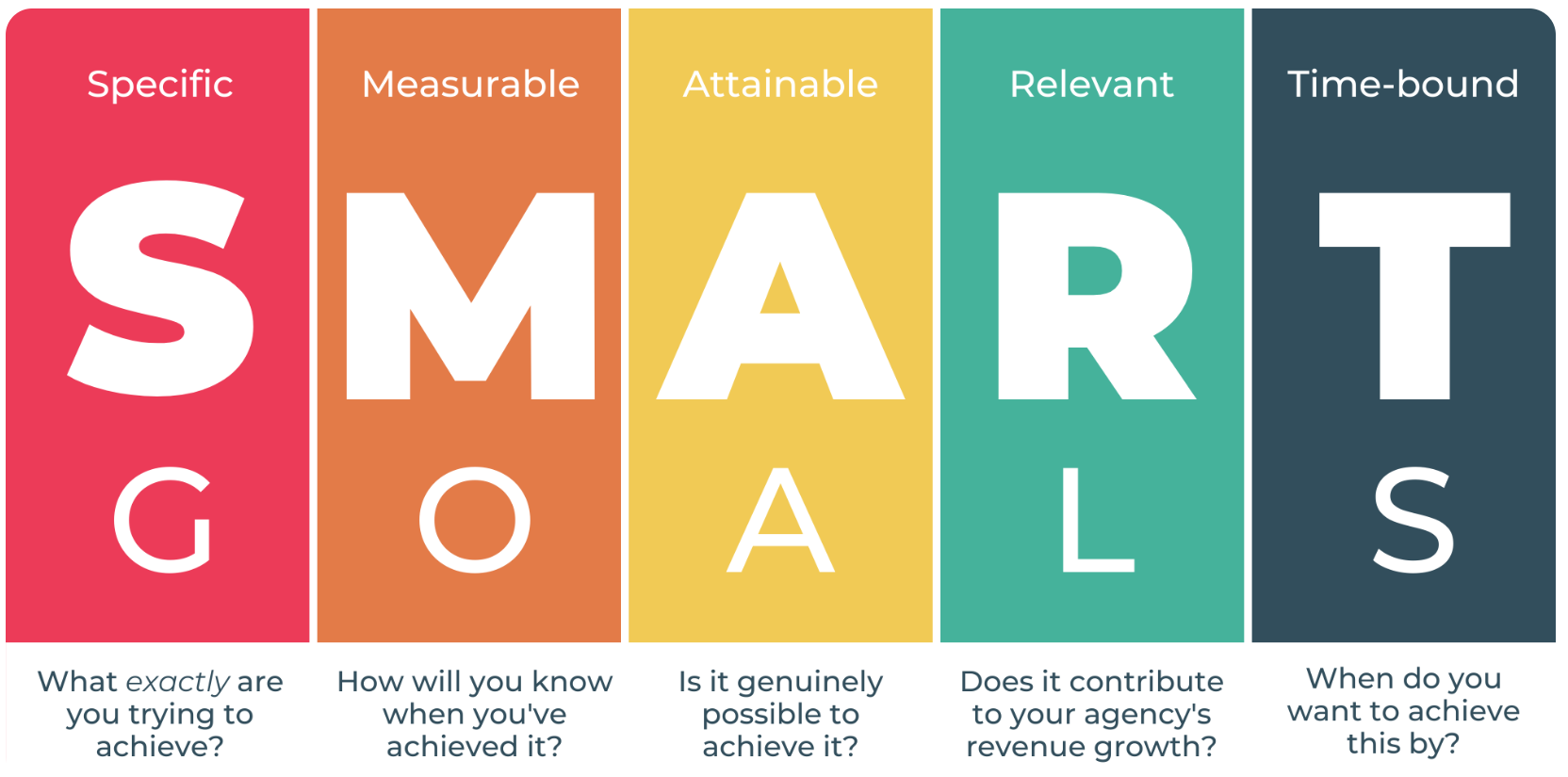
→ Click Here to Launch Your Online Business with Shopify
SMART goals are a methodology for setting goals in a structured, well-defined, and actionable way. SMART is an acronym that stands for:
- Specific. What is it exactly that you’re trying to achieve?
- Measurable. What things will change to tell you that you’ve achieved the goal?
- Attainable. Is it a reasonable, achievable goal, or is it too much to pull off?
- Relevant. How does it tie into the “bigger picture” of what you’re trying to accomplish, whether it’s business or life goals?
- Time-bound. What day and/or time will you achieve the goal by?
The origin of the SMART framework
The SMART framework was created by consultant and corporate planning director George T. Doran . It was first published in a 1981 issue of the journal Management Review to help write management goals and objectives in a better way.
It’s been adapted over time—you can see this by the fact that his original SMART acronym was slightly different from the one we’re using. (Doran’s was Specific, Measurable, Assignable, Realistic, and Time-bound.)
How to write SMART goals
Let’s look at some fundamentals as you set your SMART objectives. We’ll break them down based on each of the five elements.
Specific. Be as granular as possible in describing exactly what it is you want to do, instead of vague language that’s hard to track and measure. For example, instead of saying “Get more sales,” try something more specific, like “Increase revenue by 50% by the end of the year.”
Measurable. Outline how you’ll be sure you’ve achieved the goal, using numbers or milestones if possible. In the example above, you could keep the milestone at a 50% increase, or you can use the specific dollar amount that the extra 50% would bring you to, like $100,000. Some milestone examples that meet the smart criteria include getting a certification, submitting a competition entry, or building a functional prototype.
Attainable. Make sure it’s a reasonable, achievable goal within the timeline you set. For example, if there are only 2 months left in the year, it’s probably going to be unrealistic to increase your revenue by that much. You should always dream big, but keep those big dreams in a place where you can reach them.
Relevant. Think about how this smaller goal ties into the “bigger picture,” whether you’re working toward business or life goals. In this example, an increase in revenue is almost always aligned with a long-term goal of many businesses, which is to keep growing and becoming more profitable.
Time-bound. Choose a target date or deadline to keep you motivated and able to track progress. In our example, the deadline is the end of the year. We know what needs to be done in the interim, which helps us to further break the task down into smaller actionable steps.
10 examples of SMART goals

Now that you understand what they are and how to write them, let’s look at some SMART goal examples to inspire you.
These 10 SMART goal-setting examples showcase how you can create powerful personal, business, work, and leadership goals.
1. SMART goal for getting fit
I’m going to follow the Nike app training program to run a marathon without stopping, six months from now.
Interpretation:
- Specific: I’m going to start running daily and train for a marathon.
- Measurable: I will follow the Nike app training program to run a full marathon without stopping.
- Achievable: I have done some running before, my body is reasonably healthy, and the marathon is six months from now.
- Relevant: I want to become a fit, healthy, and strong person—I want to be full of vitality, energy, and zest for life.
- Time-bound: I have signed up for a marathon six months from now.
2. SMART goal for completing a personal project
I’m going to write a 60,000-word novel in six months, finishing on June 30. I will do this by writing 2,500 words per week.
- Specific: I’m going to write a 60,000-word sci-fi novel.
- Measurable: I will finish writing 60,000 words in six months.
- Achievable: I will write 2,500 words per week.
- Relevant: I’ve always dreamed of becoming a professional writer.
- Time-bound: I will start writing tomorrow, January 1, and finish June 30.
3. SMART goal for improving relationships
I will call David, Sarah, and Mom twice per week for three months to develop my relationships with them.
- Specific: I will develop my relationships with David, Sarah, and Mom.
- Measurable: I will call each of these people twice per week.
- Achievable: I talk to these people regularly, and we always say how it would be nice to talk more.
- Relevant: I want to deepen my social ties, feel more loved and supported in my life, and support those I love.
- Time-bound: I will stick to this plan for three months, then re-evaluate and plan my next steps.
4. SMART goal example for starting a business
I will start a dropshipping business with Shopify on Saturday. I will spend one hour on this business each day and work to land my first sale within two weeks.
- Specific: I will start a dropshipping business .
- Measurable: I will work on my business for one hour each day, and the goal is to land my first sale within two weeks.
- Achievable: I have watched some videos on dropshipping and know that I can use Shopify to start a business quickly .
- Relevant: I want to quit my job, work from home, and be my own boss .
- Time-bound: I will begin on Saturday and land my first sale within two weeks.
5. SMART goal example for marketing a business
I will begin a Facebook Ads course tomorrow and start investing 30% of my business profits into paid campaigns within one week. I will continue to learn and invest in Facebook Ads to double my sales within three months.
- Specific: I’m going to learn how to use Facebook Ads and invest 30% of my profits into this marketing channel.
- Measurable: The goal is to double my sales within three months.
- Achievable: I have a reasonably successful small business that is ready to handle a growth in sales.
- Relevant: I want to make six-figures per year working from home.
- Time-bound: I will start a Facebook Ads course tomorrow and start running paid campaigns within one week. Then, I’ll continue to learn and scale-up, and evaluate my results in three months.
6. SMART goal example for growing a business
I will hire a VA to manage customer service inquiries within two weeks to free up time. I’ll use this time to research and add five new products to my store before the end of the month.
- Specific: I’m going to hire a virtual assistant (VA) to manage customer service inquiries for me. That way, I can free up time to conduct product research and add new products to my store.
- Measurable: The goal is to hire a VA and add five new products to my store.
- Achievable: I have some experience hiring freelancers on Upwork, and I understand how to find winning products .
- Relevant: I aim to work on my business, not in my business so that I can grow my income and work less hours.
- Time-bound: I will hire a VA within two weeks and then add five new products to my store within one month.
7. SMART goal example for landing a dream job
I will land my dream job working for a SaaS company like Shopify and travel long-term as a digital nomad. To achieve this, I will apply to one job per week for two months—submitting a total of eight job applications.
- Specific: I’m going to become a search engine optimization (SEO) specialist for a leading software-as-a-service (SaaS) company like Shopify and work remotely.
- Measurable: I will apply to a minimum of eight job applications within two months.
- Achievable: I’ve worked as an SEO specialist for two years in an office for an accounting firm, and I’m good at my job.
- Relevant: I want to collaborate with interesting people, contribute to something innovative, and join a company with room for me to grow. Also, I want to travel long term as a digital nomad .
- Time-bound: I will apply to eight suitable job applications within two months by submitting one application per week.
8. SMART goal example for earning a promotion
I’m going to land a promotion to become a senior SEO specialist at my company. I will do this by taking on an additional work project within two weeks, completing the required training within six weeks, and submitting my application within eight weeks.
- Specific: I’m going to earn a promotion and become a senior SEO specialist.
- Measurable: I will complete the required training and submit my application. I will also take on an additional work project to demonstrate my readiness to shoulder more responsibility.
- Achievable: I’ve worked as an SEO specialist for three years, and my work has produced significant results. Also, my company is looking to take on another senior SEO specialist at the end of this quarter.
- Relevant: I want to keep learning and challenging myself as I progress in my career.
- Time-bound: I will take on one additional work project within the next two weeks, complete the required training within six weeks, and submit my application within eight weeks.
9. SMART goal example for improving team results
I will lead my team to improve our qualification process so that the team only calls high qualified leads that are likely to purchase. We aim to increase sales by 5% within three months.
- Specific: I’m going to help my team qualify sales leads better, so they only spend their time selling to people who are likely to purchase.
- Measurable: The goal is to increase the team’s sales by 5%.
- Achievable: We’ve identified the top reason our leads don’t purchase: they don’t fully match our target market . If we can ensure everyone we call matches our target market, our sales will likely increase.
- Relevant: Our core aim is to grow company sales by more than 20% this year.
- Time-bound: We aim to increase sales by 5% within three months before re-evaluating our strategy.
10. SMART goal example for managing a team
I will improve team communication and free up wasted time by implementing a team messaging solution within two weeks. The aim is to cut the time spent on messaging from an average of 1.5 hours to 45 minutes per day per team member within onbe month.
- Specific: I’m going to help the team communicate better to free up time wasted on communication inefficiencies. This way, the team can spend this time on their core responsibilities instead.
- Measurable: Our time-tracking software shows that team members spend an average of 1.5 hours per day on email. We aim to cut this time in half to 45 minutes per day.
- Achievable: We can avoid the confusion created by long email chains with a team messaging solution like Slack. If we implement a messaging solution, it’s plausible that we can drastically reduce the time spent on email.
- Relevant: I want to empower my team to produce their best work and increase their impact by reducing time wasted on unnecessary and inefficient tasks.
- Time-bound : We will implement a messaging solution within two weeks and half the time spent on communication within the next month
5 tips for using SMART goals

1. Break larger goals into smaller ones
If your goal feels overwhelming, or if you feel like there are a lot of moving parts to keep track of, break it down into smaller goals. This way, you’ll be able to move through the process in a linear way, clearing out any dependencies that are getting in the way of advancing.
2. Share with everyone involved
Naturally, you’ll share your SMART goals with anyone who’s directly involved in making them happen. But you might also consider sharing with others who are involved, but not necessarily in a direct way. These third parties can help keep you accountable and motivated, and you’ll all be on the same page.
3. Physically write them down
If you keep the goal in your head, the odds dramatically increase that you might forget or unintentionally move the target. By writing them down, you’re ensuring that they stay crystal clear. Try putting your goal somewhere noticeable, like a sticky note on your desk or a calendar alert as you hit critical milestones.
4. Pivot or tweak as needed
As with many things in life, it might not work out as you planned. (It’s practically a guarantee that this will happen eventually.) When roadblocks or changes come up, keep a flexible and creative mindset so you can roll with the punches. Think about how you can make adjustments while still keeping the main objective intact.
5. Failure is OK—learn from it
Building off the previous point: sometimes, staying flexible isn’t enough. Don’t be deterred by failure. It’s a natural part of life, and even the world’s most successful people have plenty of failures that taught them valuable lessons to get where they are now.
Leading with your own smart goal
If you’re struggling to meet your goals, or looking for an interesting new way to frame them, SMART goal setting might be right up your alley. When you follow each of the five steps, you’ll have a clear and straightforward path to work toward. You’ll also be able to better coordinate and collaborate with others, whether they’re your team, stakeholders, or friends and family.
Want to learn more?
- How to Improve Yourself: 20 Practical Self-Improvement Tips
- 10 Benefits of Reading Books: Why You Should Read Every Day
- How to Motivate Yourself: 20 Ways to Find Motivation
- 11 Best Motivational Podcasts That Will Unleash Your Potential

The 60 Most Inspiring and Successful Shopify Stores
Here is a list of 60 inspiring online Shopify stores. All of them are successful eCommerce businesses. Each of these bu…
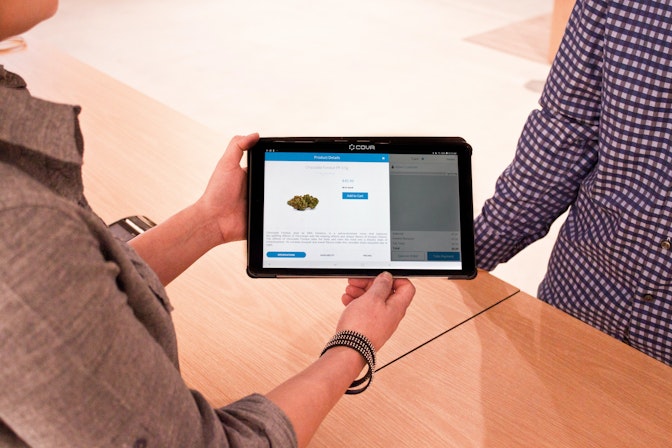
Stock Keeping Unit: What Is It and Why It Matters For Your Business
Unsure what a stock keeping unit is? This post covers everything about SKUs and their role in business success.

SEO Report: Definition, Components, and How to Create
Craft an impactful SEO report with this guide. Learn actionable tips and expert insights to ensure your report achieves…
Oberlo uses cookies to provide necessary site functionality and improve your experience. By using our website, you agree to our privacy policy.
Professional Examples of SMART Goals for Work
By Kate Eby | October 14, 2022
- Share on Facebook
- Share on LinkedIn
Link copied
Using the SMART goal framework can help you and your team achieve your professional goals. We’ve asked experts for their best examples of SMART goals in the workplace and outlined them in this article.
Included on this page, you’ll find real-life SMART goal examples for human resources , business operations , insurance , and more. You’ll also see examples of short-term and long-term SMART goals , and famous SMART goals for work leadership . Plus, you can download a SMART goal worksheet template with sample text for free.
What Are SMART Goals for Work?
SMART goals are statements that meet certain criteria. SMART is an acronym that stands for specific, measurable, achievable, relevant, and time-bound . Defining SMART goals makes success more likely. Use SMART goals at work to complete tasks and improve processes.
These are the criteria that all SMART goals for work need to meet:
- Specific: Think about the teams and people involved in a specific scenario. What is the goal you want to achieve, product you want to build, or process you want to improve? What actions will you take to meet that goal?
- Measurable: Goals should be quantifiable. Include percentage increases or decreases, product quantities, dollar amounts, process durations, or other numerical data that can measure success.
- Achievable: Consider your company’s available resources. Goals should be realistic, given your available team members, finances, technology, time, and other resources. Outcomes should not rely on external factors such as stock prices or weather. This criterion is sometimes called attainable .
- Relevant: Pick a goal that aligns with the vision for your company or department. Achieving this goal should move you closer toward larger organizational goals. Think about what makes this result important.
- Time-Bound: Set a specific timeframe within which you can achieve the goal. You can list this in days, weeks, months, or even years. This criterion is sometimes called trackable .
Professional Examples of SMART Goals
We’ve rounded up real-life examples of professional SMART goals. Learn how experts use SMART goals to hit targets and show work leadership. Find examples for various industries, departments, and work scenarios.
Marketing SMART Goal

Murray Dare is the founder of Murray Dare Marketing Consultancy . He describes a goal to distribute digital brochures for an international internship provider.
“We decided to set a goal to grow leads by increasing the number of brochure downloads by 50 percent in the next six months,” explains Dare. “Currently, 34.33 percent of people who download a brochure eventually go on to apply. We want to increase the clickthrough rates and, therefore, the sales.”
In order to meet this goal, Dare explains, his team would take several actions, such as linking the brochures on main industry pages, adding pop-up notifications, and developing relationships with travel and education bloggers. In addition, he says, “We started writing monthly newsletters to the existing mailing list and highlighting specific programs in each to push people to view the page and brochure.”
Here is how Dare’s marketing goal meets SMART goal criteria:
- Specific: Include download links on industry pages, add pop-up advertisements, and create backlinks on influencer websites — these were all specific actions his team took to meet its goal.
- Measurable: The team needs to see a 50 percent increase in brochure downloads in order to meet this goal.
- Achievable: Based on data and current clickthrough rates, a 50 percent increase should be attainable. “We were already receiving downloads organically without pushing or promoting the brochures,” Dare adds.
- Relevant: “Our data suggested that 34.33 percent, or just over one-third, of those downloading the brochure in 2022 so far went on to apply,” explains Dare. This goal will move the client closer to their larger goal of increasing admissions.
- Time-Bound: This goal needs to be completed within a six-month time frame, “which is our average sales funnel based on data,” Dare explains.
Human Resources SMART Goal

Cynthia Okonkwo is an assistant director for human resources at the University System of Georgia and runs a human resources blog . She describes a goal to scan the physical human resources files so they can be uploaded to a new digital file management platform.
She explains the process: “Beginning on July 5, 2022, the Atlanta HR team will resume scanning the remaining physical HR files in the HR file room. Each team member will work in alphabetical order, according to employees' respective last names, by selecting a file from the file cabinet each week, beginning with employees whose last names begin with the letter A. Each Atlanta office HR team member will scan at least one paper file, in its entirety, each week. Each team member will save the file that they scan to the HR confidential drive in File Explorer in the folder titled HR Paper File Scanning Project. The team member who completes a file scan will place a check mark beside the employee's name on the rolling checklist on the HR teams site to indicate scan completion. That same team member will place a red check mark on the scanned file folder and place it back in the file cabinet where they pulled it from.”
Here is how Okonkwo’s human resources plan meets SMART goal criteria:
- Specific: “The team knows exactly what they're to work on. The team also knows where their needed resources are located,” says Okonkwo.
- Measurable: Team members have a specific number of files they need to scan each week, and there is a consistent method for tracking how many scans they’ve completed.
- Achievable: “It is realistic and achievable given our workload,” Okonkwo says. She also built in slack time, saying, “If workload allows, team members can scan more than one file in a work week.” This would allow for even earlier completion.
- Relevant: “This goal is relevant to our new digital platform migration that we are currently testing,” she explains.
- Time-Bound: “With a three-member Atlanta team, we will achieve our goal if, at the close of business on December 31, 2022, we have completely scanned at least 78 files,” she shares.
Entrepreneurship SMART Goal

Richard Clews is the founder of pantsandsocks.com . He describes a goal to secure funding for his ecommerce company.
“I like the SMART framework, and we actually included some SMART goals in our pitch when seeking funding on Seedrs.com,” says Clews. “Here’s the example that took us from four to six figures in monthly revenue.”
“Once we had enough revenue, $5,000 or more per month for several months in a row, it was time to set a new goal,” he explains. “That goal was to secure funding for two years of operational costs in the next six months. We knew we needed $250,000 or more based on current costs and expansion plans.”
In order to secure the funding, Clews explains, they would need to create a presentation for crowdfunding investors and upload it, along with marketing collateral, to their preferred crowdfunding platform. “This specific SMART goal helped us scale into what we are today,” he shares.
Here is how Clews’ entrepreneurship goal meets SMART goal criteria:
- Specific: The team knows it needs to crowdsource enough funding to scale up. They create a presentation and upload their information onto a crowdfunding platform.
- Measurable: Clews conducted research to determine a specific fundraising goal of $250,000.
- Achievable: “I’d seen similar brands get equivalent funding, or more, with similar sales, costs, and total addressable market,” explains Clews.
- Relevant: “The goal was highly relevant because the survival of our business was directly related to us getting more funding,” says Clews. Raising funds in the short term would move the company toward its long-term expansion goals.
- Time-Bound: The team had a six-month window in which to meet this goal.
Insurance SMART Goal

John Reed , Jr. is the president of Premium Finance Life Insurance. He describes a SMART goal he is using for loan brokerage at his life insurance company.
“We are launching a new service in the ultra-premium life insurance space for advisors who are recommending premium financing (PF) for their clients,” he explains. “In the past, those advisors would hire a speciality advisor and pay them a split of their sales commission to secure lending for their clients. Our new offering is loan brokerage as a service for the PF-experienced advisor. Proof of concept will be available by the third quarter of 2022, with a fully functional web-based intake form and output by the fourth quarter.”
In the new live intake form for advisors, Reed explains that they will input “10 answers about their client and receive a rate indication in under 10 minutes. The advisors can complete the form and receive a response with no personal intervention from our team. To prove this concept, a spreadsheet back end will be acceptable to demonstrate that the form answers may populate several cells in a linked sheet and an output page will be generated automatically.”
Here is how Reed’s insurance goal meets SMART goal criteria:
- Specific: The team is launching a new service so that advisors can complete an intake form for premium financing clients without intervention from the team.
- Measurable: Reed’s team will create a spreadsheet to track responses to answers so that they can provide proof of concept to stakeholders. They are also creating a form that has 10 questions and can be completed in 10 minutes.
- Achievable: The scope of this goal is small enough that it can be completed within two quarters.
- Relevant: “Bringing this [service] to life will be the first time that this offering is provided without the need for custom negotiation with multiple lenders,” explains Reed. “The market is demanding this capability, and it is not currently available.”
- Time-Bound: The proof of concept needs to be completed by the third quarter, and the web-based version needs to be functional by the fourth.
Real Estate SMART Goal

Matt Hammel is the COO and Co-Founder of AirOps . In a previous role at a residential real estate company, Hammel used the SMART goal framework to sign new renters.
He explains, “One company-wide SMART goal I set for the growth team was to sign at least 500 new residents (renters) in the month of July.
“Prior to that July, we had never set a target higher than 400 residents added in a single month,” he continues. “That said, we did a bottoms-up assessment of the number of leads coming into our marketing funnel. With some reasonable assumptions about how increases in digital ad spending would improve top of funnel leads and new lifecycle campaigns would improve conversion, we determined this stretch goal was imminently achievable, and ultimately it was.”
Here is how Hammel’s real estate goal meets SMART goal criteria:
- Specific: “The target number of residents (500), the owner of the goal (growth team), and the timeframe (month of July) were all specific,” says Reed.
- Measurable: “Measuring resident growth was a straightforward and commonly understood metric, which allowed us to rally the growth team and the overall company around this important goal,” says Reed.
- Achievable: Reed describes this as a “stretch goal,” because the company had never signed more than 400 residents.
- Relevant: “Signing 500 residents was extremely relevant to our overall company goals,” explains Reed. “Accomplishing it would put our month-on-month growth rate on track to show exponential growth for our forthcoming Series B fundraiser.”
- Time-Bound: “We time-bound the goal to the month of July, which helped create excitement and focus during an intense busy season when renters are most likely looking for a new home,” adds Reed.
Business Operations SMART Goal

Max Wesman is the COO of the employment background check company GoodHire . He describes a SMART goal to improve the onboarding procedures at his company.
“Operationally, this comprehensive process went as follows,” says Wesman. “Improve company onboarding procedures through the reconfiguration of employee training practices. Audit and evaluate existing onboarding documents and resources, such as standard operating procedures, making adjustments where necessary for clarity and more effective communication. Aim to improve uniformity of performance and reduce onboarding time by a factor of 15 to 20 percent by the following quarter.
“I also made a short list of the various factors within the process that could be optimized and used them to carve out an estimated rate of improvement,” he says.
Here is how Wesman’s business operations goal meets SMART goal criteria:
- Specific: The team needs to perform a standard audit of existing onboarding processes in order to reduce onboarding time.
- Measurable: If the effort is successful, then the average onboarding time will decrease by a factor of 15 to 20 percent.
- Achievable: “I referred to our onboarding procedures of the past and present to determine what was both realistic and achievable,” explains Wesman.
- Relevant: By achieving this goal, Wesman was able to improve an important process in his organization.
- Time-Bound: The goal needs to be completed by the end of the following quarter.
Sales SMART Goal

Chris Mitchell is the founder of the LinkedIn agency Intelus Agency . Mitchell describes a SMART goal he used to generate more marketing-qualified leads (MQLs).
“We want to generate at least five MQLs per week on LinkedIn,” says Mitchell. “Each lead generated from the LinkedIn outreach campaign will be added to the CRM or a spreadsheet via a Zapier integration that gets triggered when an MQL label is added in our LinkedIn outreach software. The channel LinkedIn outreach will be applied to the contact record to track where leads came from.
“Our goal is to reach at least five MQLs per week from LinkedIn outreach within 45 days of campaign launch,” he explains.
Here is how Mitchell’s sales goal meets SMART goal criteria:
- Specific: The team needs to generate a specific number of MQLs each week in order to achieve the goal.
- Measurable: The team needs to generate five or more MQLs per week on LinkedIn. “To measure this, we will compile a report in our CRM to show a weekly breakdown of MQLs generated from LinkedIn,” says Mitchell.
- Achievable: “We believe this is achievable based on our average acceptance rate of 60 percent on connections sent, our average reply rate of 40 percent, and our average reply to lead rate of 20 percent,” explains Mitchell.
- Relevant: “This goal and these leads are highly relevant because we only work with B2B companies, and studies have shown that 80 percent of B2B leads come from LinkedIn,” he adds.
- Time-Bound: “Our goal is to reach at least five MQLs per week from LinkedIn outreach within 45 days of campaign launch,” explains Mitchell.
Professional Development SMART Goal Example

Simon Elkjær is the Chief Marketing Officer at avXperten . He describes using a SMART goal to expand his online professional network.
“Expanding your professional network is one of the most important parts of professional development and you can achieve that by setting SMART goals. Doing so will make it easier for you to envision and accomplish each step or task you need,” says Elkjær.
He plans to surpass the number of connections he makes this year with those he made last year by messaging people, commenting on posts, and sharing content that potential connections might find interesting.
Here is how Elkjær’s professional development goal meets SMART goal criteria:
- Specific: “I want to expand my professional network by interacting with others on the right social media sites and other platforms,” says Elkjær.
- Measurable: “The number of people I connect with this year should outnumber the connections I’ve made last year,” he explains.
- Achievable: This goal requires that Elkjær continue to engage with people on social media. “I will continuously communicate with people by messaging them, commenting on their posts, and sharing content they might find interesting,” he says.
- Relevant: “Taking steps to establish connections and build a strong presence will help me create a great professional network and open me up to multiple opportunities for growth and career advancement,” says Elkjær.
- Time-Bound: “I’ll keep track of my yearly goal by assessing my performance every three months and making necessary changes and improvements to my strategy with the help of the data I have,” he explains.
Nursing SMART Goal Example
Medical professionals can use SMART goals to earn more money, increase their empathy and compassion for patients, expand their knowledge, and more.
Let’s imagine a nurse who has his Associate Degree in Nursing (ADN) but wants to increase his earning potential by getting a Bachelor of Science in Nursing (BSN). He aims to complete and send in applications to three universities by the December 15 deadline. He’ll need to fill out application forms, write essays, secure recommendations from previous teachers and supervisors, and assemble additional materials, such as transcripts.
Here is how this nursing goal meets SMART goal criteria:
- Specific: The goal is to complete and submit all the application materials for BSN programs.
- Measurable: He has found three programs where he wants to apply. If he completes three applications, he will achieve his goal.
- Achievable: He cannot control whether or not he is accepted into the programs, but completing all of his application materials is within his control.
- Relevant: His long-term vision is to increase his earning potential. Gaining admission into a BSN program is a necessary step toward that desired outcome.
- Time-bound: The applications have a deadline of December 15, so he needs to turn in all of his materials by that date.
Teaching SMART Goal Example
Teaching professionals can use SMART goals to increase classroom engagement, improve their skills and knowledge base, fundraise for educational programming, and more.
Let’s imagine a teacher who has noticed her fifth-grade students are experiencing exam stress. She decides to allot 15 minutes of class time per day to learning and practicing stress reduction techniques with her students for the next two months. She will distribute questionnaires to measure her students’ exam-related stress levels on the first and final days of this experiment to measure its effect. Her goal is to reduce the stress levels by 30 percent in two months.
Here is how this teaching goal meets SMART goal criteria:
- Specific: The teacher wants to reduce exam-related stress among her students by introducing a stress-reduction curriculum into her lesson plan.
- Measurable: By distributing a questionnaire on the first and final day of her experiment, this teacher can measure the success of her stress-reduction training.
- Achievable: This goal only requires 15 minutes per school day to accomplish.
- Relevant: The teacher knows that reducing stress can improve test scores and overall outcomes, so this goal is relevant.
- Time-Bound: This goal requires 15 minutes per day and will last for two months.
Business Analyst SMART Goal Example
Business analysis can use SMART goals to improve processes or products, strengthen relationships with clients and stakeholders, develop communication skills, and more.
Let’s imagine a business analyst who consults for a large clothing retailer. After an audit of the company’s finances, she determines that the company needs to cut production costs. She creates a plan to sell excess materials, such as fibers and textiles, rather than recycling them. She also plans to change 25 percent of fabrics purchased to a less expensive option. By doing so, she aims to decrease company spending on production costs by 10 percent in six months.
Here is how this business analyst goal meets SMART goal criteria:
- Specific: The business analyst wants to reduce costs by trimming expenses off production.
- Measurable: She will know she has been successful if production costs decrease by 10 percent.
- Achievable: Selling excess materials and purchasing cheaper materials will reduce costs.
- Relevant: Business analysts use data analysis to help companies make improvements. In this case, she knows that decreasing production costs will improve the company’s financial situation.
- Time-Bound: She aims to meet her target by the end of a six-month period.
Office Manager SMART Goal Example
Office managers can use SMART goals to increase employee satisfaction, improve an office budget plan, improvise administrative procedures, and more.
An office manager reads studies showing that providing employees with learning opportunities can increase workplace productivity. He plans to pitch an initiative to company executives to start a scholarship program for employees who want to take enrichment and certification courses at the local university. He aims to draft and present a well-researched, convincing proposal by the end of five weeks.
Here is how this office management goal meets SMART goal criteria:
- Specific: The goal is to craft an effective proposal to initiate a scholarship program for employees looking to further their education.
- Measurable: In this case, the goal is measurable because if he completes the initiative, he will meet the goal.
- Achievable: With his years of experience proposing projects and initiatives, this office manager knows it will take 15 hours total to draft a successful proposal. He has time in his schedule to set aside four hours each week for proposal work, which gives him more than enough time to complete.
- Relevant: Introducing more educational opportunities will increase productivity in the workplace, which aligns with the office manager’s overall goals.
- Time-Bound: He has five weeks to submit his proposal.
Sales SMART Goal Example
Sales professionals can use SMART goals to hit quotas, increase their closing ratios, expand their professional networks, and more.
A sales representative at a data storage company wants to increase his revenue. He plans to conduct a strategic review of all customer accounts above $50,000 per year and research opportunities for cross-selling and upselling. Within one business quarter, his goal is to successfully sell upgraded service or additional products to three of his top customers.
- Specific: The goal is to upsell or cross-sell to three customers that currently spend $50,000 per year or more.
- Measurable: In this case, the goal is measurable because he has to cross-sell or upsell to three customers in a defined group.
- Achievable: This sales representative has positive relationships with his top customers. Based on his previous sales record, he should be able to meet this goal.
- Relevant: This goal will help move him toward his larger goal, which is to increase revenue.
- Time-Bound: He must complete the goal within one business quarter.
Customer Support SMART Goal Example
Customer support teams can use SMART goals to increase customer satisfaction, reduce the cost of each customer support visit, improve agent satisfaction, and more.
A customer support team for a laptop manufacturer notices that their customer support calls have risen, which has increased customer wait times. Their team leader sets a goal of reducing customer calls by 25 percent in four months. They will review all incoming calls over the previous six months, identify the top three most common reasons for calls, and update the online help pages so that these problems are easier for customers to troubleshoot on their own.
- Specific: The goal is to reduce customer support calls by 25 percent.
- Measurable: The team already tracks the number of incoming customer support calls, so this goal is measurable.
- Achievable: The team can make targeted edits to the troubleshooting page on the company website so that fewer customers need to call for support.
- Relevant: By achieving this goal, the team will increase overall customer satisfaction.
- Time-Bound: The team needs to complete this goal within four months.
Productivity SMART Goal Example
Employees across industries can improve their productivity with SMART goals. They are useful for prioritizing tasks, arriving at work better rested, holding more efficient meetings, and more.
A magazine editor has been having trouble getting her work done recently because so many meetings clog up her calendar. She sets a goal of reducing her weekly time spent in meetings from 20 hours to 15 hours by the end of the month. She will identify and cancel non-essential meetings.
- Specific: The goal is to reduce the number of hours spent in meetings weekly.
- Measurable: This goal is measurable because she needs to decrease her weekly meeting time by five hours.
- Achievable: The editor knows that she has at least five hours of non-essential meetings each week that she can cancel.
- Relevant: By achieving this goal, she will be able to spend more time on other essential work, such as finding stories, reviewing pitches, and editing articles.
- Time-Bound: She will complete the goal within one month.
Management SMART Goal Example
Managers in any field can use SMART goals to improve team productivity, increase the job satisfaction reported by team members, execute high-impact projects, and more.
An office manager notices that there have been communications breakdowns between the operations and sales teams. She decides to spend one week shadowing the sales team and another week shadowing the operations team. Finally, she will spend a week writing a report that includes strategies on improving communications.
- Specific: The goal is to create a report that will have key information the sales and operations teams need to improve communications.
- Measurable: Once she has a completed report, she will know she has met her goal.
- Achievable: She has previous experience writing these types of reports and knows she will be able to complete it in the allotted time.
- Relevant: This goal will help the office run more efficiently and reduce communication-based errors.
- Time-Bound: She will complete this goal in three weeks.
Long-Term vs. Short-Term SMART Goal Examples

Cornelius Fichtner is the founder of OSP International and an expert in project management. He describes both a long-term and a short-term SMART goal that he used for his PM Exam Simulator .
Fichtner’s short-term goal was to create the exam simulator in six month. “Before launching PM Exam Simulator, we got hundreds of requests for one from listeners and customers (in other businesses),” explains Fichtner. “When I realized the need, I wanted to make creating an exam simulator a priority. I outlined the basic features I wanted in the exam, gave my team six months to develop a beta version, and we got to work.”
This is how Fichtner’s short-term goal meets SMART goal criteria:
- Specific: The goal, he explains, is to “complete a functional PM Exam Simulator.”
- Measurable: “The exam simulator needs to be functional,” he says. While this is not a specific number, it is easy to determine.
- Achievable: In order to make the goal realistic, he explains, he didn’t “expect it to be perfect.” There would be time to improve the simulator later.
- Relevant: “This goal was relevant because it was the next logical step in our business,” he shares.
- Time-bound: His team had six months to complete the goal.
Fichtner’s long-term goal, however, was to increase online sales by 50 percent over 24 months: “This was one of our long-term SMART goals circa 2019. It became the true north for our business for a few years.”
This is how Fichtner’s long-term goal meets SMART goal criteria:
- Specific: The goal is to improve sales for the exam simulator.
- Measurable: “Sales numbers are easy to measure, and we had a specific goal — an increase in 50 percent,” he says.
- Achievable: Fichtner explains that his team was already showing successful sales numbers. “We felt the goal was achievable because we had good months where we already met our goals.”
- Relevant: “We needed to keep growing to fund the development of our exam simulator over time,” he explains.
- Time-bound: His team set a deadline two years out to ensure they would stay within their timeline.
Read this guide on SMART goals for project management to learn more.
Famous SMART Goal Examples
The SMART goal framework is the most popular method of goal-setting available. It has been used for many real-life scenarios, even in some ventures that have since become famous.
Here are two famous examples of SMART goals:
- Specific: The goal is to increase the realized gross profit margin of the company by reducing operating costs.
- Measurable: Turner Jr. wanted to reduce costs until they account for less than 20 percent of sales.
- Achievable: Turner Jr. knew the goal was achievable because he had already been progressing toward it when he set it. “Keeping a tight rein on costs, we kept bringing operating expenses down,” he writes.
- Relevant: “Throughout my years with the company, our realized gross profit margin ranged between 23 and 29 percent. It never hit 30. Our competition was generally in the 30s,” he shares in the book.
- Time-bound: Although he doesn’t specify in his memoir the deadline he’d set for himself, he kept the goal manageable enough that his team could accomplish it within a year.
- Specific: President Kennedy needed to secure additional funding in order to accomplish his larger goal of having a man on the Moon.
- Measurable: He asked for an additional $7-9 billion of funding in order to provide NASA with the resources needed to achieve this goal.
- Achievable: Although this was a famously ambitious goal, NASA is a large government agency with ample resources. President Kennedy had the power to persuade Congress that this was a worthy mission.
- Relevant: His larger goal was to safely complete a manned mission to the moon in order to win the space race, so securing funding would achieve that goal.
- Time-bound: President Kennedy told Congress , “I believe that this nation should commit itself to achieving the goal, before this decade is out, of landing a man on the moon and returning him safely to earth.” NASA achieved this goal in July 1969.
Professional SMART Goal Examples Cheat Sheet for Microsoft Word
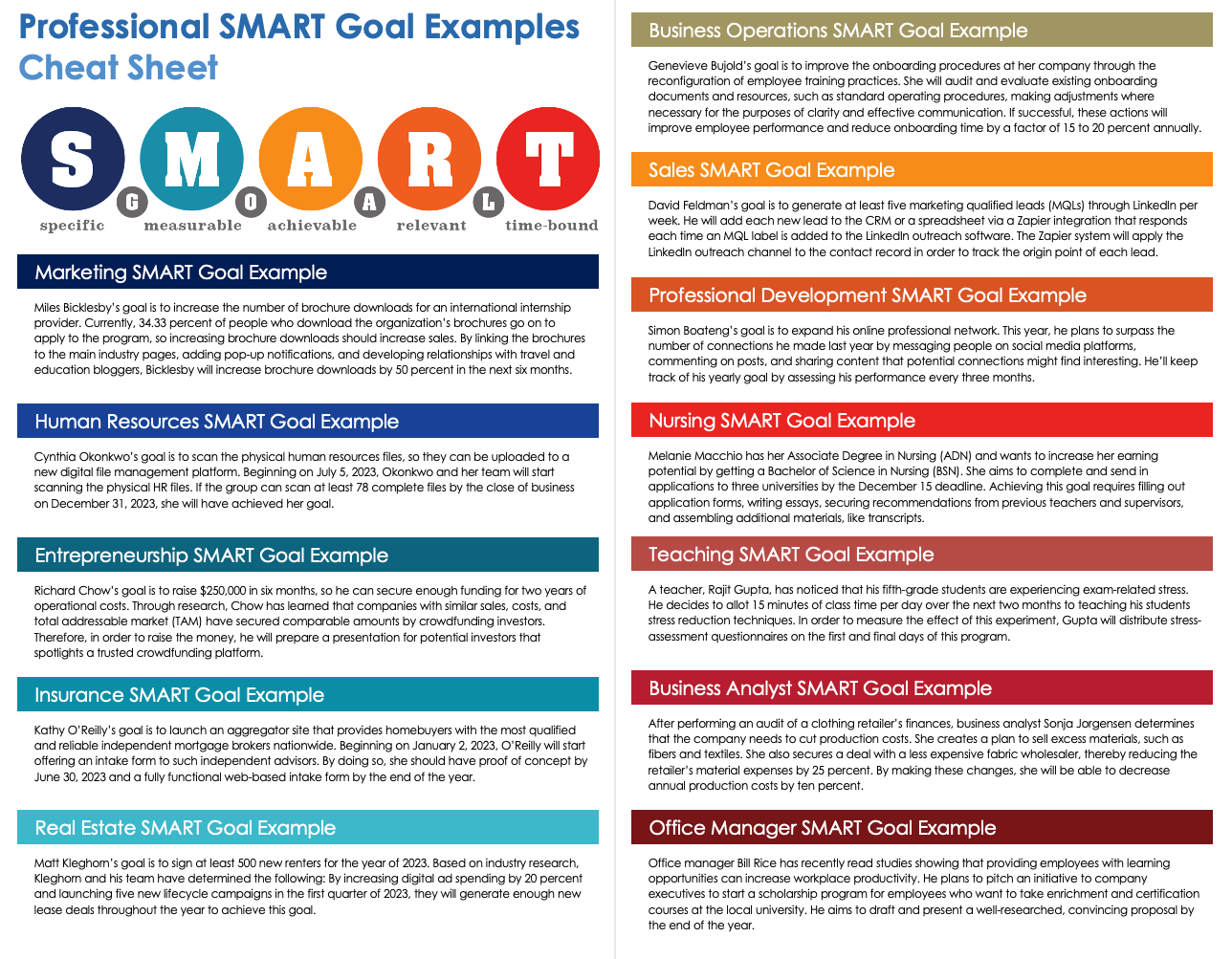
Download the Professional SMART Goal Examples Cheat Sheet for Microsoft Word
Download and print this cheat sheet of a list of helpful examples of SMART goals for work. You’ll find condensed versions of the real-life SMART goal examples listed above, including examples of SMART goals for marketing, human resources, entrepreneurship, and more. The sheet also includes helpful hypothetical examples for professionals in teaching, nursing, business analytics, and office management.
SMART Goals Worksheet Example Template for Microsoft Word
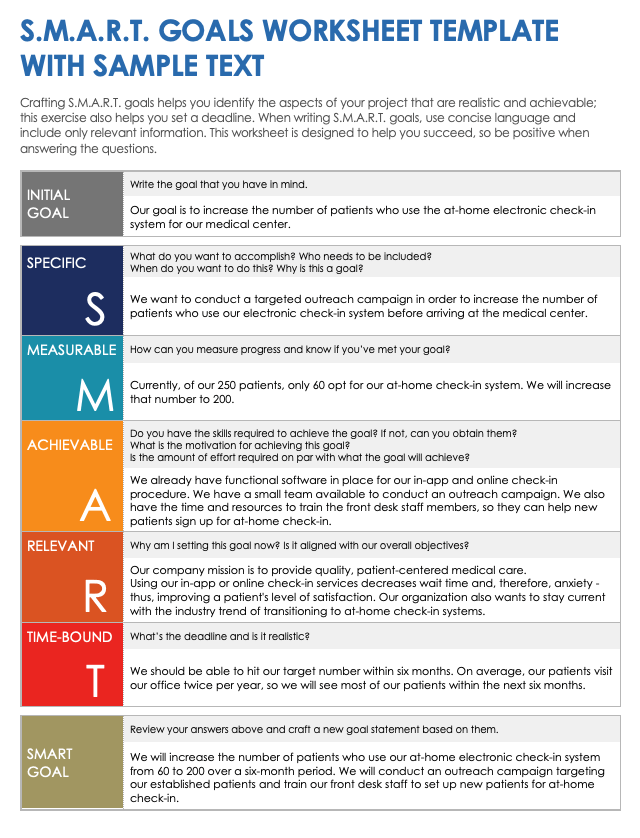
Download the SMART Goals Worksheet Template for Microsoft Word
Download the SMART Goals Worksheet Template with Sample Text for Microsoft Word
Use this basic worksheet template to craft your professional SMART goal. The worksheet includes space to explain how your goal is specific, measurable, achievable, relevant, and time-bound. Print the blank worksheet and complete it by hand, or download it and type your responses directly into the document. The worksheet template with sample text includes a SMART goal example for work in a healthcare setting.
For additional goal tracking resources, see this list of free, downloadable goal tracking and setting templates .
Easily Track and Manage the Progress of Your Professional Smart Goals with Smartsheet
Empower your people to go above and beyond with a flexible platform designed to match the needs of your team — and adapt as those needs change.
The Smartsheet platform makes it easy to plan, capture, manage, and report on work from anywhere, helping your team be more effective and get more done. Report on key metrics and get real-time visibility into work as it happens with roll-up reports, dashboards, and automated workflows built to keep your team connected and informed.
When teams have clarity into the work getting done, there’s no telling how much more they can accomplish in the same amount of time. Try Smartsheet for free, today.
Discover why over 90% of Fortune 100 companies trust Smartsheet to get work done.

How Smart Budgeting for Travel Can Enhance Your Global Adventures
Last Updated on May 2, 2024
Traveling can be fun, exciting, and adventurous. However, it doesn’t come cheap. You can travel the world and be smart when it comes to budgeting your adventures now and in the years that follow. In this guide, we’ll show you how to get it done without dealing with any financial stress.
We’ll show you how to explore effective budgeting strategies while being able to get the most out of your experience of traveling the world while sticking to a budget. Ready to get started? Before you pack your bags, these are some things you’ll want to consider.
Setting Your Travel Budget
You need to set a travel budget by estimating your total expenses. These include, but are not limited to, your flights, accommodations, transportation, meals, activities, and other expenses.
Please bear in mind that you should also save up for any unexpected expenses in your budget. To cover emergency medical costs, last-minute changes in plans, or even souvenirs that you might see and grab for yourself. Having this safety net can also prevent financial stress while you are traveling, wherever you may be.
Research and Compare Financial Services
Financial services are something that you’ll want to consider. Please note that different destinations may offer different services and payment options. It is important to be well informed about them so you can be able to save money and even peace of mind knowing you’re covered if things go wrong.
For example, if you are planning on visiting Mexico or Latin America, you’ll want to use this definitive guide to managing credit in Mexico (go to credito.com.mx to learn more).
As for other destinations, it’s also important to consider researching other financial products. These may include, but are not limited to, credit cards, travel loans, and even traveler’s checks. If you’re looking to go down the card route, you’ll want to find one that contains no foreign transaction fees.
You could consider finding one that has travel rewards. This way it will save you money not only on international transactions but will also give you excellent perks such as free baggage or even access to airport lounges, among others.
Prioritize Your Experiences
Before traveling to your destination, it’s always a good idea to plan out your itinerary. Just because you’re traveling on a budget doesn’t mean you have to compromise on the experience you want to customize for yourself.
You’ll want to create a list of must-see attractions and activities (like one of the many observatories in New York City ) and from there you can plan your budget around them. Yes, it is possible to maximize your traveling experience while sticking to a budget.
Embrace the Local Culture
If you want to have fun while making it cost-effective, this is where embracing the local culture will come into play. One of the things you can do is check out local markets, eateries, and attractions as opposed to spending your time in tour spots that can get very pricey. Dining at local restaurants will probably be cheaper than establishments that are more focused on tourists.
It also allows you to try local and regional cuisines. You might allow yourself to acquire a unique taste of the culture. Besides, isn’t it nice to maximize your experience by immersing yourself in the local culture of a destination you’re visiting? For instance, if you are traveling to Mexico or Latin America, you might be surprised by how much better the food tastes there than it would at a local Mexican restaurant.
Leveraging Loyalty Programs and Rewards
Going back to financial services, if you use certain loyalty cards or even other financial services that offer travel rewards, you might want to take advantage of them. You’ll have points and rewards that you can use to redeem for flights, accommodations, and others. This can certainly be a blessing for you whenever you want to save money on travel expenses.
Credit cards with travel rewards or even frequent flier programs will be great to use. You could rack up enough points for free flights, hotel stays, and plenty more. Now that is smart budgeting and then some.
Final Thoughts
Traveling on a budget is easier than you think. So be sure to follow this guide so you can be able to get the best out of your global adventures while being able to save money in the process. With some of the financial services that you choose, you could rack up points before, during, and after your trip. This way it can make things a lot easier for the next trip you plan, wherever you may be going.
Related posts:
- A Woman’s Handbook For Accommodation Safety During Trips
- How to get from Florence to Pisa (by train, bus and tour)
- The Most Epic Iceland Road Trip, Part III: Highlights Of Northern Iceland
- Polaroid of the week: Love padlocks on the Brooklyn Bridge

SMART Goals for Teachers: 10 Examples [+ Free Template]

Teaching is a demanding profession; there’s no doubt about it. Beyond expertise in subject matter, teachers need patience, empathy, the ability to cater to diverse student needs, and more — the list goes on. The best way to achieve those important classroom components is by utilizing SMART goals for teachers. The acronym describes a checklist of criteria for setting successful goals, meaning they should be specific, measurable, achievable, relevant, and time-bound.
Before embarking on SMART goals of your own, dedicate a few minutes to exploring the benefits and strategies associated with this method. Understanding SMART goals can empower educators like you to make meaningful progress for your students and advance your own career.
What Are SMART Goals for Teachers?
The SMART goal framework is intended to make your top teaching professional goals achievable. Each step of the process focuses on a crucial component of goal-setting:
- Specific: There should be no confusion when it comes to setting goals. Be clear and concise about what you want to achieve.
- Measurable: You’ll need to establish methods of tracking progress and determining when the goal is achieved.
- Achievable: Make sure your goal is achievable by considering the resources and skills you’ll need, as well as any possible challenges you could encounter.
- Relevant: Decide whether your goal is worth the time, effort, and resources required to achieve it. It should benefit either your professional development or have a direct, positive impact on students.
- Time-bound: Set a definite deadline by which you will complete the goal and hold yourself accountable to benchmarks along the way. A sense of urgency helps to keep you on track.
SMART goals are useful in many different ways, across virtually every industry. In education, SMART goals can assist with a wide range of teacher responsibilities, from guiding curriculum to acquiring new skills. SMART goals for teachers are also useful for:
- Improving teaching and learning outcomes
- Fostering professional development and career advancement opportunities
- Ensuring that resources are effectively allocated
- Keeping teachers accountable and motivated
SMART Goal Examples for Teachers
The intent of a SMART goal can be big or small, as you’ll see in the examples below. Whether you’re aiming to enhance student learning outcomes or introduce new instructional techniques, these SMART goal examples demonstrate how to make the most of your time and resources. Use them as inspiration for your own classroom :
Student achievement and engagement
- Set the goal of improving the student performance average in one subject area by a specific percentage by the end of the academic year.
- Incorporate a certain number of classroom discussions and interactive assignments
Professional development
- Enroll in a certificate course in a new methodology by the start of next semester.
- Attend a certain number of workshops or training sessions.
Technology integration
- Identify and begin using an online activity/testing system that complements the existing curriculum.
- Collaborate with colleagues to implement a technology-based project.
Parent-teacher communication
- Identify and provide resources for parents to support their childrens’ education.
- Collect feedback from parents and implement at least one change based on their needs.
Teacher well-being
- Introduce a mindfulness practice to your routine, such as a short meditation before class or breathing exercises during lunchtime.
- Set boundaries around work-life balance, such as finishing all work responsibilities by 5 p.m. twice per week.
How to Create Smart Goals for Teachers
Creating SMART goals is easier than you might think because the concept can be applied to nearly every aspect of education. Use these steps to set your own SMART goals.
- Identify a specific objective. Get granular about what you want to improve, for example, increasing student engagement and participation.
- Make your goal measurable and achievable. Instead of aiming to improve student performance across all subject areas, focus on the student performance average in science by 5%.
- Decide how long it will take and what resources will be needed. Can your goal be achieved in a semester, or is it wiser to utilize the entire academic year for noticeable results? Ensure access to all required resources before starting.
- Establish a system to garner feedback and input from colleagues, parents, students, anyone close to the objective. Regular meetings or surveys could prove to be useful.
- Research and select professional development opportunities , such as an online education certificate program, workships, or conferences.
- Put it into practice, diving into the work you’ve committed to. Implement feedback as you work through your plan.
- Reflect and revise as you go in order to make changes as necessary. There could be important lessons for future goal-setting, regardless of whether you meet your current goal.
Download our SMART goals template to help you stay on track >
Remember that every journey toward professional growth and student success is different, but you can optimize your efforts by implementing the SMART goals method discussed here.
The University of San Diego’s 100% online Continuing Education for Teachers certification program was created with working professionals in mind. Get inspired by other lifelong learners who are taking advantage of self-development and salary advancement opportunities today.
Curriculum covered in this article
Educator Programs – 25% Off Teachers Appreciation Sale
Valid May 1, 2024 – May 31, 2024
Some restrictions apply. Offer valid only during sale dates. Not all courses apply. **Only one discount can be applied per course.**
Be Sure To Share This Article
- Share on Twitter
- Share on Facebook
- Share on LinkedIn
Get Your SMART Goals Worksheet
[free teaching tool].
Use our free SMART goals worksheet to help make your professional, personal and classroom goals actionable and attainable.
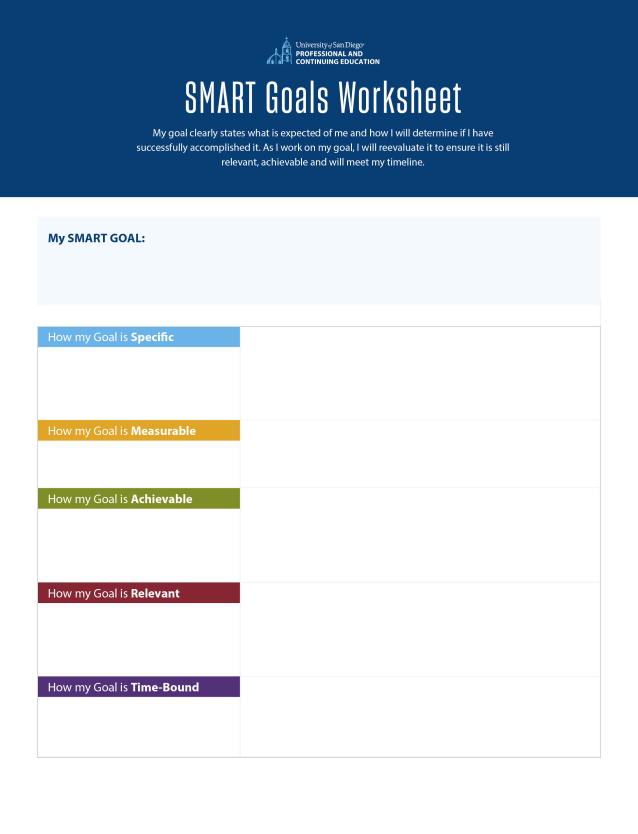
Related Posts

15 Best Examples of Professional Goals [+Tips to Achieve Them]
Published: May 01, 2024
“So, where do you see yourself five years from now?” Oof, that can be a tricky interview question, especially if you’re unsure of your professional goals.

When I graduated from college and started interviewing in my chosen field, I felt like I needed to plan my entire professional life, complete with one concrete end goal.
To be honest, it was overwhelming. I desperately needed actionable advice to plan steps to reach my professional goals.
In this post, we’ll define professional goals, provide examples, and give you tips so you can plan, meet, and exceed the goals you set for yourself.
What are professional goals?
Professional Goals Examples
Tips for Achieving Professional Goals
Work Towards Your Professional Goals

What Are Professional Goals?
Professional goals are achievements or milestones you hope to achieve in your career. These include personal and professional development, skill development, salary increases, career advancement, and switches.
Professional goals are often personal, but they don’t have to be. You can set professional goals for yourself and your team to help improve your organization and elevate it to the next level.

Free SMART Goal Template
A free template to help you create S.M.A.R.T. goals for marketing campaign success.
- Set your goals
- Calculate your metrics
- Evaluate your success
You're all set!
Click this link to access this resource at any time.
What makes a good professional goal?
What separates a professional goal from a wish is that professional goals are attainable and achievable when designed with the appropriate framework.
It’s important to point out that you might have one overarching professional goal, like “become professionally bilingual.”
However, under your overarching goal, you might have smaller, more manageable goals with a specific, actionable framework attached to them to help you reach your biggest goal.
The SMART goal framework is the perfect framework to apply to reach your big and small goals. The letters of SMART stand for:
Let’s examine each letter so that you understand how to structure your goals for maximum achievement.
When writing your own professional goals, you need to be specific. For example, if you want to become bilingual to position yourself ahead of your competition in the job market, you need to be specific about the language you’ll need to learn.
There are over 2,000 languages worldwide, but only one or two will be relevant to your job market. Take some time to research your field before choosing your second language.
In other words, you need to ensure your smaller goal is specific enough to help you reach your overarching goal.
If your goal is measurable, you can easily track your progress. You can make your goals measurable by including a number. For example, if your goal is to learn Spanish, a more measurable goal would be, “Learn five new Spanish vocabulary words.”
The difference between “Learn five new Spanish vocabulary words” and “Learn Spanish” is that you now have something to work on. Making your goals measurable can help break down the task, too.
If your goals aren’t attainable, there’s a good chance they’ll fall into the “wishes” category. By adjusting your goals to your ability, you have something to work towards.
Once you reach your initial goal, you can change your objectives for continued improvement.
Attainable goals are helpful because they help you see how far you’ve come from your baseline. Small wins are encouraging and can help you push through to the end.
The trick to the SMART goal framework is to keep your objectives relevant. For example, if I wanted to learn Spanish as a global sales rep, I would need to focus on learning vocabulary specific to my job.
While watching Spanish comedians might be a great way to learn new slang, it won’t help me communicate effectively and professionally with my clients.
Before setting your goals, ask yourself, “Will this goal help me reach my desired objective?” If the answer is yes, make sure it’s specific enough, measurable, and attainable. If the answer is no, this might be a goal you set aside and pick back up later.
Putting a time frame on your goal helps you increase your motivation and stay accountable for your progress. Plus, when your goals are specific, measurable, attainable, and relevant, you can track your progress and better visualize your wins.
If you’re like me and tend to get off track, SMART goals are your best friend.
Writing and implementing SMART goals can help you reach your professional goals much faster because you can break your ultimate objective into actionable steps. Think of them as your plan for success!
Professional Goal Examples
Ready to set a goal for yourself, but you need some examples? Here are FIFTEEN examples of professional goals:
1. Land an internship
If you’re a college student looking for work experience or want to enter a new industry, landing an internship is an excellent goal. Internships are a great way to gain the skills you need to be successful in your industry.
Plus, you’ll gain insider knowledge. You can acknowledge your experience on your resume, giving you a leg up on your competition.
Pro tip: Check with your local labor unions or your university’s Student Success Center for leads on potential internships.
2. Grow Your Network
When I decided to become a freelance writer, I knew I needed to grow my network and connect with others.
Growing your network is a good idea for many reasons, including collaborating with like-minded people and uncovering career opportunities.
Becoming active on social media platforms, like LinkedIn, and attending in-person meetings is a great way to make yourself available and gain new connections.
Pro tip: If you want to grow your network online, commit to regularly posting updates on social media. Social media management tools can help you keep up with your posts and nurture relationships with your followers.
3. Learn a New Skill
Increasing your skill set is a fantastic professional goal. Think about the skills you need to be successful in your work. Are there any skills you need to brush up on?
Or, if you’re looking to change careers or get a promotion, which skills will make your transition easier? Make a list and find ways to gain those skills, like taking a class or attending a seminar.
Pro tip: After making your list of desired skills, use the SMART goals framework to create an actionable learning plan.
4. Start a Podcast
Kaitlin Milliken, Senior Program Manager HubSpot, made starting a podcast one of her professional goals. Podcasting is a great way to gain technical and interviewing skills.
Milliken says, “One of my professional goals was to start a podcast. I was lucky enough to work as a multimedia producer at a startup that was looking to kick one off. I started by listening to other shows for inspiration — Reply All, The Journal, and Post Reports were really big at the time.
Miliken says she spoke with a few folks who had started their own hobby shows to get a sense of what gear was available within her budget.
"After that, I pitched ideas, wrote scripts, and started booking interviews. The big challenge was finding the time," she says. "I was still reporting stories, making newsletters, and creating videos in my role."
She explains, "I had to be very intentional about blocking off time on my calendar so I could accomplish this professional goal.”
Pro Tip: If starting a podcast is one of your professional goals, listen to related podcasts for inspiration for your own.
5. Earn a Professional Certificate
Depending on your job, you may need a professional certificate to advance your career. As a teacher, I needed to become licensed to teach my chosen subject. So, I spent a lot of time taking education courses to gain licensure.
If earning a professional certificate is on your list of professional goals, look for classes that offer relevant certifications. Then, commit to signing up for and completing the course.
Pro tip: Many companies offer continuing education courses for their employees. Take advantage of these offerings to advance your career and deepen your knowledge base. HubSpot Academy is also a great resource for learning new skills and receiving certifications.
6. Start a New Business or Company Initiative
Your personal goals can double as a company initiative, too. Not only will you benefit from gaining new skills, but your company benefits from your efforts, too. Caroline Forsey, Principal Marketing Manager at HubSpot, made starting a new company-wide initiative one of her professional goals.
Forsey says, “A professional goal I set for myself was to own the first thought leadership program at HubSpot -- I succeeded in doing so by leaning into team and company-wide goals and ensuring my program became indispensable to hitting those goals."
She explains, "So, for instance, I knew our team-wide goals were to grow organic traffic on the SERPs."
Rather than leaning into social or email views for my program, Forsey ensured she kept organic views top-of-mind with each piece of content she created for the program.
"I continued to ask myself: Does this have search intent? Is there MSV? Can I make it more SEO-optimized?" she explains. "It's always tempting to lean into personal interests when creating and working towards a goal, but it’s critical you keep the larger picture top-of-mind if you want it to gain buy-in from stakeholders.”
7. Become a Pro at Time Management
If you’re anything like me, the workday can slip by before you know it. And in times like that, productivity seems to go out the window. Becoming better at time management is an excellent professional goal and a necessary skill for many jobs within any industry.
To improve your time management, you might need to reduce your distractions or use a planner to schedule your workday.
Pro tip: Time blocking is a fantastic way to stay on task. At the start of each day, write down your to-do list and break it into smaller chunks that you can complete in a certain amount of time. Then, commit to completing those tasks during your given timeframe.
8. Increase Your Sales
If you’re in sales, you know how important it is for your company to reach your sales and revenue targets yearly. So, setting “Increase My Sales” as a personal and professional goal is not a bad idea. Take a look at your numbers, then determine where and how you need to improve it.
Pro tip: Check with your managers about their sales enablement program. Sales enablement can help you learn how to manage your sales more effectively.
9. Be a Star Employee
Becoming a star employee is really about advancing your career within your company. Erica Santiago, Marketing Manager at HubSpot, made this one of her professional goals and told me how she did it.
Santiago says, "A professional goal of mine at HubSpot was to really own a lane in terms of content so that I could be a go-to for certain projects and really get my name out in the company."
She says she noticed other writers and contributors seemed to really own a topic, and it helped them stand out.
"I wanted to do the same to set myself up for opportunities," she says. "I achieved this by taking a moment to ask myself what my strengths are, what topics I enjoy, and how these things tie in with HubSpot's greater goals."
Eventually, Santiago realized that the creator economy is a topic that she's really familiar with, thanks to the content creation she does outside of HubSpot.
She then realized there are content creators who could benefit from HubSpot’s marketing products and blog content.
"From there, I took it upon myself to write more content centered on creators and eventually started my series 'The Creative,'" she explains. "It‘s still getting off the ground, but the content that’s come out so far has proven it to be a promising project."
She continues, "Now, I‘m regularly assigned creator economy-based content, and I’ve carved my own niche within the marketing blog.”
10. Become a Mentor
If you feel you have a lot of industry experience and knowledge to share, consider making "Become a Mentor” one of your professional goals. As a mentor, you’ll gain leadership skills, like teaching, while positioning yourself as a leader in your field.
Pro tip: If you want to become a mentor, consider partnering with your manager to design a mentorship program for new employees. If your organization already has a mentorship program, sign up to share your knowledge with others.
11. Create a Work-Life Balance
As someone who works from home, it can be tempting to work 24/7. But one of the biggest reasons I started my own business was to have time for the things I wanted to pursue—like running a half marathon and working on my personal blog.
So, making it a goal to create a better work-life balance was a must! Time to refresh and recharge is critical to decreasing the chance of burnout.
Pro tip: Commit to keeping your work at work. That means getting into the habit of leaving unfinished tasks on your desk for the next day. You can always pick up on your tasks later.
12. Get a Promotion
Many people share the professional goal of working towards a promotion, which often comes with a salary increase.
Martina Bretous, Editor of HubSpot’s Next in AI blog, made getting a promotion her goal. But she didn’t sit idly by and wait for her managers to notice her. Instead, she made a plan and shared it with me.
Bretous says one of her professional goals was to become a blog editor at HubSpot.
"The first thing I did was ask blog editors to shadow them. This was a key part of my learning," she recalls. "I had to understand the day-to-day of the role and ask questions to understand initiatives, goals, and challenges.
She then took any opportunity to fill in when an editor was out of the office. This gave her the hands-on experience she was looking for before she was actually in the role full-time.
"All of this prep work set me up nicely so that when an opportunity presented itself to fill in that role, I was a shoo-in because I knew the property very well," she says. "Other editors could recommend me as someone who understood the blog and confirm that I had hands-on experience."
13. Become a Pro at Technology
Technology is constantly changing, which sometimes means our jobs change with it. If using technology is integral to your job, consider becoming a pro or super user of your tech stack.
This will help keep your skills current and set you up as the office go-to for assisting others in learning, too.
Pro tip: Depending on the tech you use in the office, many organizations offer training courses on how to use their products. Sign up for their email newsletter to stay on top of their training and product releases.
14. Publish Your Research
Publishing your research can set you up for success and position you as an industry expert. Consider writing and publishing your work in industry publications if this is a career goal.
You’ll gain new writing skills and learn how to promote your work to experts in the field.
Pro tip: Research industry publications and their submission guidelines. Each publication may have different submission guidelines, and it’s helpful to know them upfront to save time in the submission process later.
15. Receive an Award
It’s nice to be recognized for your dedication and hard work. Plus, recognition can add to your credibility and credentials as an expert. Receiving acknowledgments and an award takes time, though.
But if this is your professional goal, it’s well worth the effort.
Pro tip: Consider the backgrounds of the award winners within your industry. What did they do to stand out amongst the crowd? Use what you learn from their experiences to map your own path to success.
Be sure to make it your personal roadmap, though, to stand out.
Ready to set your goals in motion? Here are five tips from me and our HubSpot experts for achieving professional goals.
1. Lean Into Your Network
Your network is a gold mine of opportunity. Instead of “gold mine,” rebrand it to “goal mine.”
Milliken offers expert advice on using your network to achieve your professional goals:
“Make the most of your network. The chances are there’s someone you already know who has accomplished the professional goal you want to achieve. In my experience, people have been really generous about sharing their advice. You just need to reach out.”
2. Break Your Goals Down
If you’re not careful, your professional goals can become too big to achieve and manage. Instead, follow Bretous’ advice and break your goals into smaller pieces.
Bretous says, “My advice to anyone with a goal is to break it down into bite-size pieces. Because having a goal can get overwhelming when you see how much you have to accomplish to get there."
She explains, "To avoid that, break it into measurable, smaller goals that you can tackle on a daily or weekly basis. And don’t forget to lean on colleagues and managers for help in achieving this goal.”
3. Find a Mentor
You don’t have to tackle your goals alone. Support, especially from a mentor or manager, is invaluable.
Santiago suggests reaching out to your manager.
“Share your goals with your manager so they can help steer you in the right direction," she explains. "When I first thought of The Creative, I wasn't sure how to pitch it or what direction to take it in. So, I reached out to my manager, and he helped me fill in the blanks."
4. Be Your Own Advocate
Advocating for yourself is a tough lesson to learn. However, if you want to achieve professional goals, you need to learn to be your own advocate.
Forsey agrees and offers two essential tips for advocating for yourself. Forsey says, “My tip for achieving personal goals is a) ensure your personal goals are aligned with larger business goals, and b) be a major advocate for yourself!"
She explains, "Let people across the company know the impact your goals are having on the company— and, equally importantly, make sure your manager as well as leadership is aware of your personal goals."
Forsey says to continue asking your manager things like, “My personal goal is X. What is your advice on how to get closer to that goal?” or “My personal goal is X. How am I measuring up when it comes to meeting that goal?”
"Having leadership aware of your personal goals helps create personal momentum even on the days that you're feeling less motivated," she says.
5. Seek Feedback
My last tip for achieving professional goals is to seek feedback. In my experience, feedback is an invaluable tool for guiding your personal improvement.
If your manager doesn’t directly offer feedback, don’t be afraid to ask for it. Their insights into your work can help you identify areas for improvement that you might not have been aware of.
Work Toward Your Professional Goals
Professional goals are more than things to check off your to-do list. Instead, they help advance your career and give you a purpose for your hard work.
Don’t let your goals get out of hand, though. Set yourself up for success by using the SMART goals framework and breaking your goals into smaller tasks. With this framework in place, you’ll hit your targets in no time!

Don't forget to share this post!
Related articles.

How to Give Productive Feedback, According to HubSpot Managers & Editors

25 Best Slack Alternatives for Working Effortlessly in 2024

50 Fun Corporate Team-Building Activities & Outing Ideas Everyone Will Enjoy

The 24 Best Motivational Speeches Our Employees Have Ever Heard
![travel smart goals examples How Marketers Collaborate Effectively Across Departments [According to HubSpot Marketing Leaders]](https://blog.hubspot.com/hubfs/collaborate-across-departments.jpg)
How Marketers Collaborate Effectively Across Departments [According to HubSpot Marketing Leaders]

45 Quotes That Celebrate Teamwork, Hard Work, and Collaboration

22 Marketing Collaboration Tools to Improve Productivity and Teamwork

Project.co Reveals Project Management Statistics & Themes They’ll Be Watching in 2021

How to Adapt Your Communication Style to Every Type of Colleague

How to Disagree Without Being Disagreeable: 7 Tips for Having More Productive Discussions
A free template to help you create SMART goals for marketing campaign success.
Marketing software that helps you drive revenue, save time and resources, and measure and optimize your investments — all on one easy-to-use platform

IMAGES
VIDEO
COMMENTS
Here are a few examples of SMART goals in this specific area of travel: Take a road trip along the Pacific Coast Highway from San Francisco to San Diego within the next year Take a road trip through the Scottish Highlands within the next 3 years Go on a road trip through the Australian Outback within the next 2 years
3.2 Visit all the National Parks in the USA. 3.3 Take an Epic US Road Trip. 4 Cultural Travel Goals. 4.1 To Get to the Heart of a Different Country. 4.2 Visit every Spanish speaking country in the World. 4.3 Visit the Holy Land of Israel. 5 Family Travel Goals. 5.1 To Show our Kids the World. 5.2 To Let Our Child Attend a Green School in Bali.
A SMART (Specific, Measurable, Achievable, Relevant & Time-bound) goal example could be: "Visit five European countries within three months while staying on a $50 per day budget." This goal is clear in its purpose (visiting Europe), quantifiable (five countries), realistic (budget constraint), relevant to one's interest in Europe exploration ...
Open a travel bank account and put aside a small portion of each paycheck. Cut down on extra expenses and deposit the extra money into the vacation fund. Put extra income, such as bonuses, into the fund. Take on a part-time job or a side hustle to earn vacation money. Hold a yard sale to raise funds for your trip.
Examples of some fun goals could be visiting all the Trappist breweries in Belgium, learning 5 words in Portuguese each day during a month-long trip to Brazil, and trying 20 different flavors of Kit Kat while in Japan. ... Make sure your travel goals are SMART. As mentioned above, if your goals are not specific, measurable, actionable, relevant ...
Make it a goal to decide what you're willing to give up in the short term to gain what you truly want to have in life long-term. 19. Buy a One-Way Ticket. A one-way ticket halfway across the world is one of the scariest but most rewarding things you can do. It is the ultimate travel goal in a person's lifetime.
Bungee Jumping. This one is personally not on my travel goals bucket list, but it is a very popular one especially if you are planning a trip to New Zealand where all the adrenaline junkies live. Seriously though, New Zealand has some of the craziest bungee jumping, drop swings, skydiving, and ziplining in the world!
8. Tell everyone. Accountability is key! Sharing your travel goals with others increases your chances of sticking to them (65% more likely to achieve them!). And better yet, find someone to join you in your travel goals and stick together! 9. Take the first step. A journey of a thousand miles begins with a single step!
I'd like to take you through my travel goal writing process. SMART Goals for Travelers don't include "Travel More" ... SMART Goals for Travelers Example. Let's take a look at one of my goals: to visit every National Park in the United States. Realistically, I know that I am unlikely to visit every National Park within the next year ...
The first example has a where, when and who will be traveling, while the second example is just an idea. ... Setting a SMART goal for travel not only requires that we set the actual date for travel that we work toward, but that we also research and set specific time-goals along the way. So, while we've figured out that we can save $8000 in a ...
Step1: Create a travel goals wishlist. First, you would like to create a wishlist. It's like a list of your dream places to visit. This is very similar to a "someday-maybe" places to visit list. You don't have to set deadlines or make SMART travel goals (yet). You just set an intention to visit this place someday.
Here is an example of a full SMART goal statement: "I want to learn how I can apply my experience managing a classroom in Thailand to managing projects in my future career. This will help me differentiate myself against other candidates for my dream job at the UN.
This is where creating a SMART goal really helps you define what you want and how you will achieve it. "SMART" stands for: SPECIFIC: A goal needs to really focus in on the specifics. Think of the who, what, when, where, and why. MEASURABLE: Establish criteria for which you will measure your progress on your goal.
2. Visualize your goal and the potential obstacles. Positive thinking can actually improve life satisfaction and outcomes according to scientific research. Here are activities to visualize your goals and reinforce your optimistic mindset. Create a vision or Pinterest board with images for your dream destination.
10 examples of SMART goals. Before setting your own professional and personal goals, it may help to see some practical examples. Take note of these leadership, personal development, and work goals: 1. SMART goal for running a marathon. Specific: I'd like to start training every day to run a marathon.
Now that we've discussed what SMART goals are and provided you with the template and complementary information you need to begin writing yours, let's consider a couple of examples of how SMART goals can look in professional settings to give you some initial ideas. . 1. Build a remote freelancer onboarding process.
Here are 13 examples of SMART goals for travel agents: 1. Increase Sales. "I'll increase the number of customers who choose to book travel with my agency by 10% within 6 months. I will leverage social media, search engine optimization, and partnerships with other businesses to reach a larger audience.". Specific: The goal is well-defined ...
This approach eliminates generalities and guesswork, sets a clear timeline, and makes it easier to track progress and identify missed milestones. An example of a SMART-goal statement might look like this: Our goal is to [quantifiable objective] by [timeframe or deadline]. [Key players or teams] will accomplish this goal by [what steps you'll ...
The origin of the SMART framework. 2 How to write SMART goals. 3 10 examples of SMART goals. 1. SMART goal for getting fit. 2. SMART goal for completing a personal project. 3. SMART goal for improving relationships.
Time-bound: I'll start writing next week and will have fifty-two blog posts one year from today. Complete SMART Goal: Starting next week, I will post a 1,500-word article on my blog each week for a year, culminating in fifty-two blog posts and increased traffic to my site. 3. Reading More Books.
SMART goals are statements that meet certain criteria.SMART is an acronym that stands for specific, measurable, achievable, relevant, and time-bound.Defining SMART goals makes success more likely. Use SMART goals at work to complete tasks and improve processes. These are the criteria that all SMART goals for work need to meet: . Specific: Think about the teams and people involved in a specific ...
SMART GOAL EXAMPLE #3: Increase website conversion rate by 25% in Q2. Specific: You want to further refine the goal by defining the specific tactics required to achieve the goal, as well as who will need to be involved to implement those tactics. Be clear about:
Traveling can be fun, exciting, and adventurous. However, it doesn't come cheap. You can travel the world and be smart when it comes to budgeting your adventures now and in the years that follow.
How to Create Smart Goals for Teachers. Creating SMART goals is easier than you might think because the concept can be applied to nearly every aspect of education. Use these steps to set your own SMART goals. Identify a specific objective. Get granular about what you want to improve, for example, increasing student engagement and participation.
However, under your overarching goal, you might have smaller, more manageable goals with a specific, actionable framework attached to them to help you reach your biggest goal. The SMART goal framework is the perfect framework to apply to reach your big and small goals. The letters of SMART stand for: Specific; Measurable; Attainable; Relevant ...